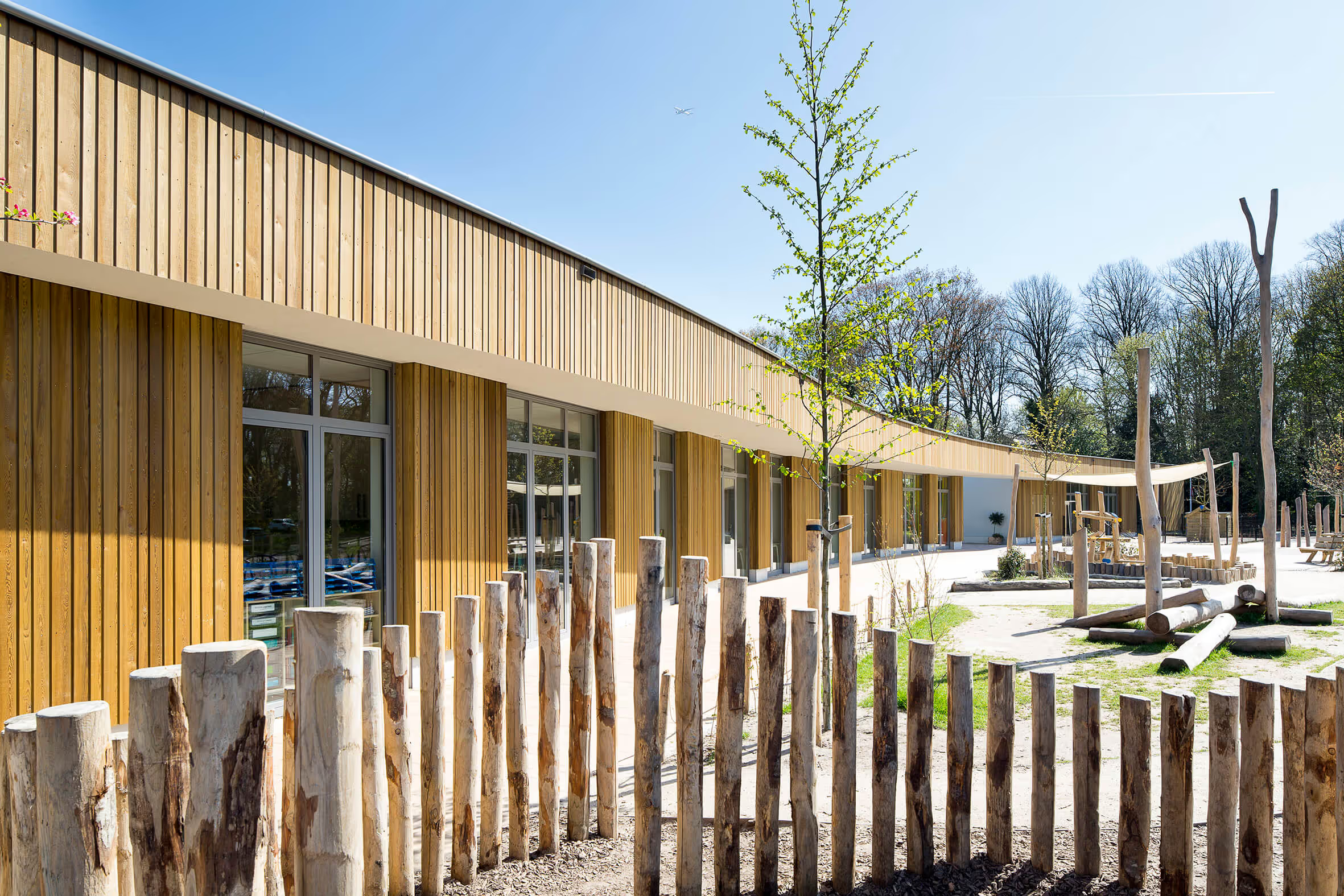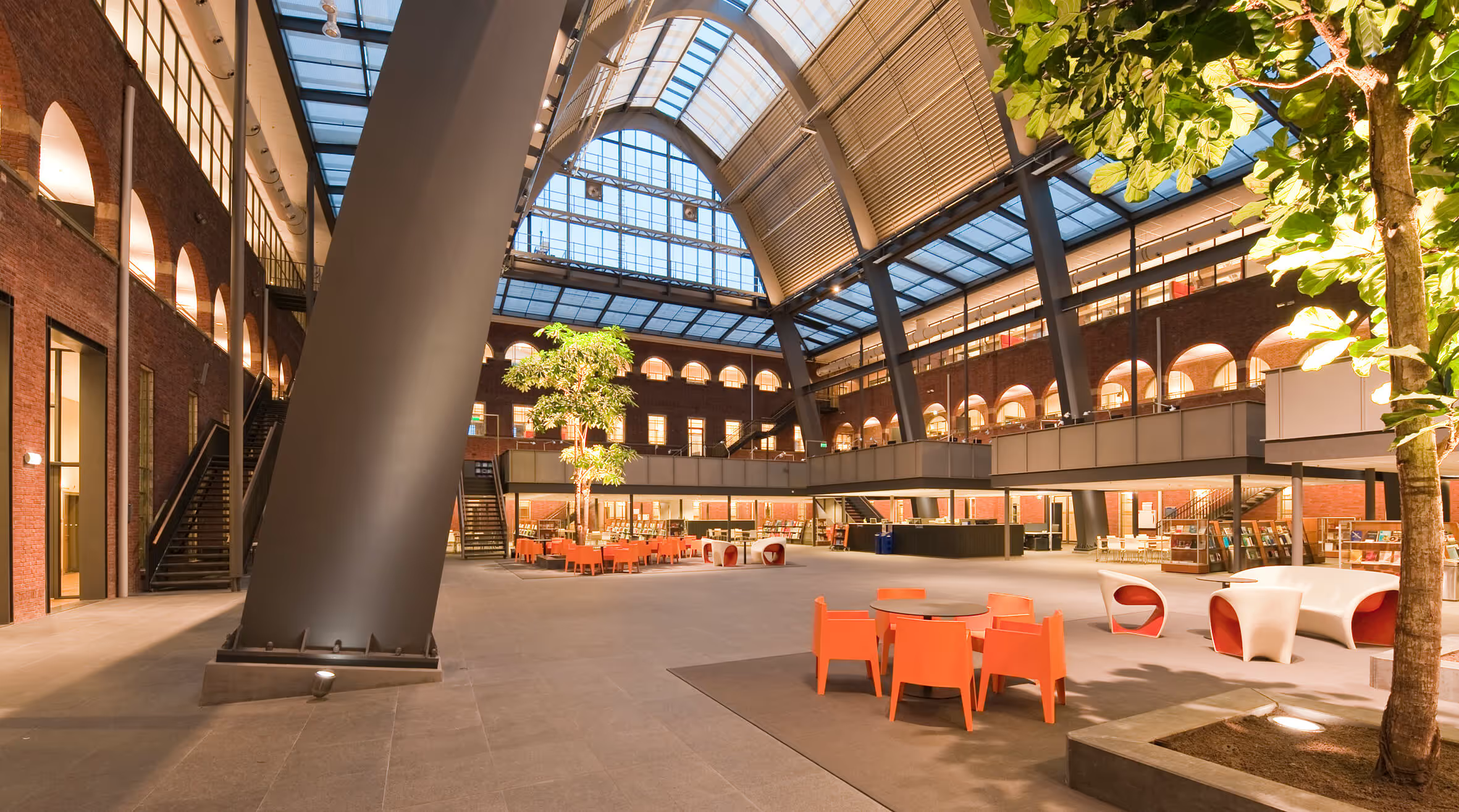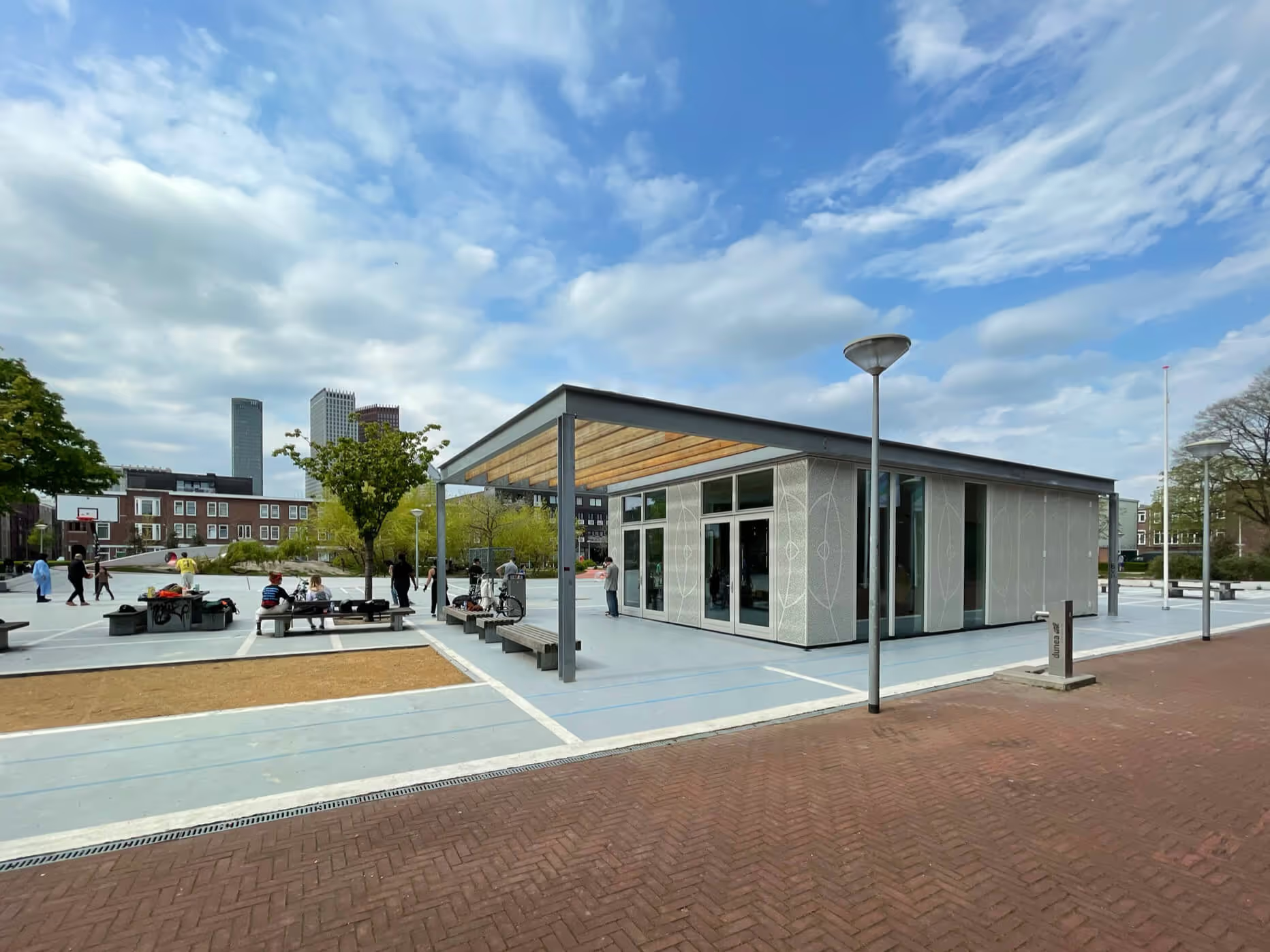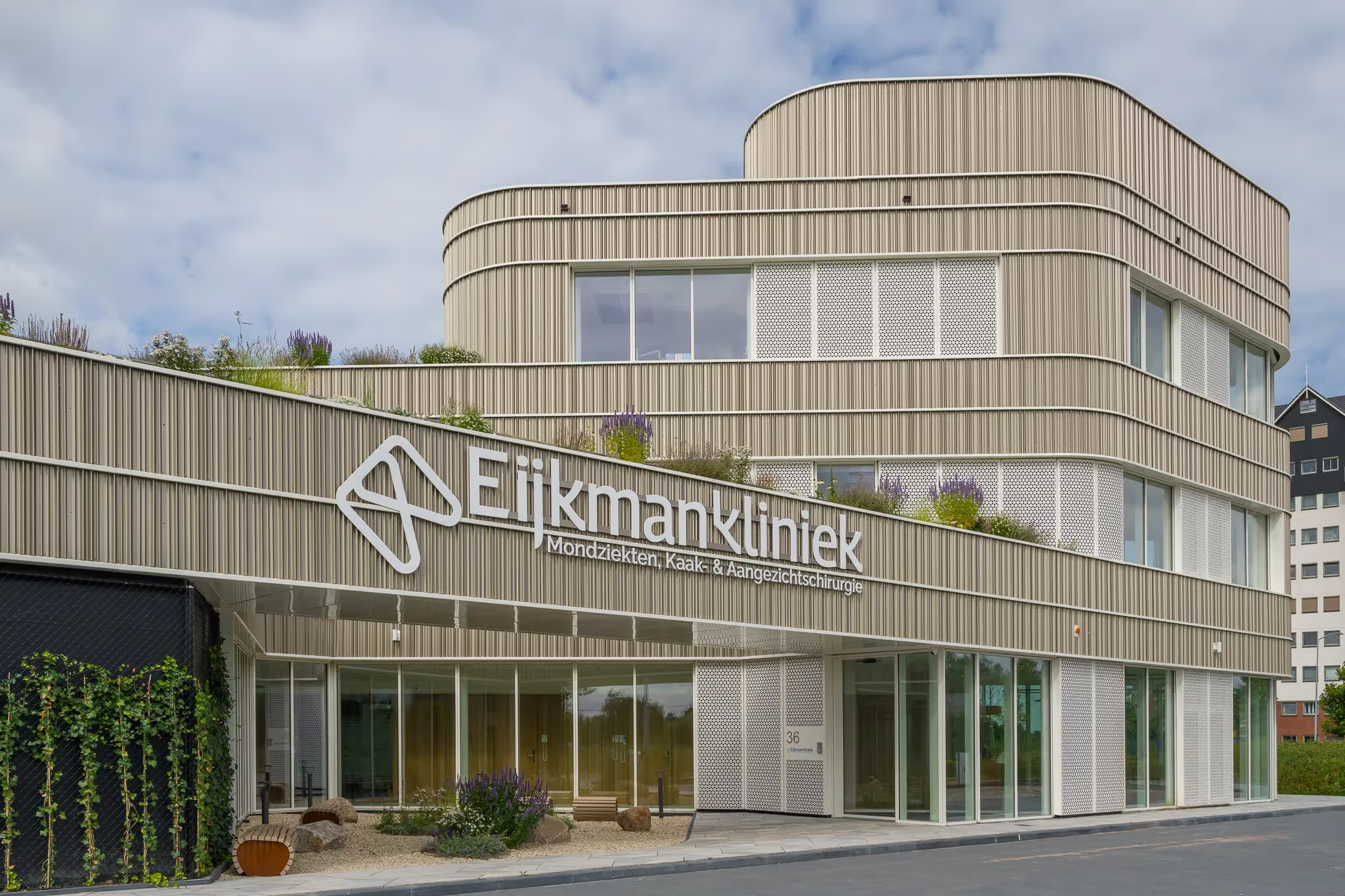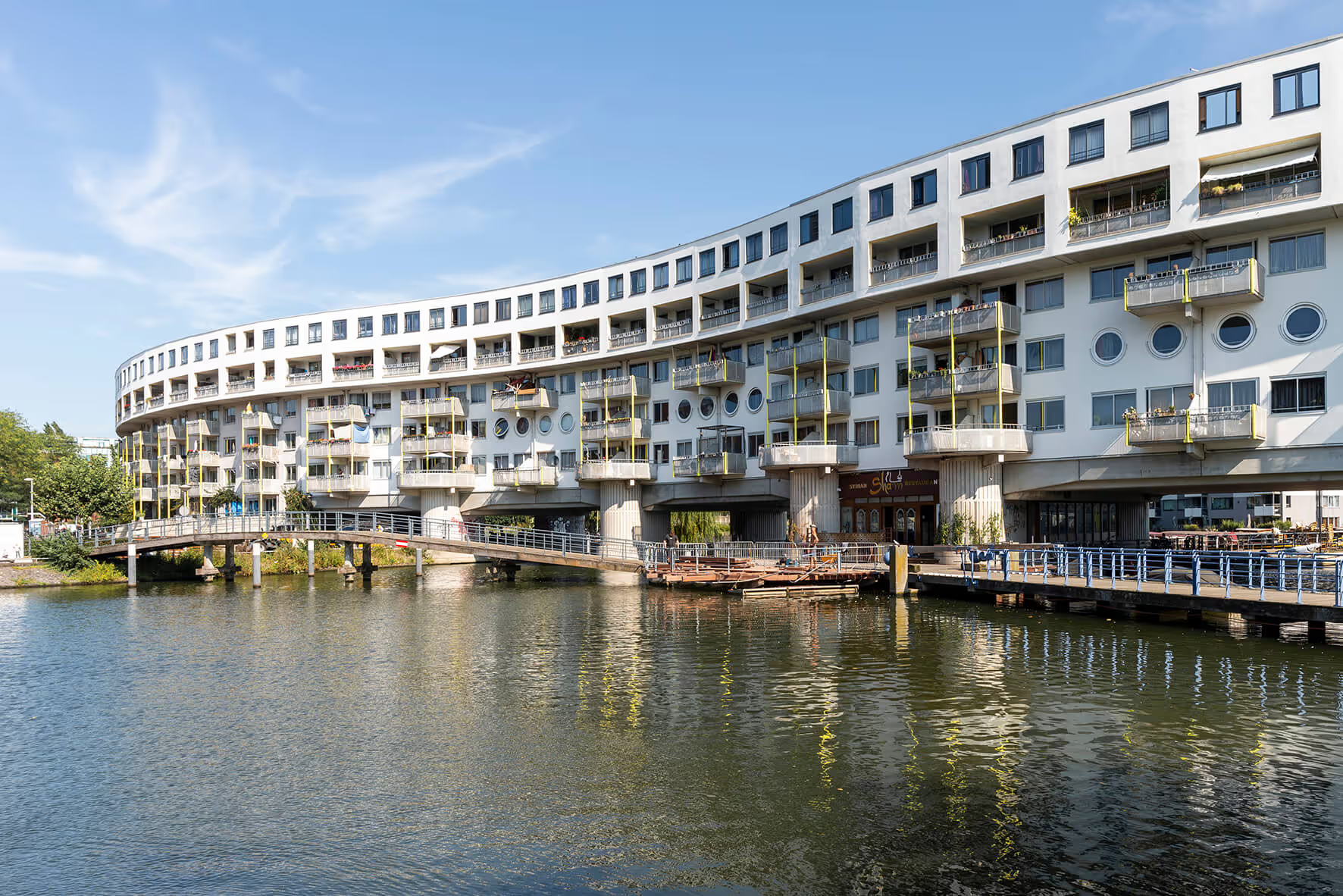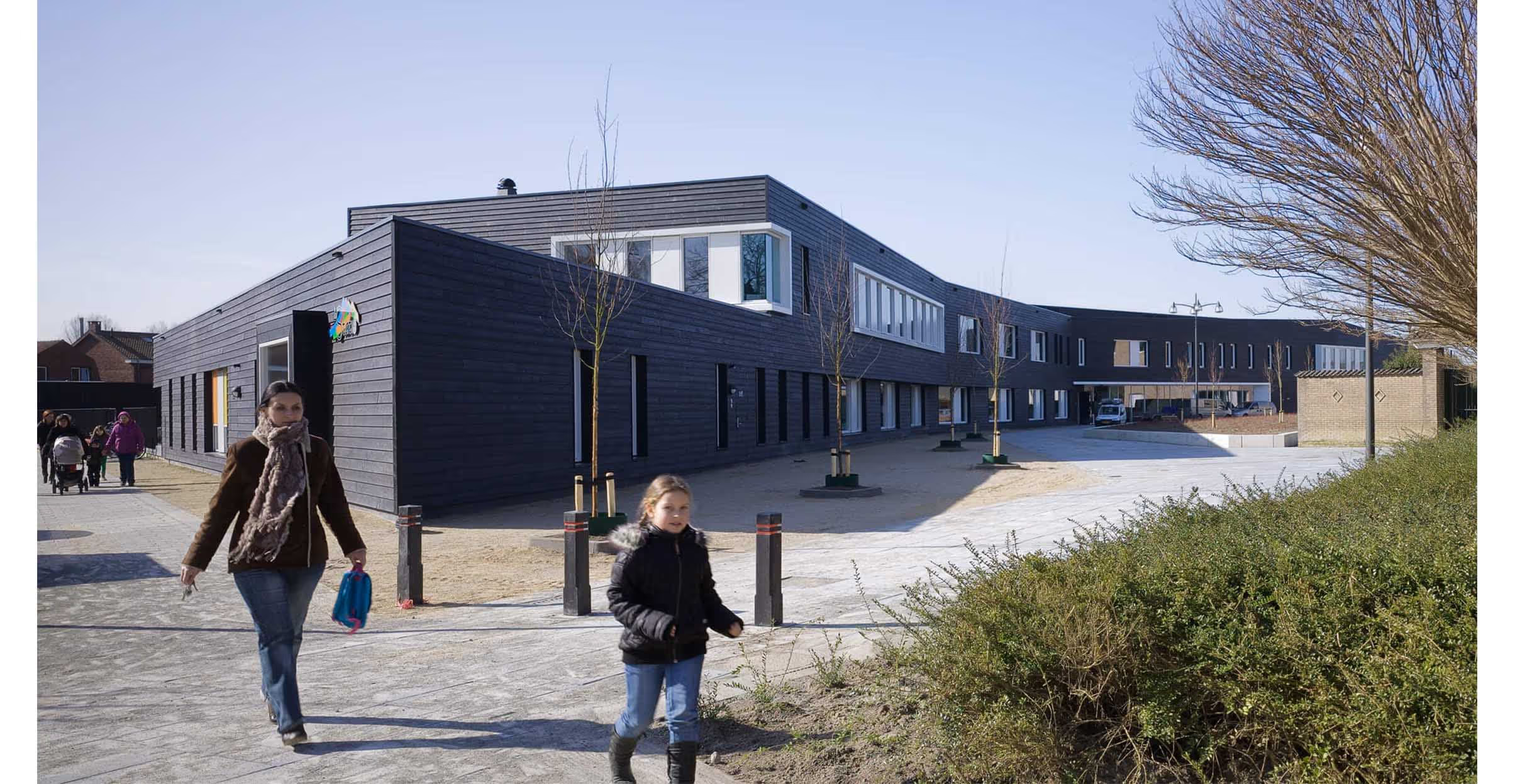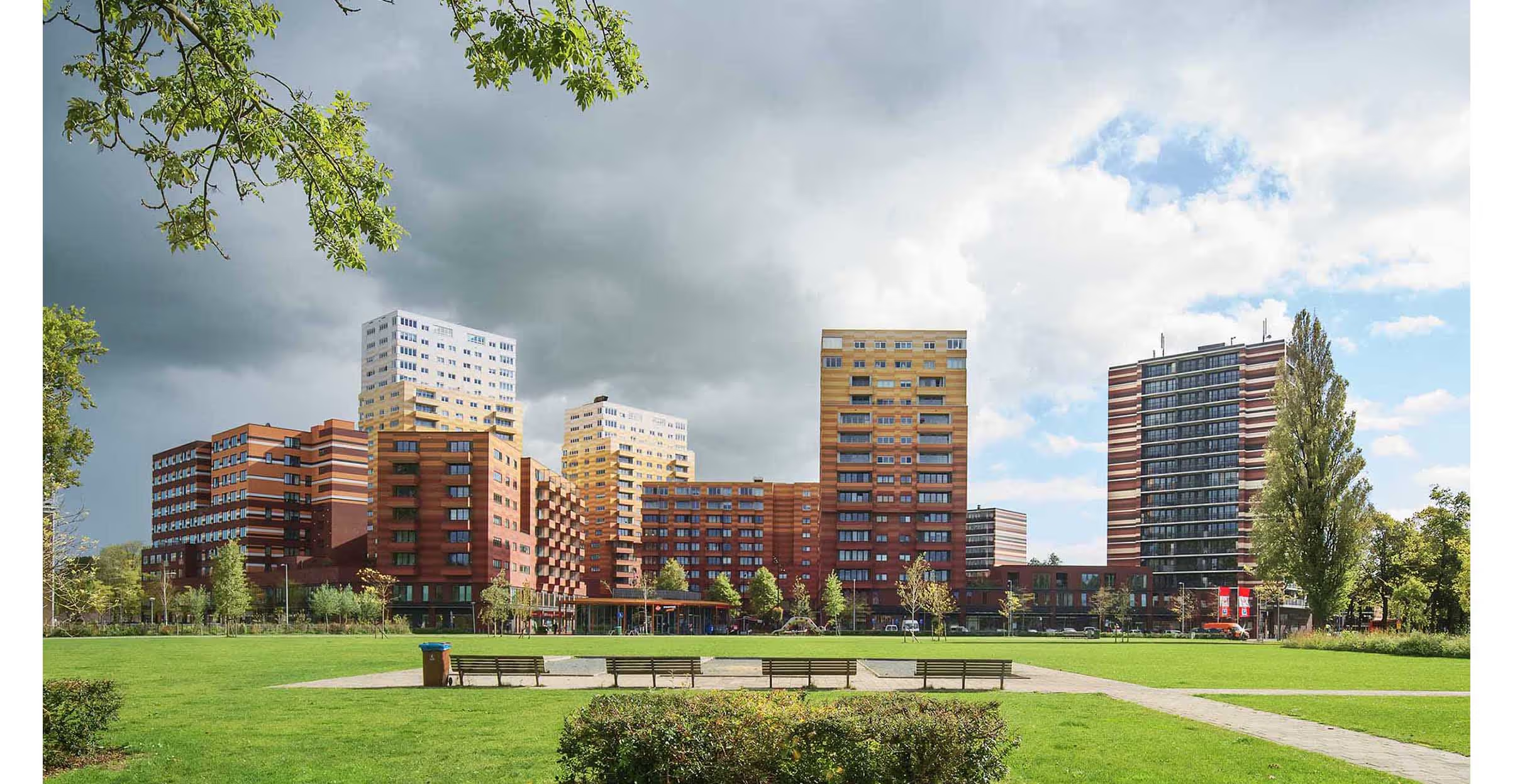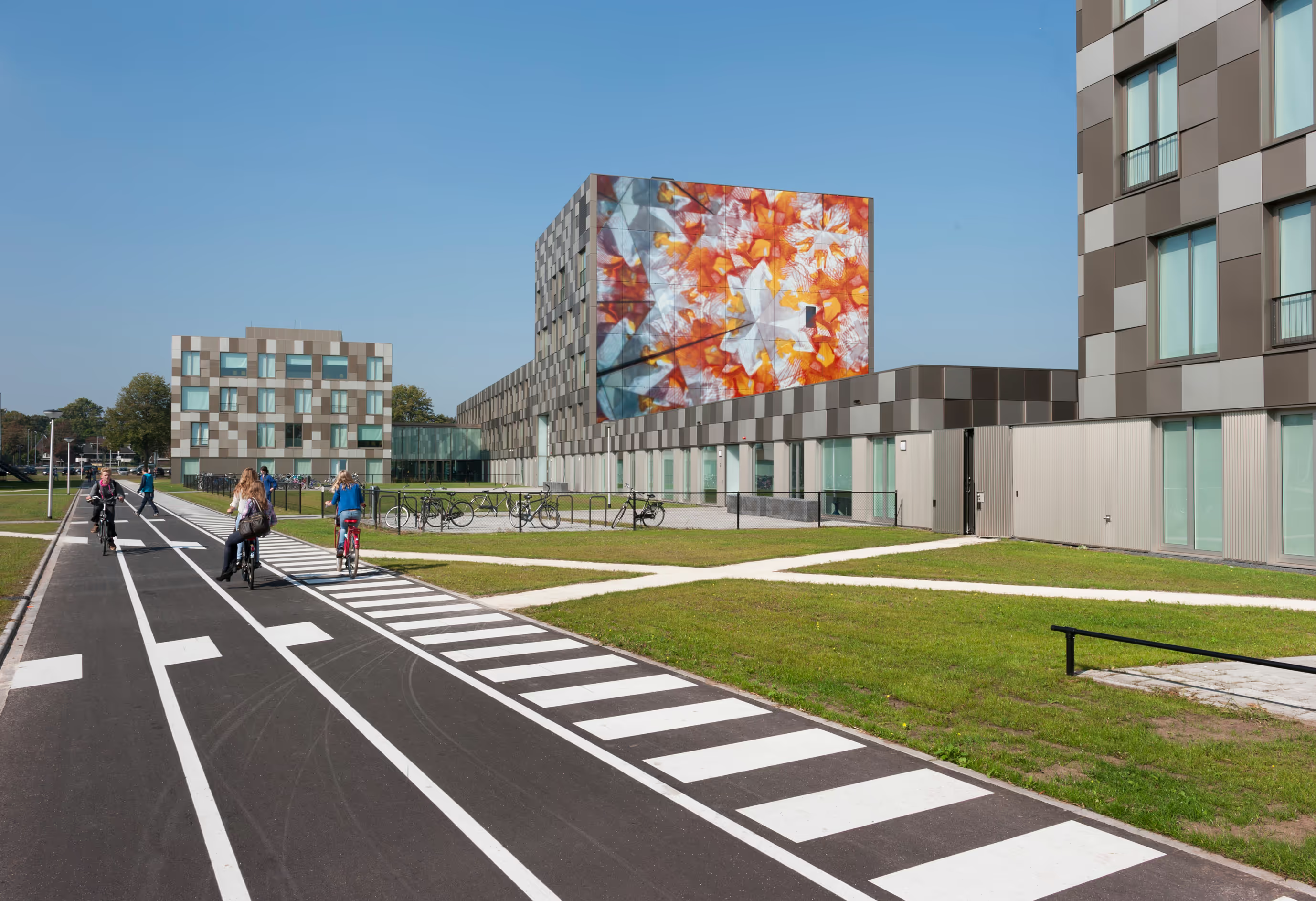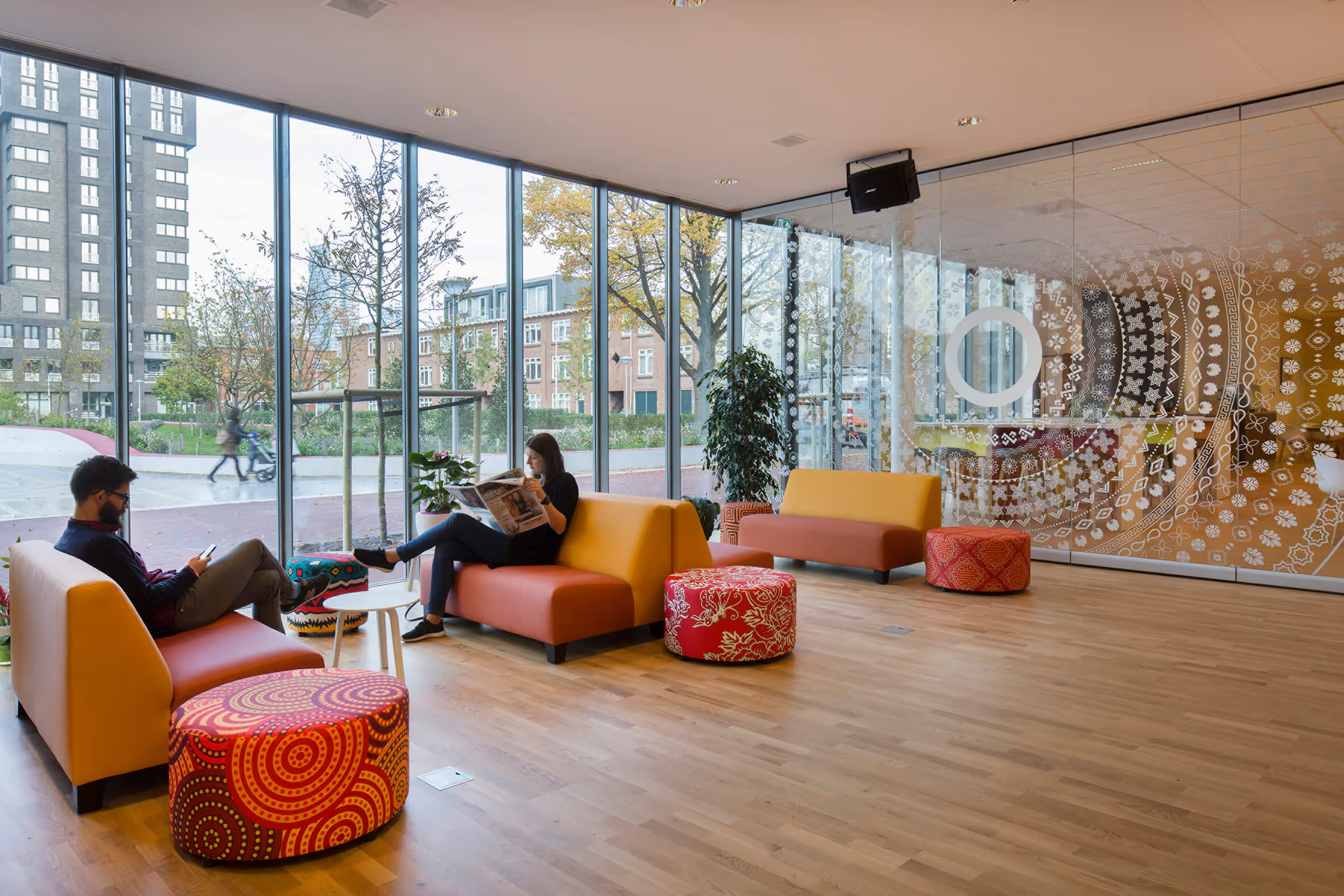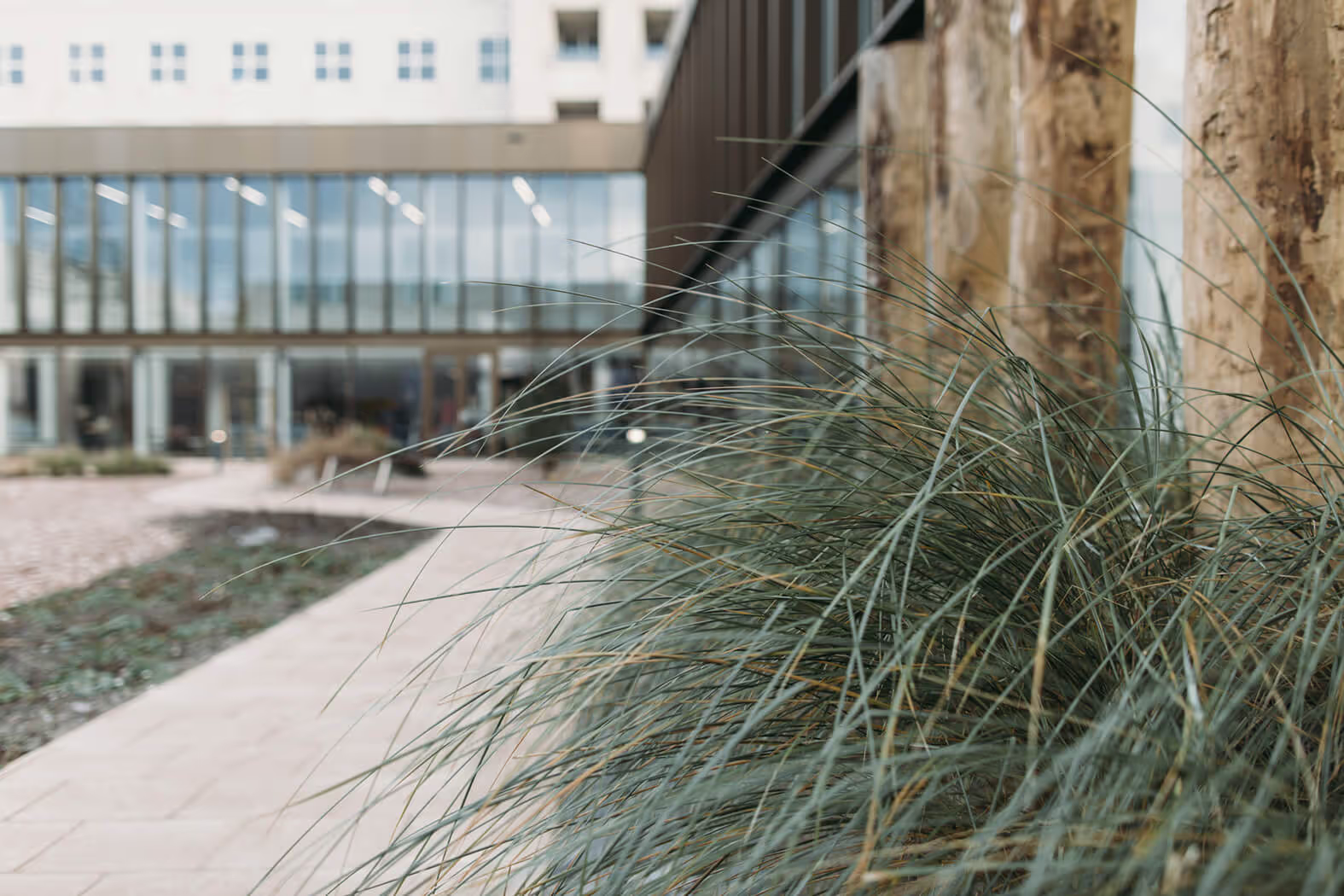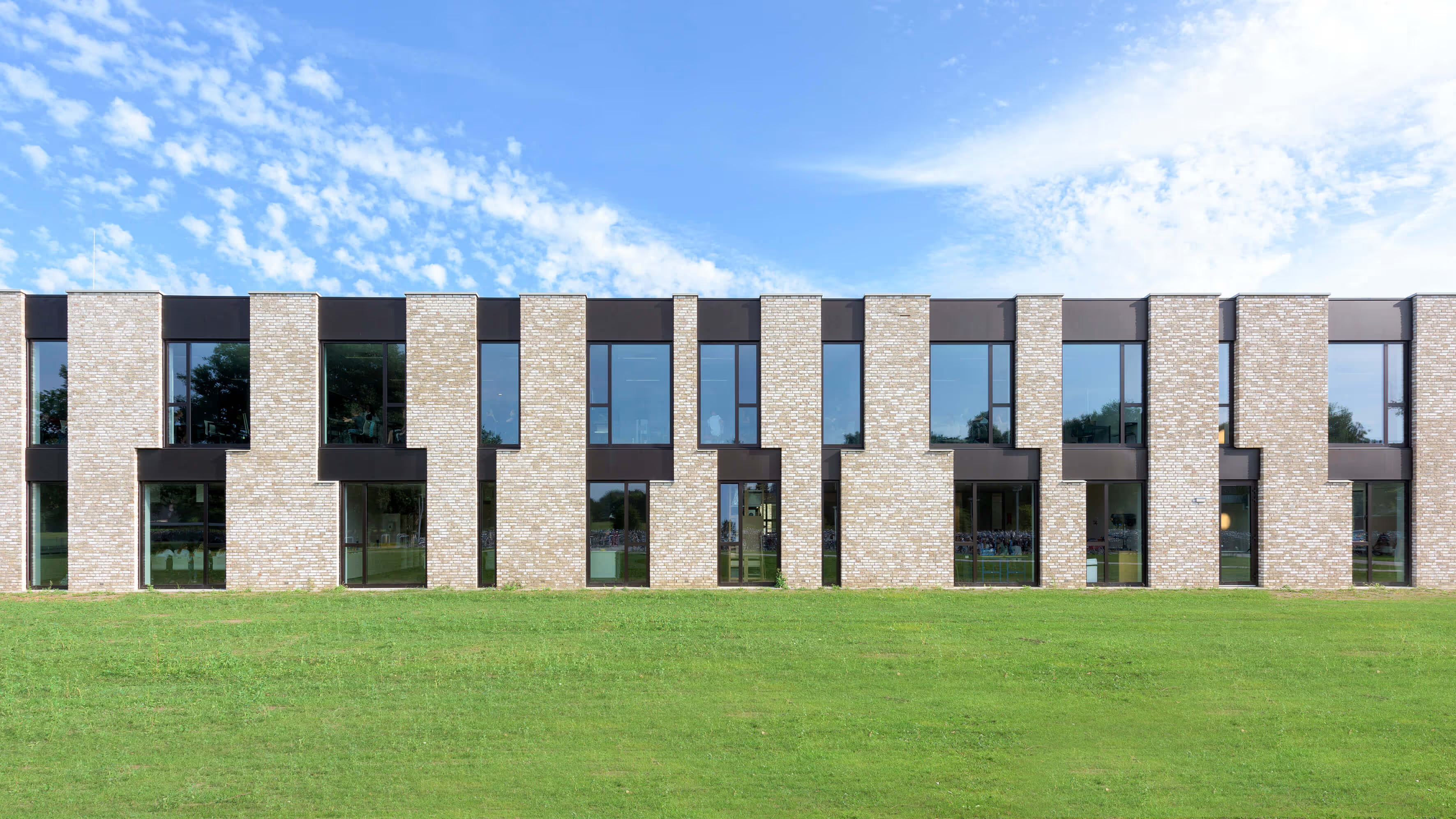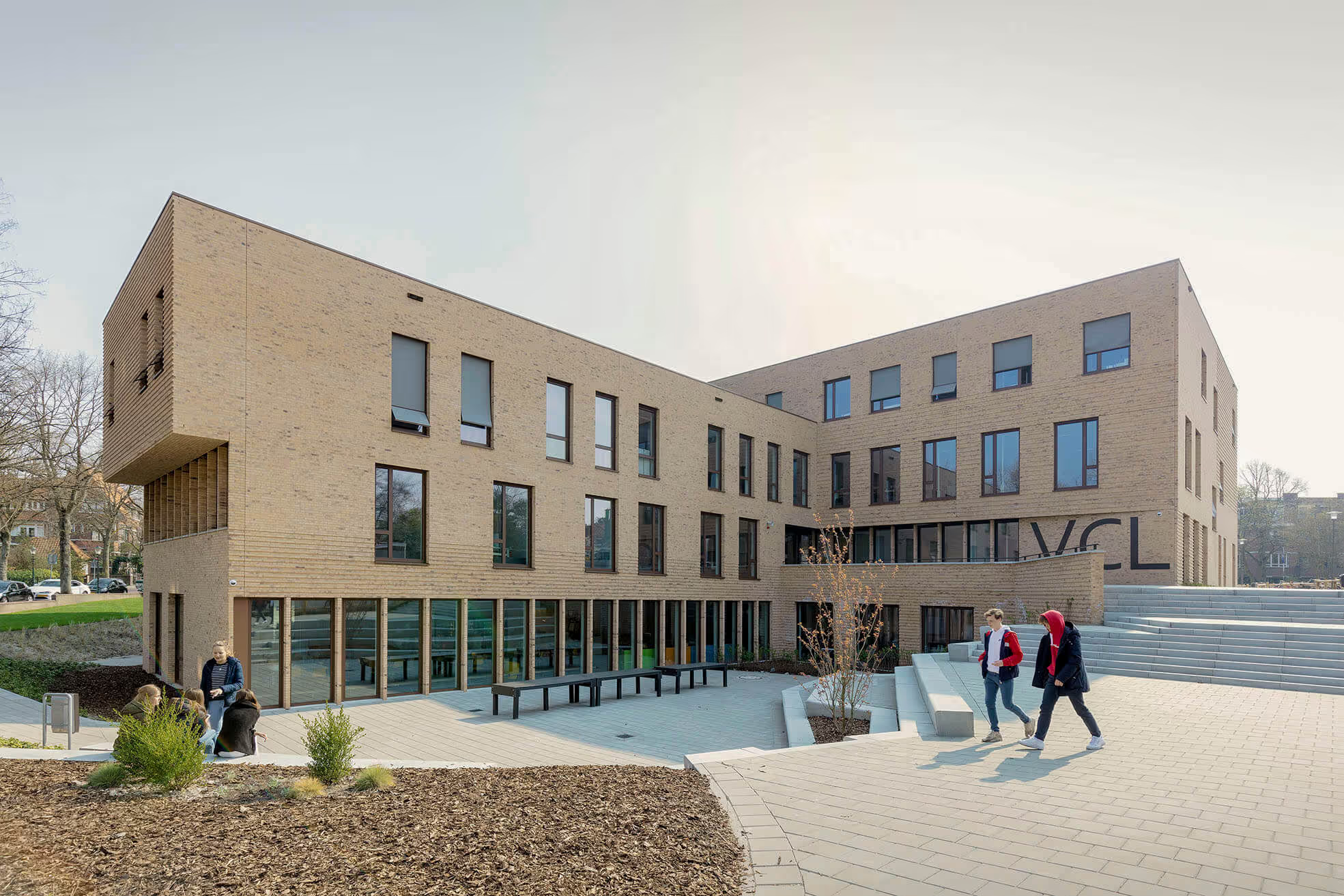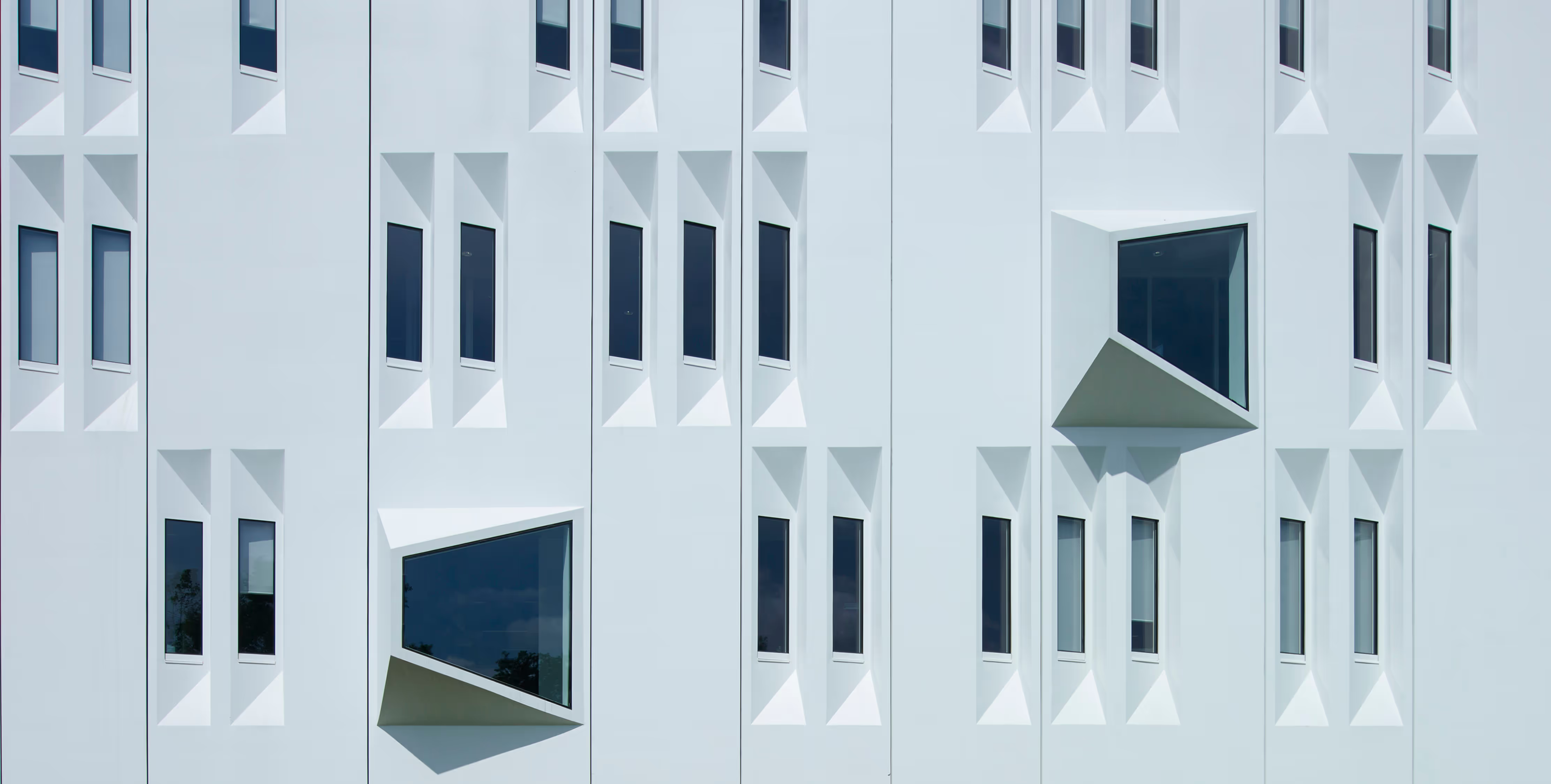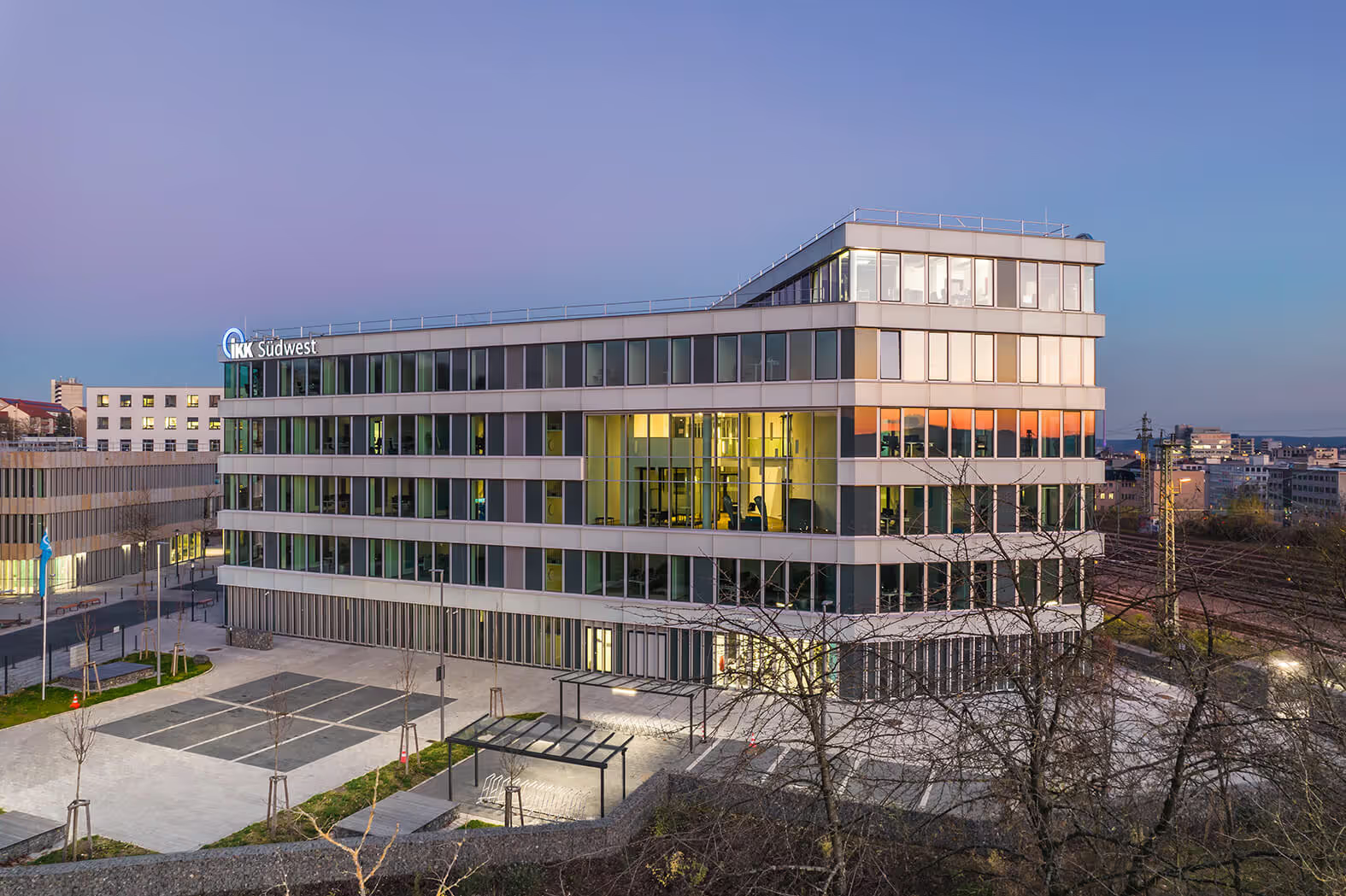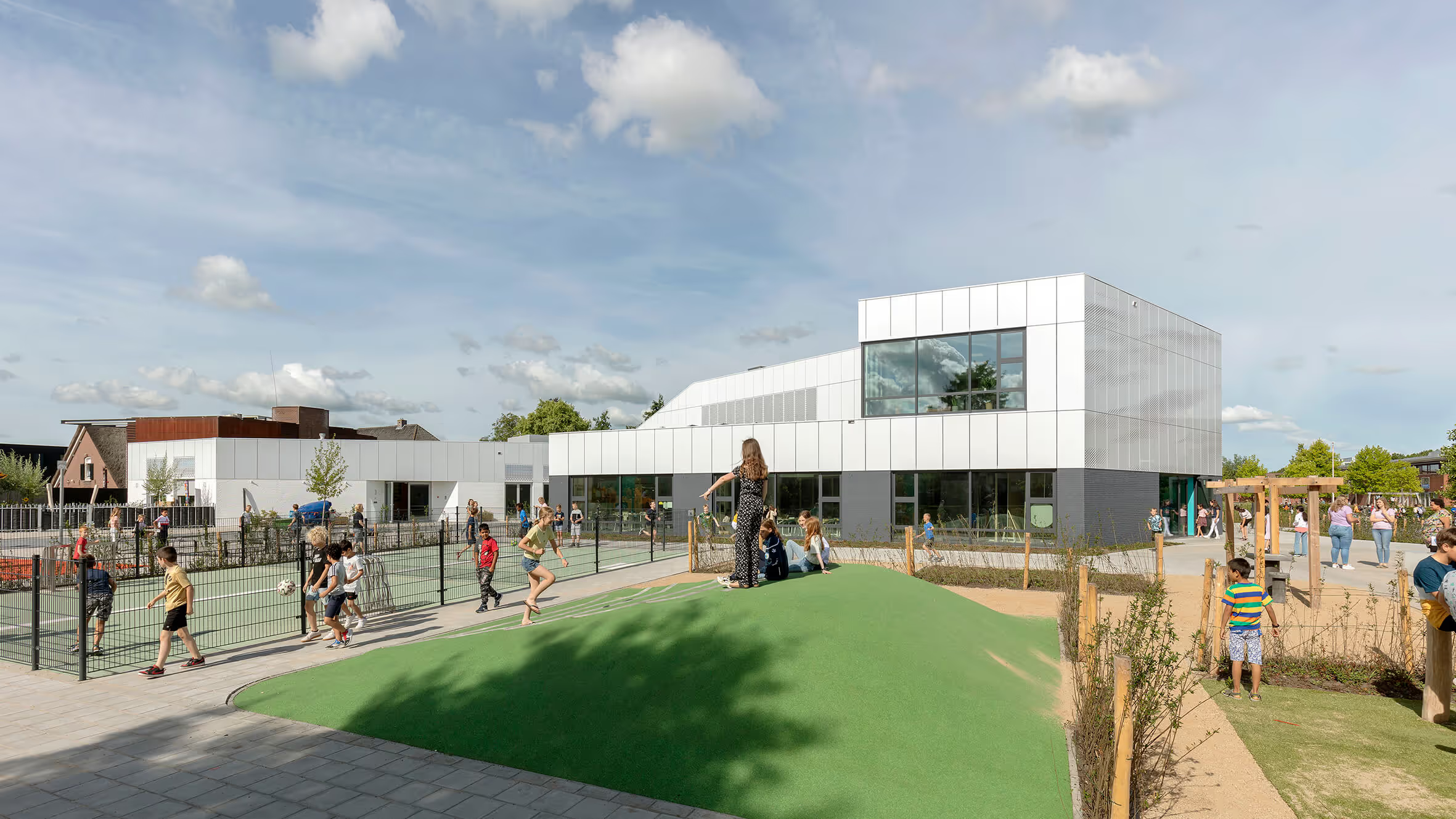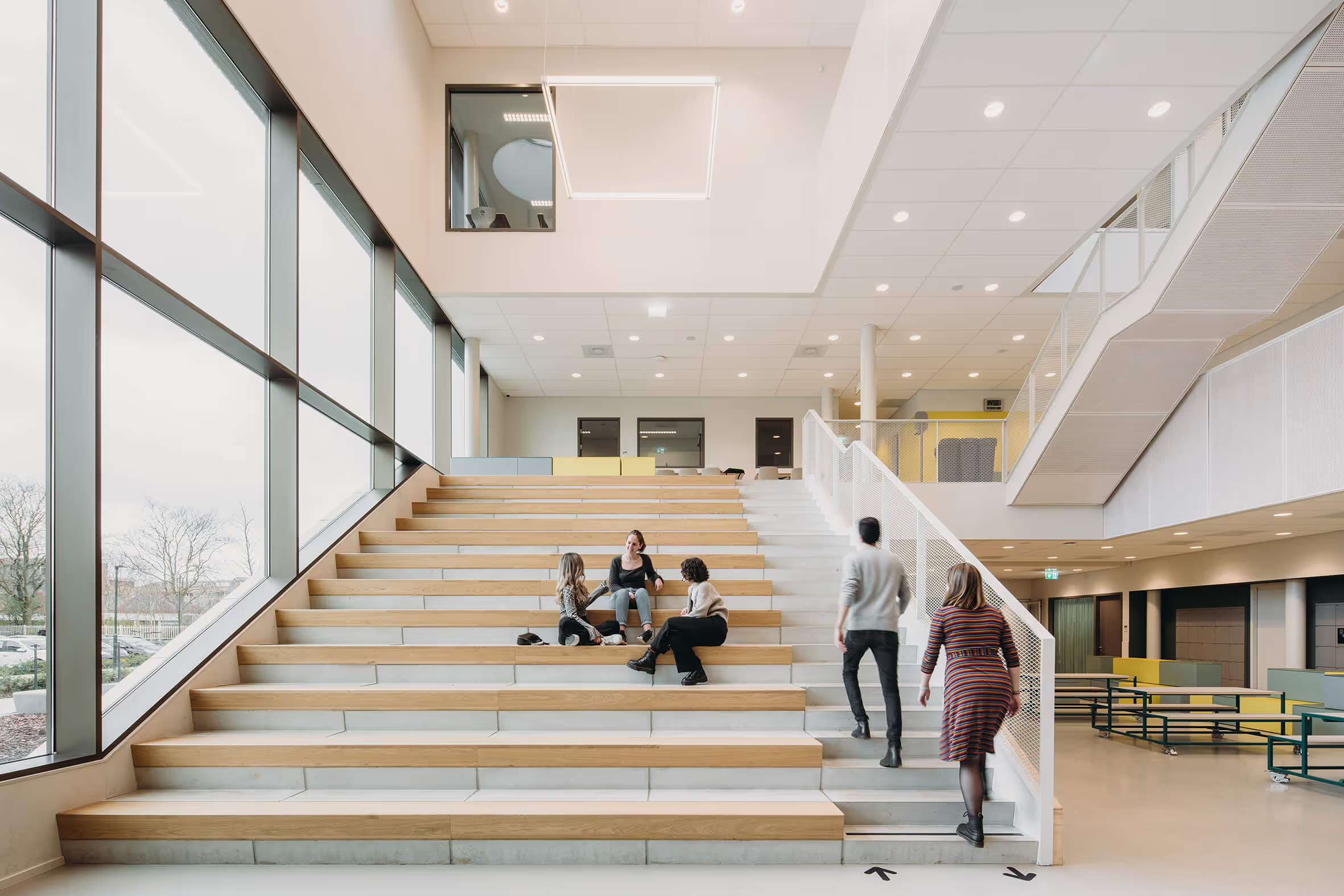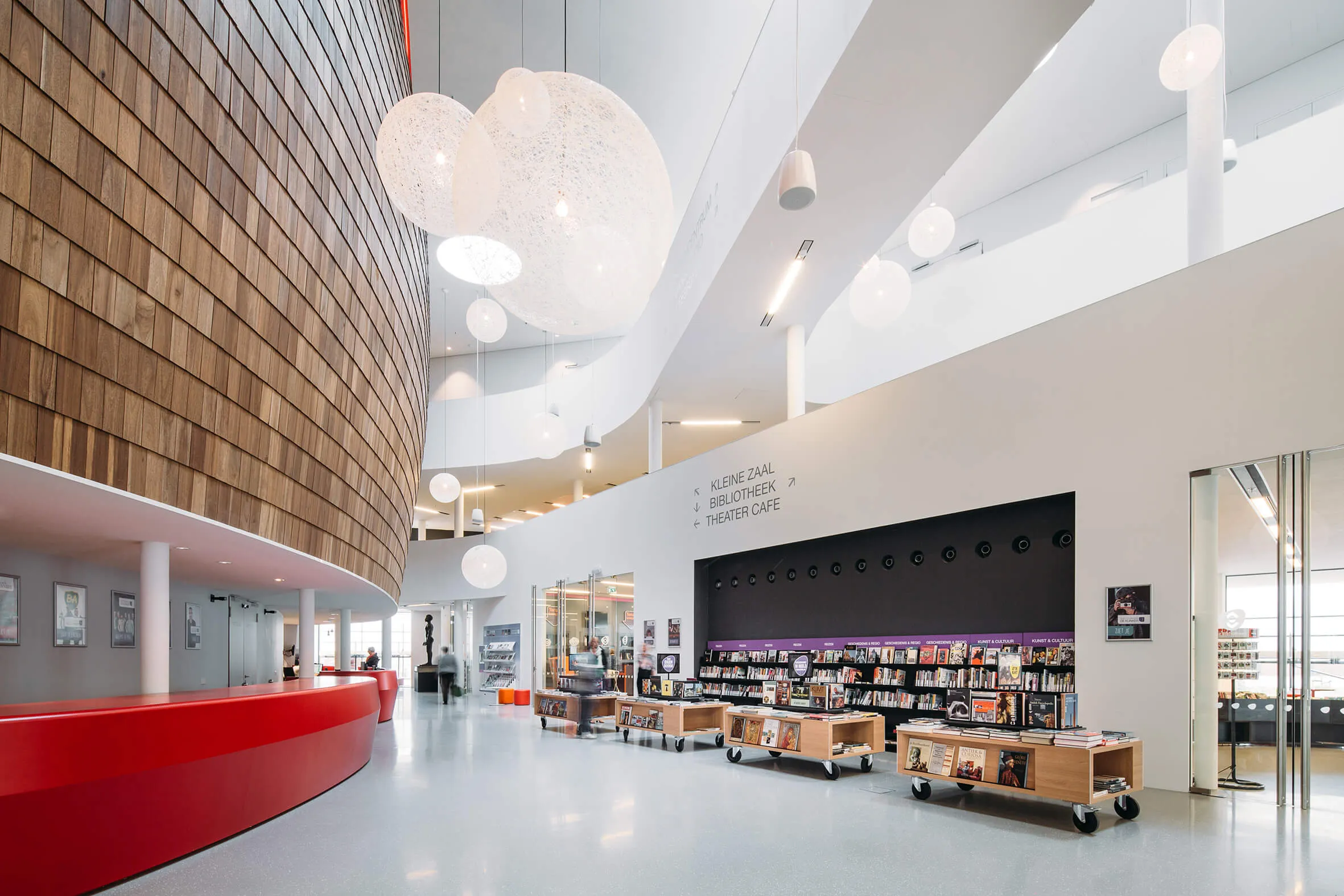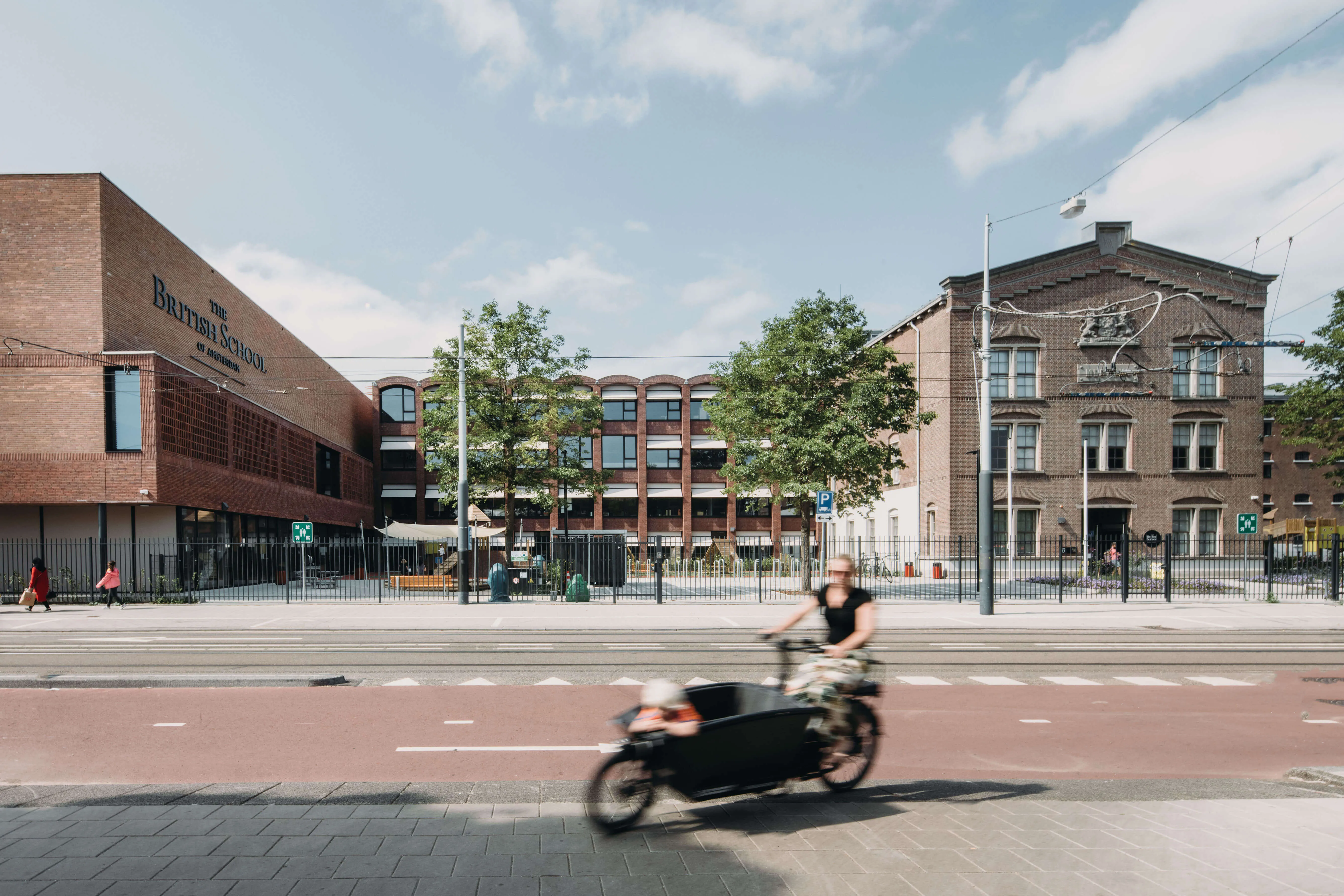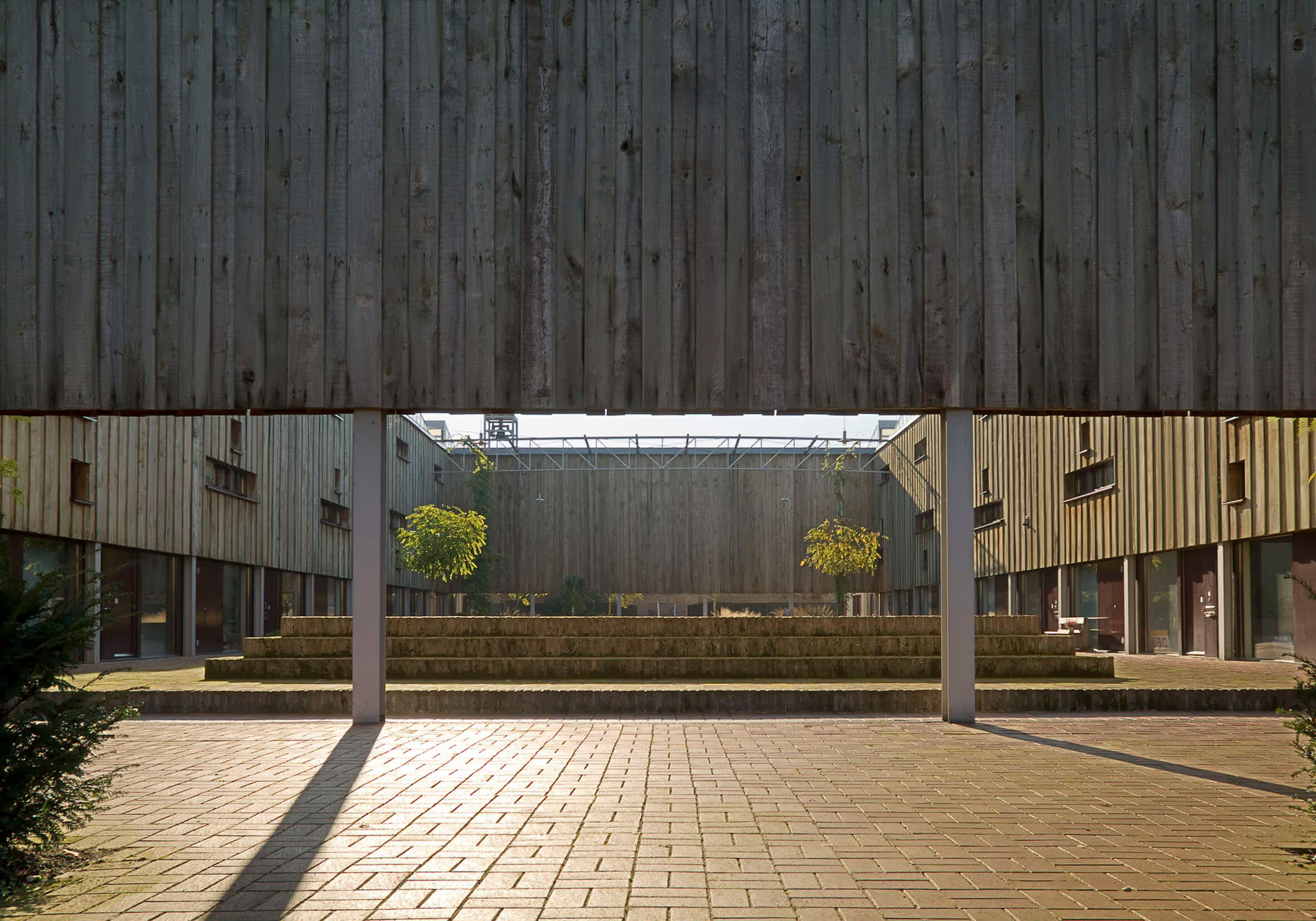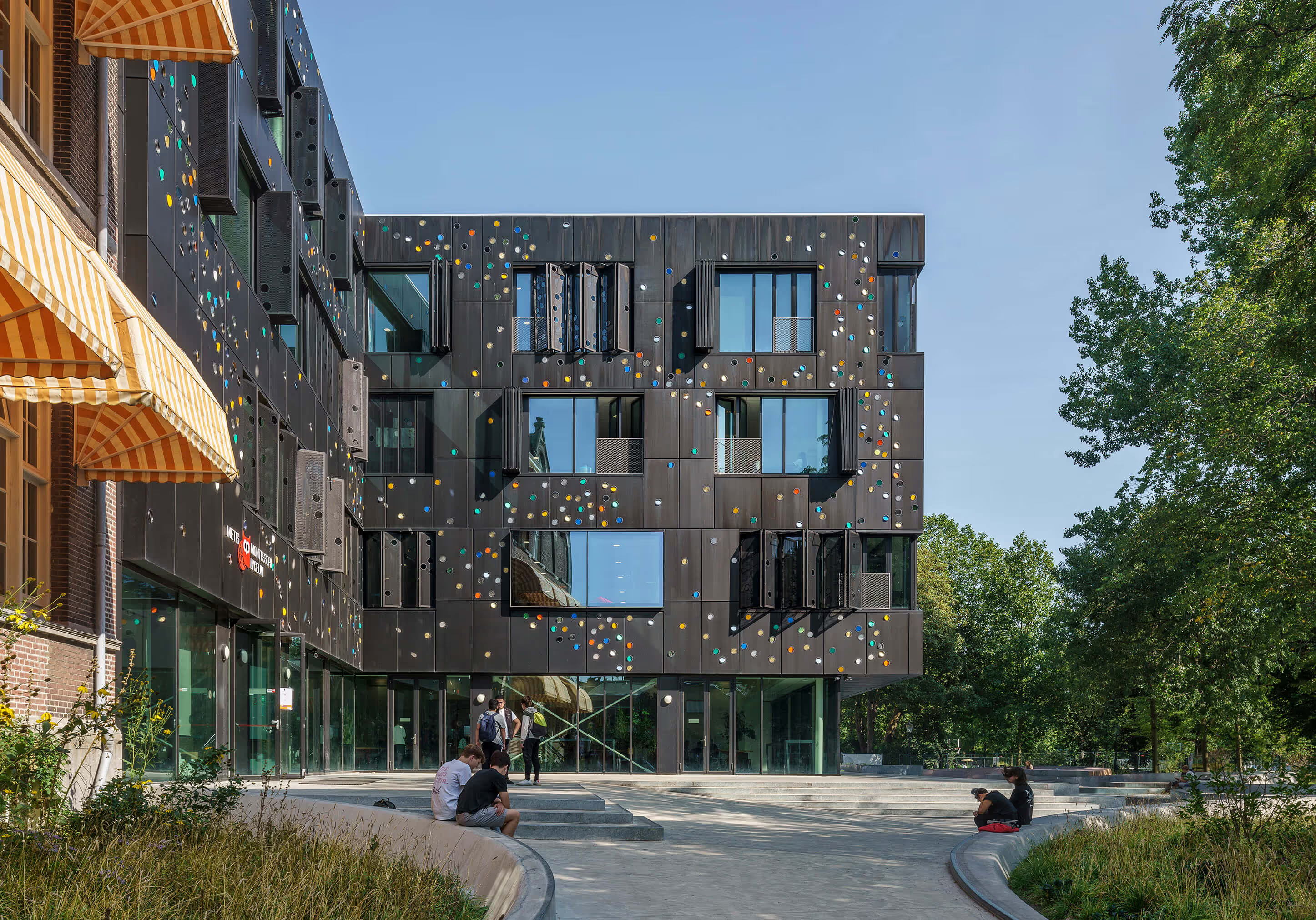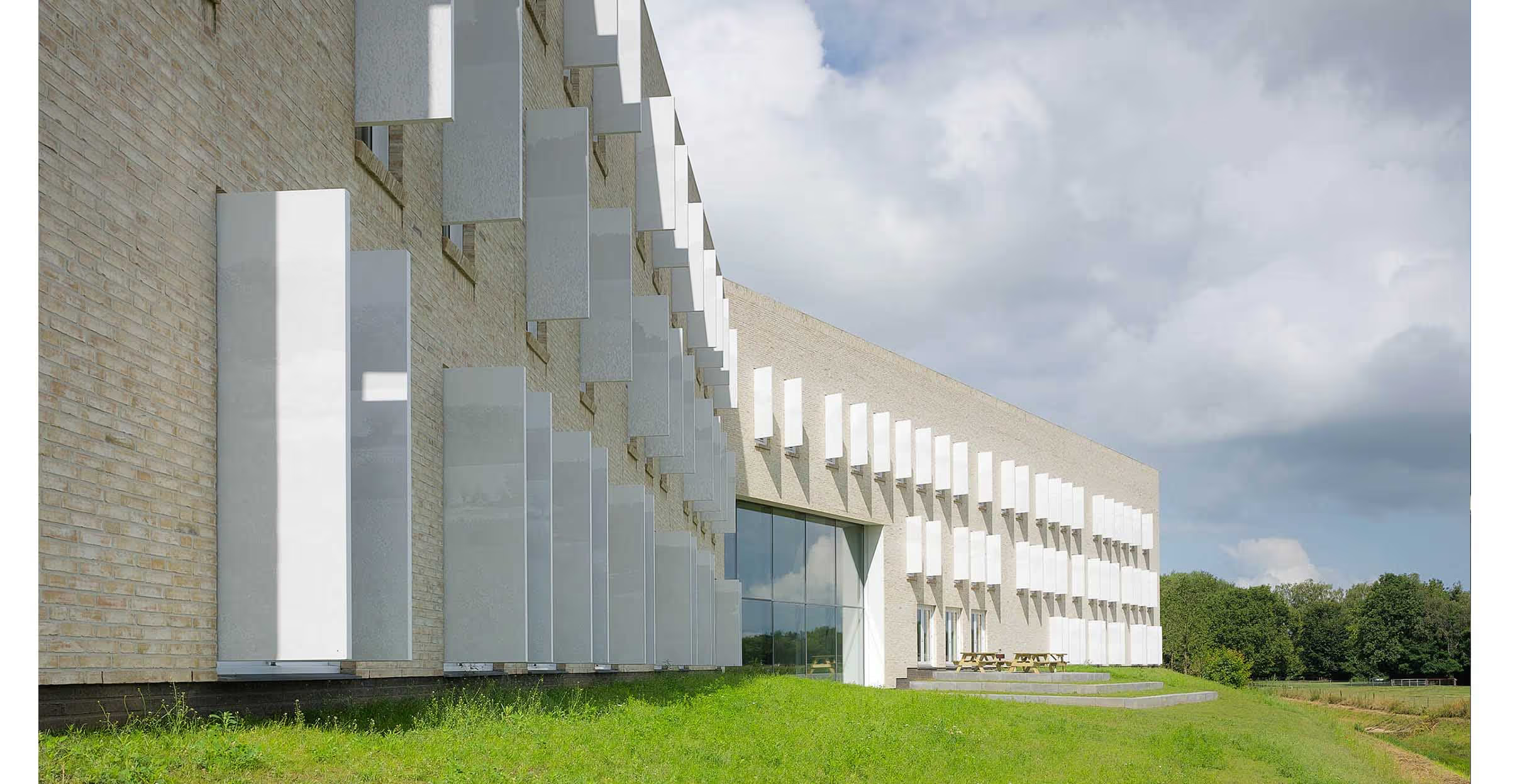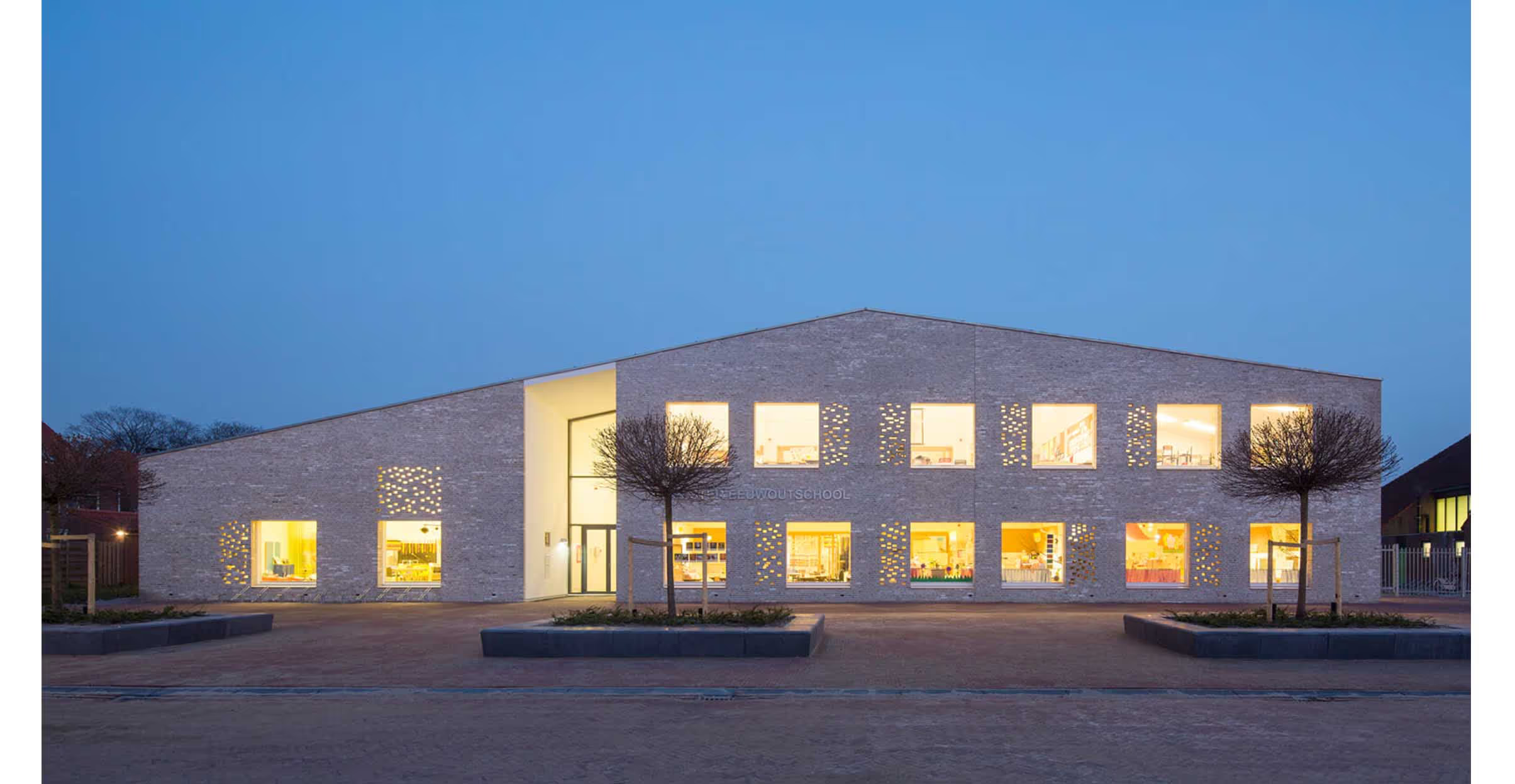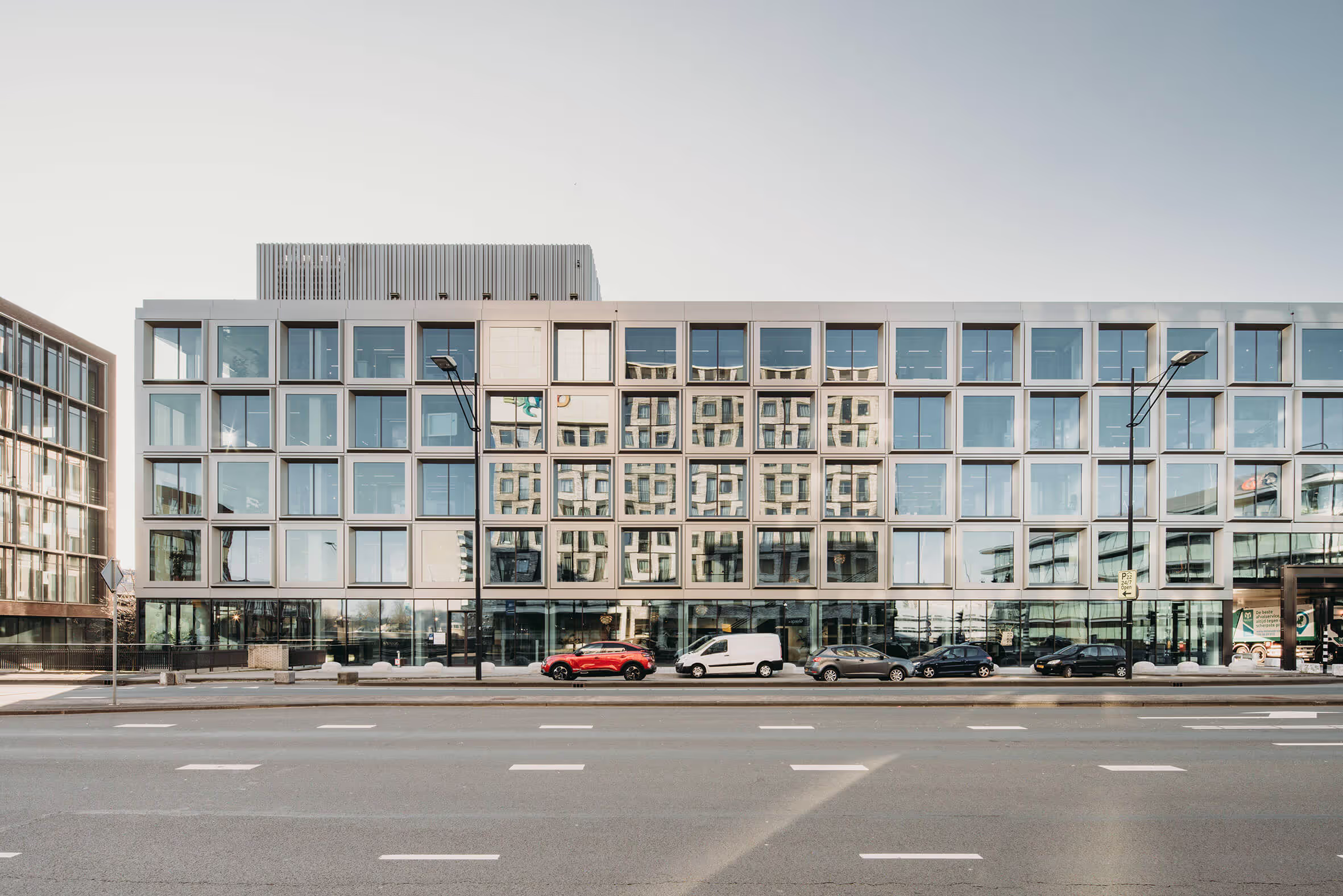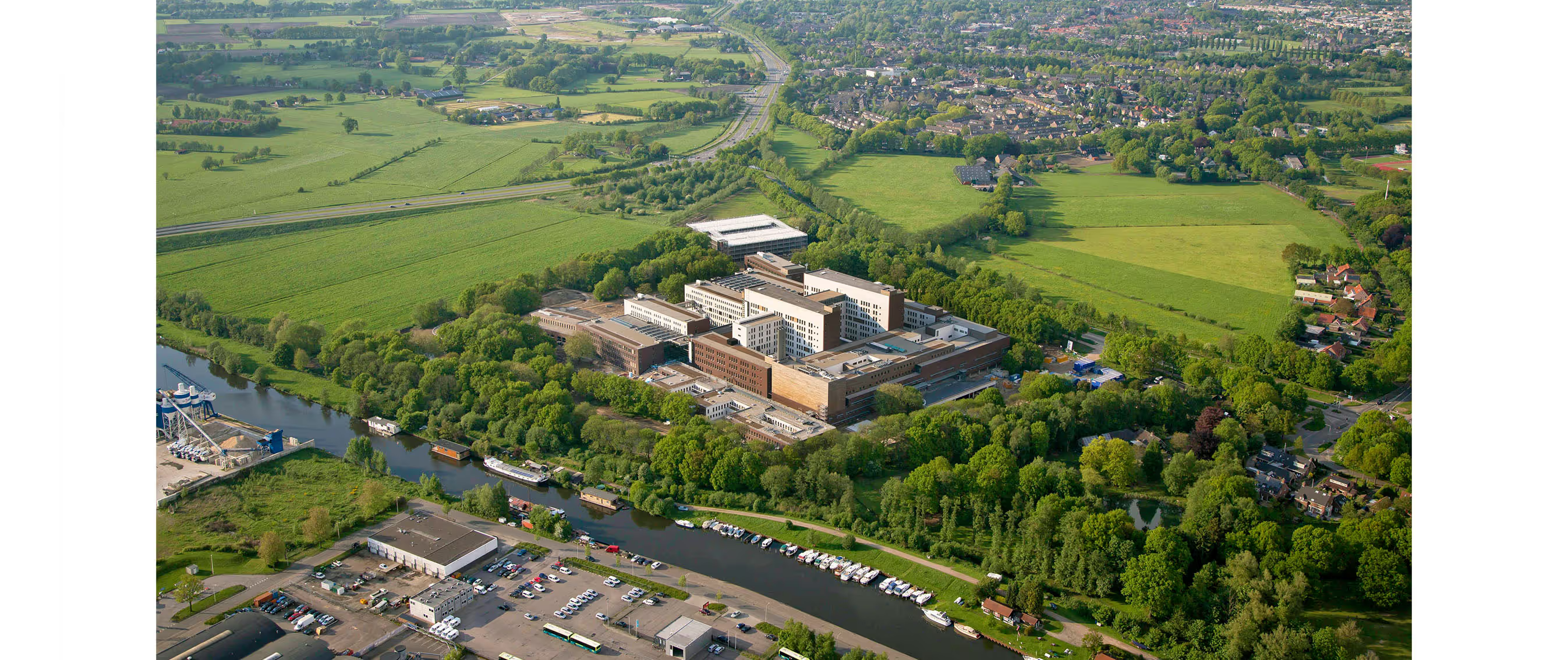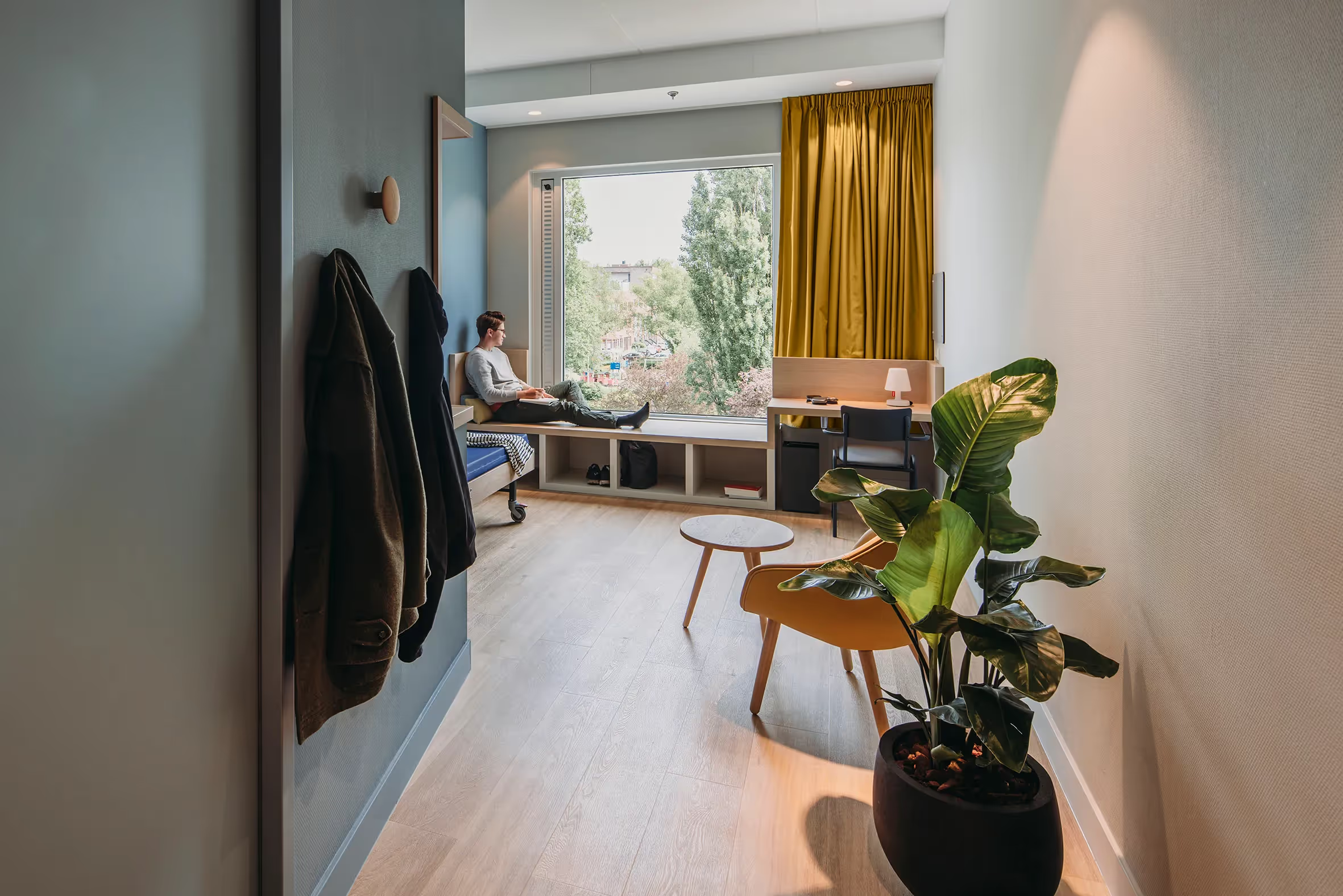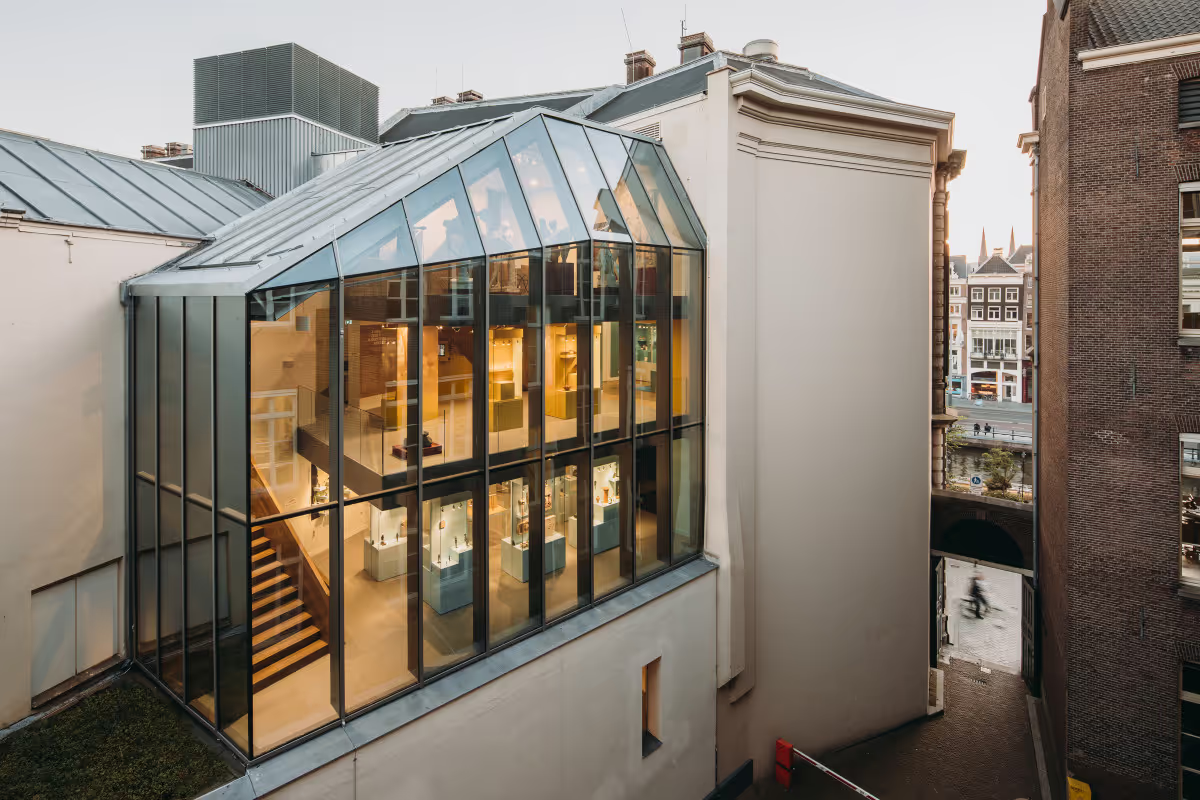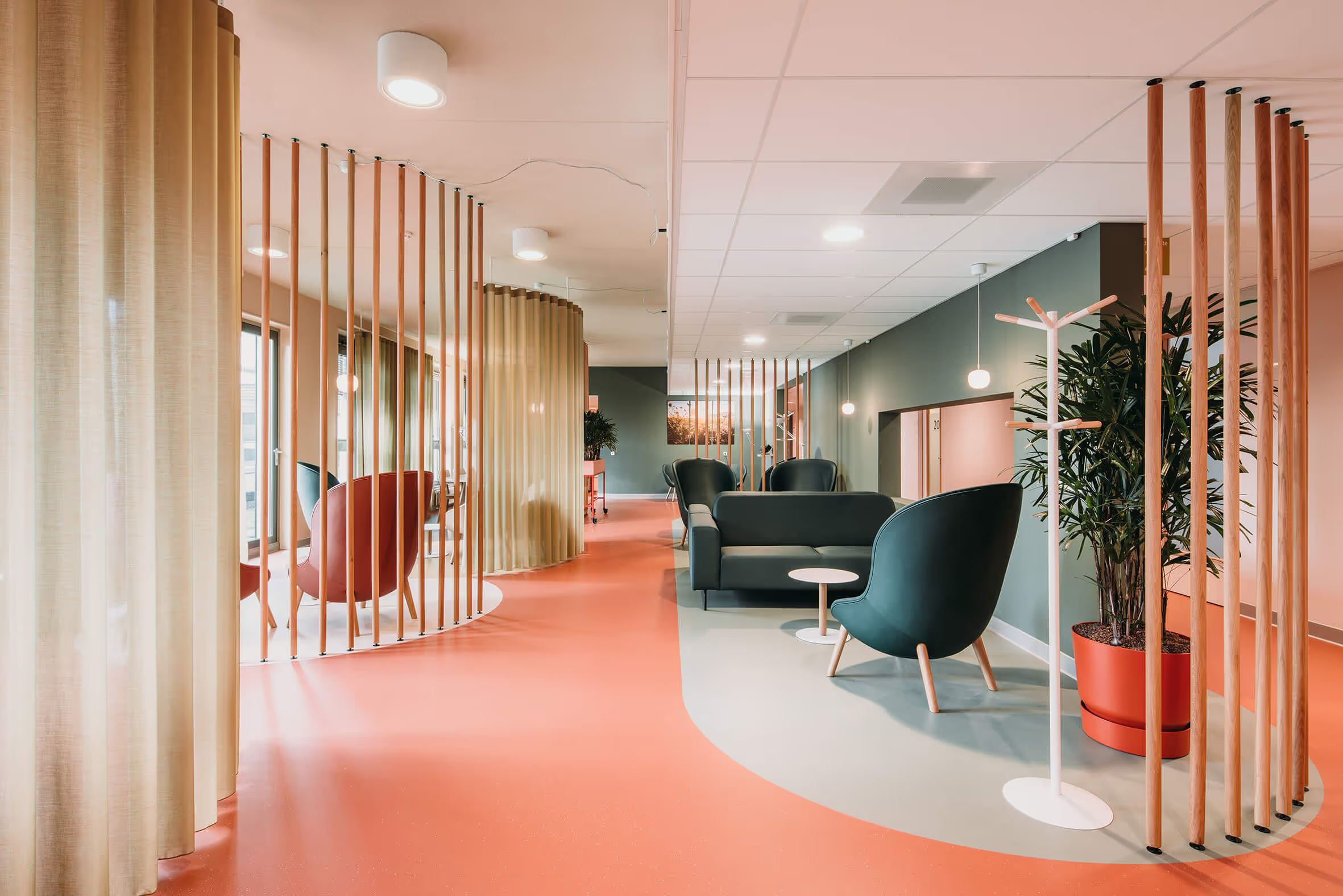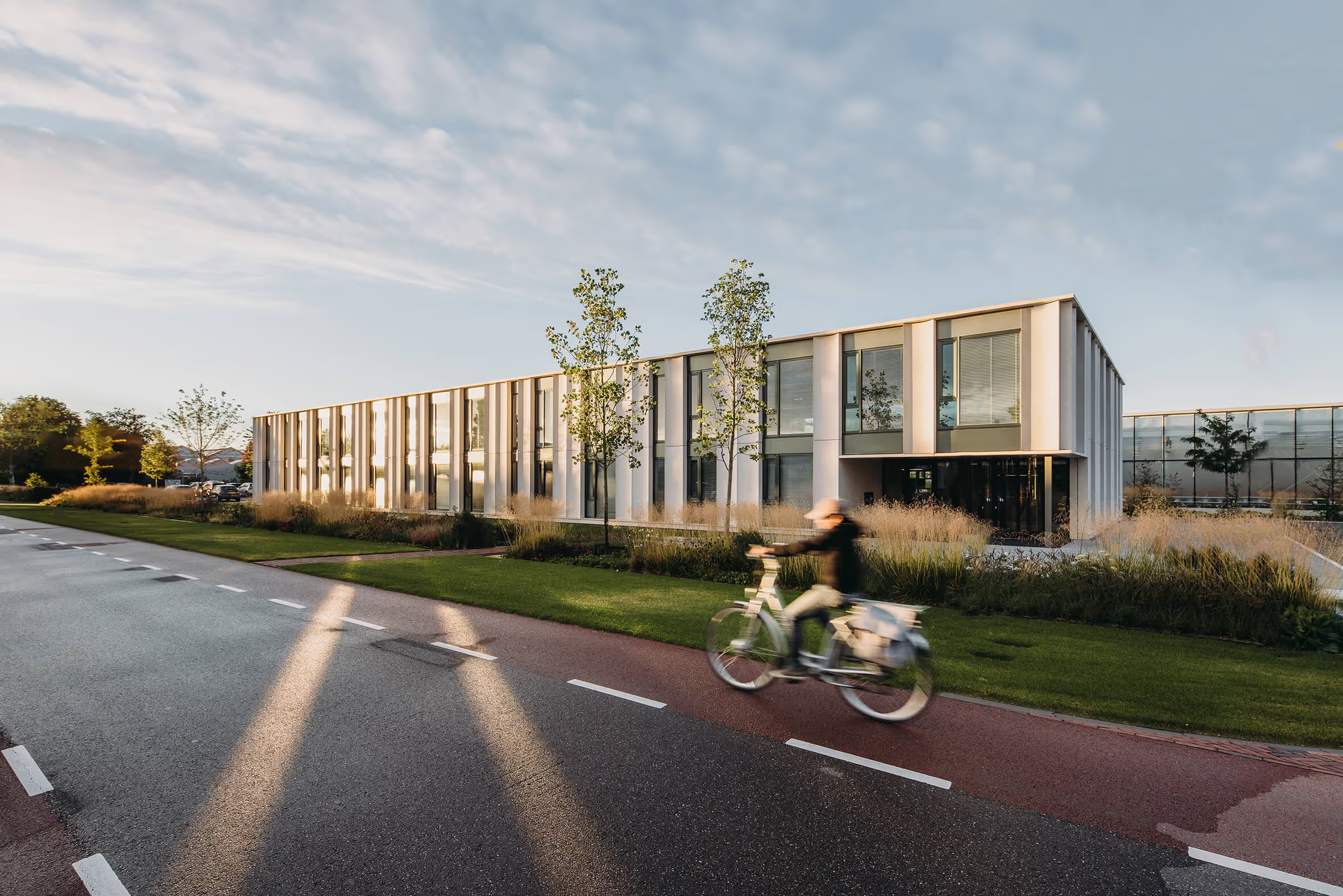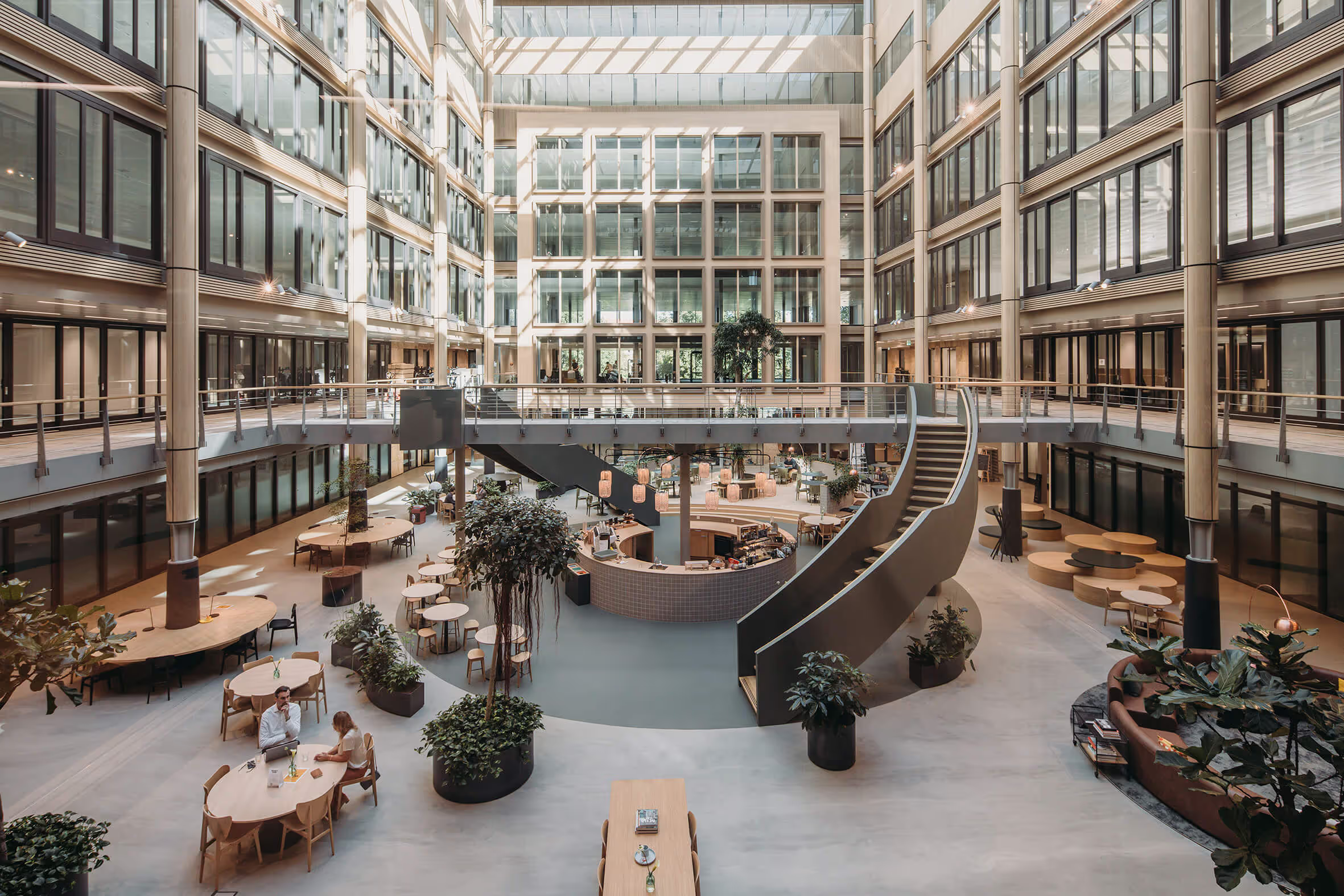Library Bijzondere Collecties UvA
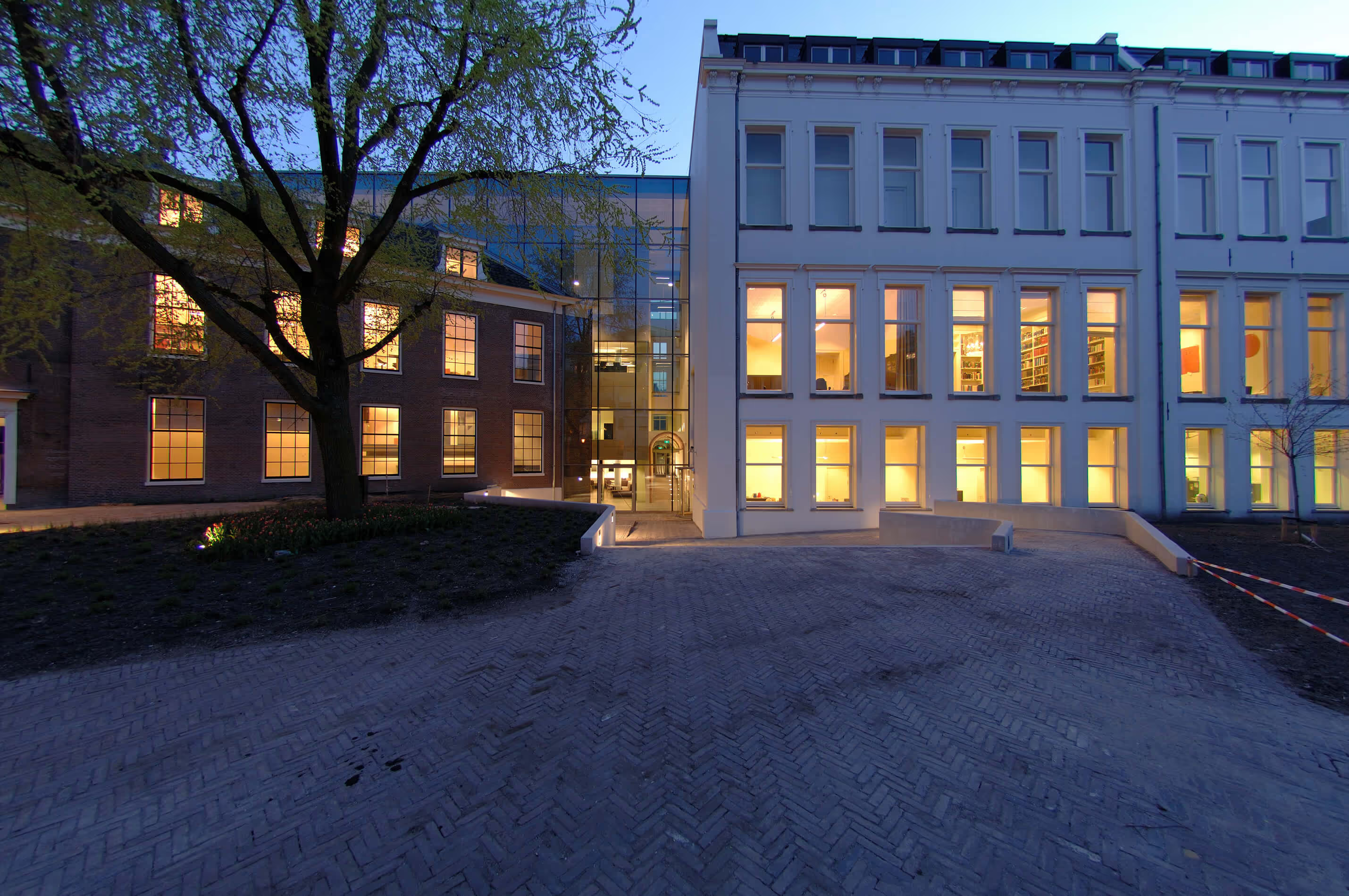
Library Bijzondere Collecties UvA
Library Bijzondere Collecties UvA

Restoration of a historic collection of buildings for a historic collection of books
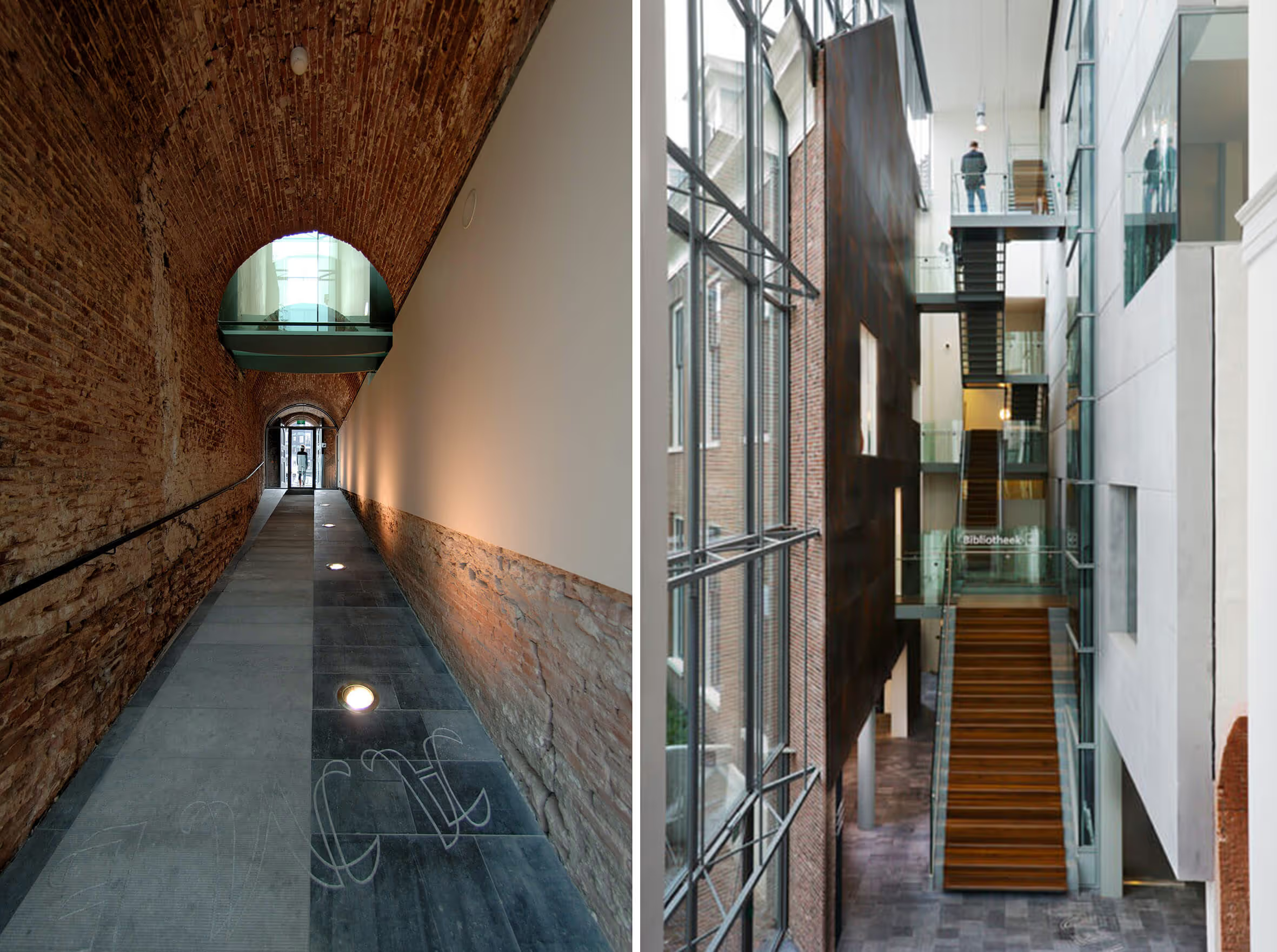
New housing for a unique scientific collection
The Special Collections include all of the University of Amsterdam's library heritage and are one of the three largest heritage libraries in Europe, including books and manuscripts, for example, the original maps by Willem and Joan Blaeu. Until 2007, the collections were spread across the city. In order to better protect and unlock them, it was decided to put this material together in one place: the new Special Collections Library at the Oude Turfmarkt.

Together, five national monuments in the canal belt become one library
The library was to be housed in three buildings by the seventeenth-century architect Philips Vingboons with associated back houses, and the adjacent former Saint Bernard Asylum - which consists of a nineteenth-century complex on the Oude Turfmarkt and a slanted wing in the garden behind it, once part of the Binnengasthuis. All buildings in the complex are listed as a national monument. In addition, the waterfront facades are also part of the Amsterdam canal belt. With our design, we wanted to make the building open, friendly and accessible to visitors, but also to revive the distinguished atmosphere of the merchant city of Amsterdam.
De Gasthuispoort as a natural and central entrance to the complex
The complex was merged, restored, renovated and expanded by atelier PRO.
An important challenge in this regard was the accessibility of the complex. The gateway to the Binnengasthuis, the oldest part of the complex, was located on the Oude Turfmarkt, between the Vingboonspanden and the Saint Bernard Foundation; however, this gate had been closed over time. We opened the Gasthuispoort again and made it a spectacular entrance; so what was once access has become access again, and visitors are now entering the middle of the complex.
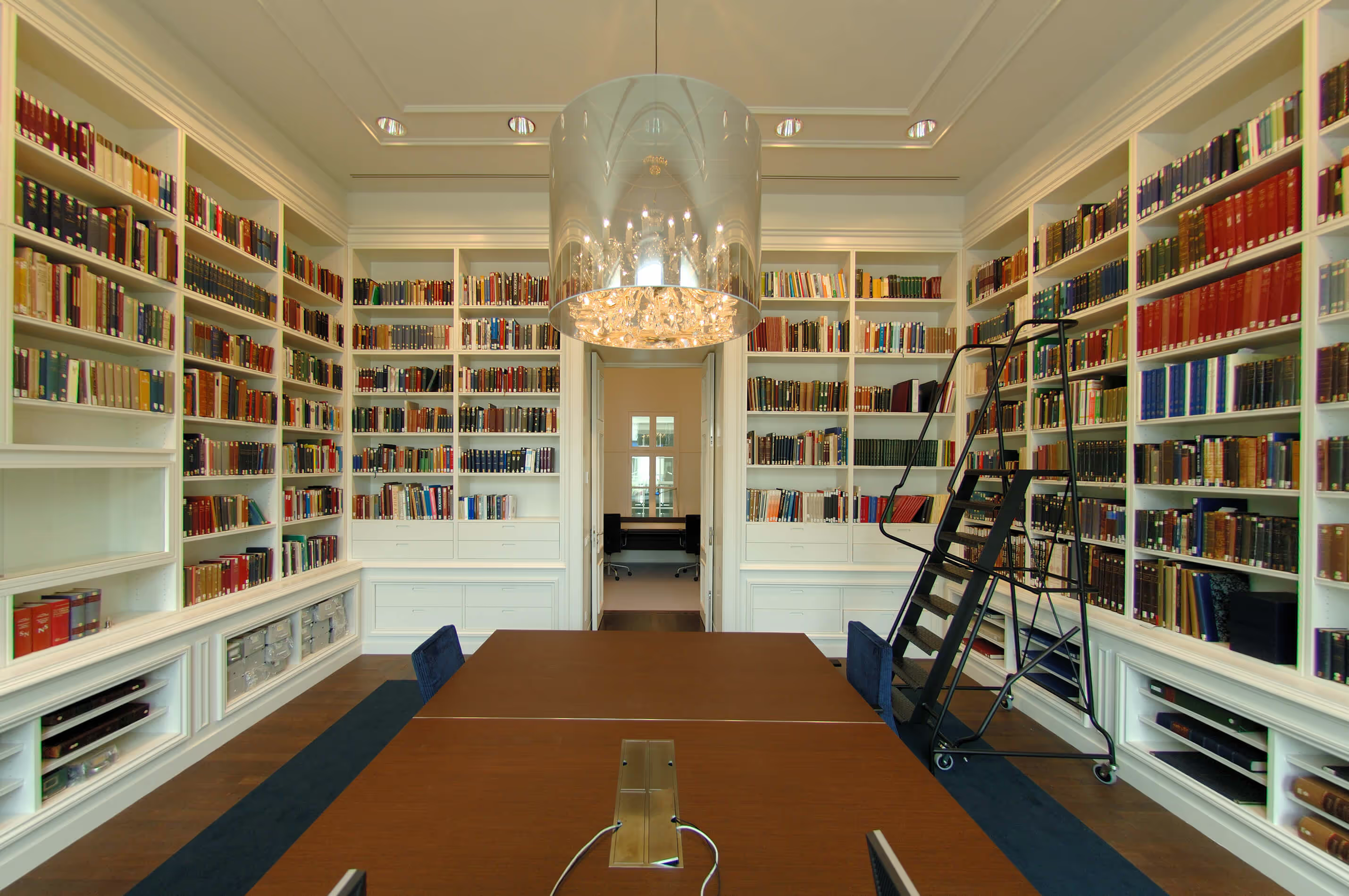

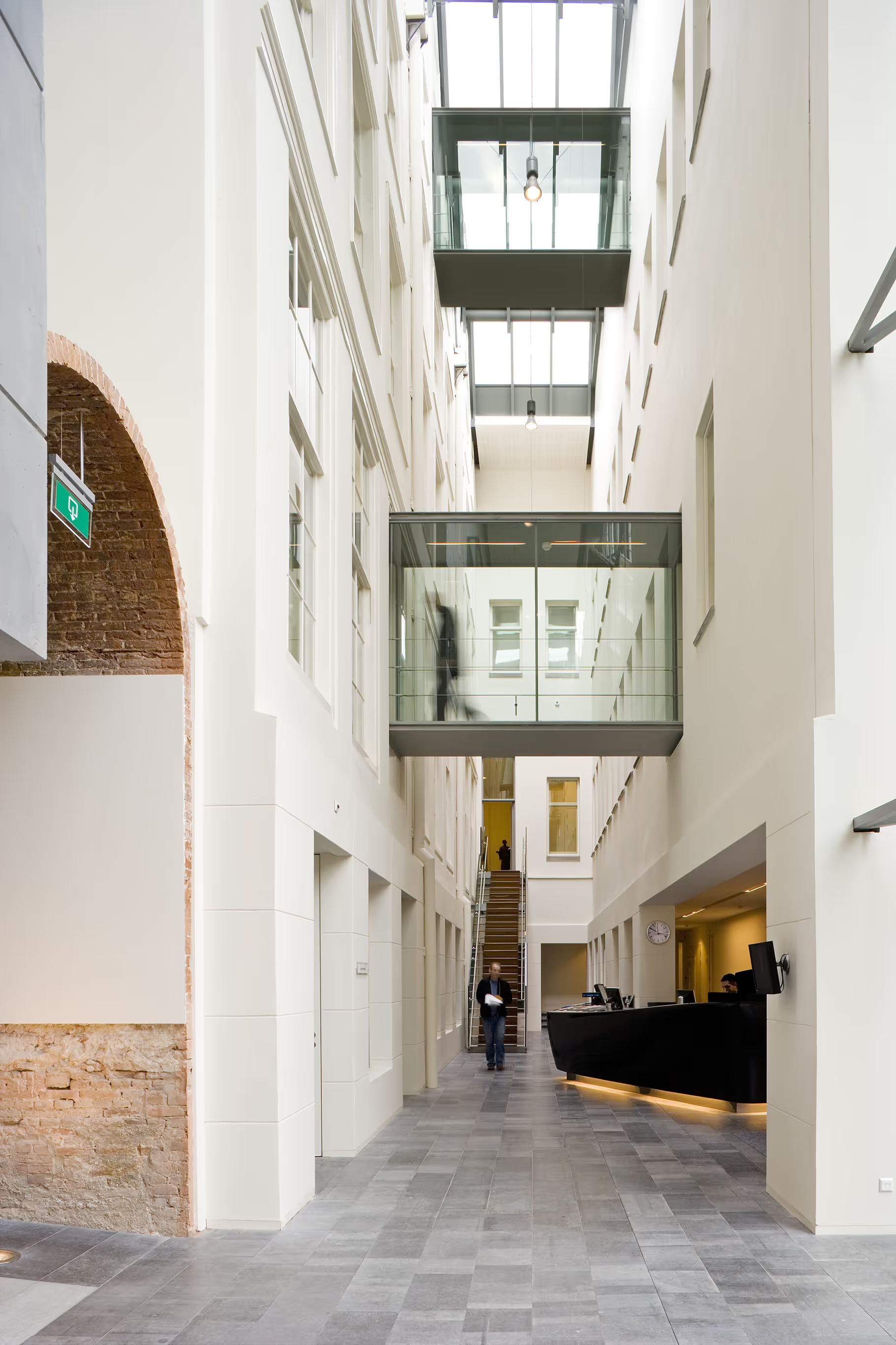
Public spaces follow the structure of the city
At right angles to the Gasthuispoort, there is a new light court that runs right through the complex and opens it up; for this purpose, the courtyard between the front and back houses of the Vingboons buildings was covered with a glass roof and extended — something where part of the sloped back house had to be cut off. The high, light space that has thus been created is bridged at various levels by glass and steel walkways. The light court forms a spacious reception area, where visitors can access the collections.
Restoration, renovation and new construction of a historic complex
The various buildings each received their own approach, appropriate to their historical state and character, but form a unity in terms of program. The Saint Bernard Asylum seemed unsuitable for managing and preserving books: the original interior had completely disappeared and the structure silted up beyond repair. That is why only the façade of this building has been preserved, while we designed a new, well-organized structure inside, with a concrete structure with floors that logically connect to the other buildings and are suitable for heavy bookshelves. This is how this building has been made suitable as a library.
Reusing the Vingboons buildings in the spirit of the times
As a result, we hardly had to interfere with the elegant city houses of Vingboons; these buildings have been restored and breathe the distinguished atmosphere of the time. The oak ceilings that were still present were used as formwork for new concrete floors that can support the books. Part of the collection is here in an open exhibition; another part of the books is so valuable that they are kept in separate secure areas. The renovated back houses house a number of smaller collections; the accompanying study rooms have been designed as a “men's room”.
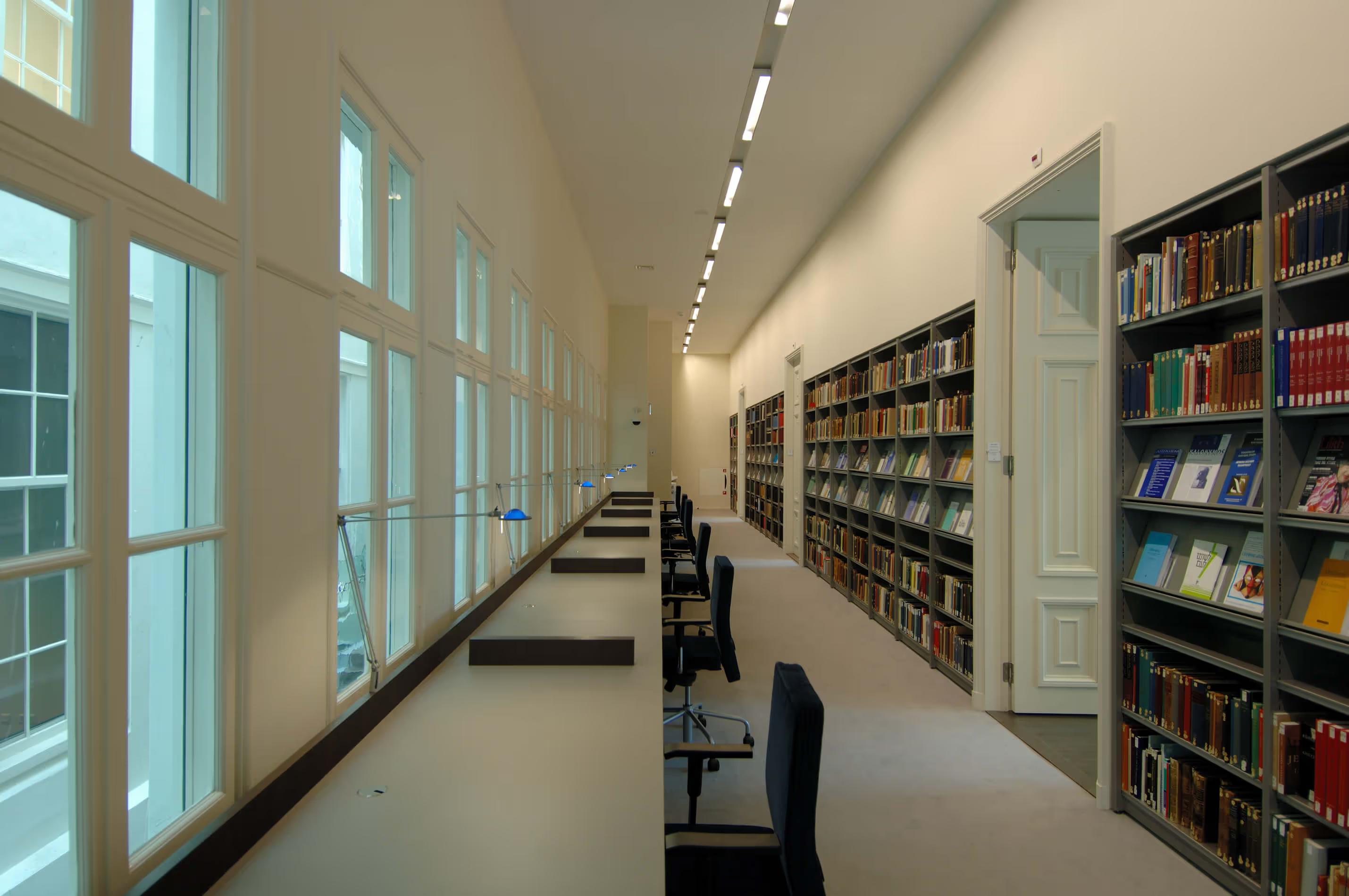

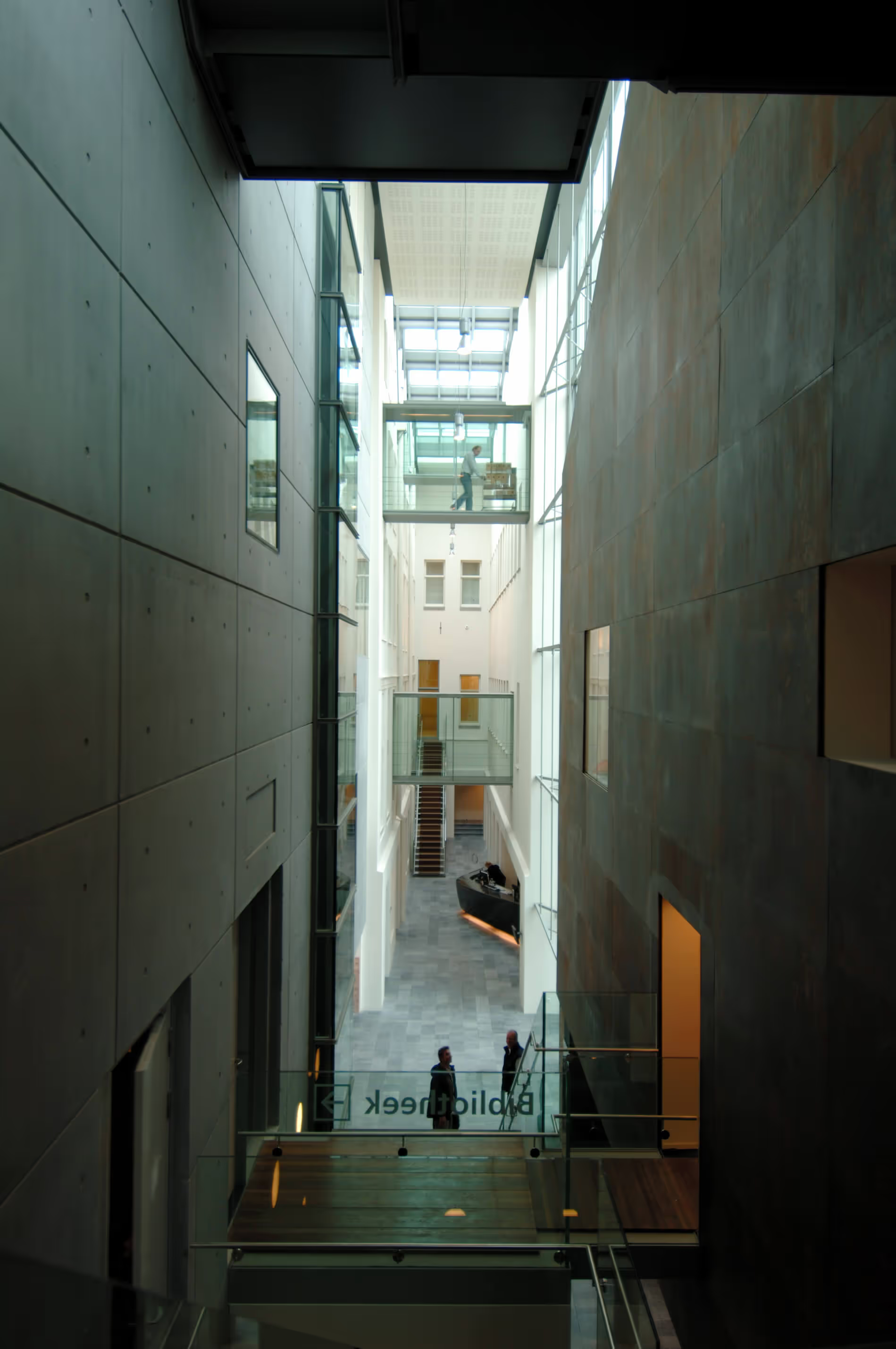
Open and private: exhibition spaces, study rooms and archives
For a library like this, security is an important starting point. The various functions are therefore grouped according to their level of security: on the ground floor, there are exhibition spaces and the café that are accessible to the wider public. Above are the reading rooms, where valuable, rare books, manuscripts, prints and maps can be consulted under supervision. The depots and vaults where the collection is stored are located on the higher floors; one meter behind the facades, there is a wall that keeps daylight out of the archives.
Secure routing for books, private routing for visitors
The public spaces and the collection zones are separated from each other, but still visible and open to each other through windows, voids, vistas and double staircases. Within the complex, there is both public routing for the public and an extra secure routing for moving books from the depots to the reading rooms; one of these routes runs through the atrium with a glass walkway, so that people can see the library in operation and employees still experience daylight.
An assignment with a sequel: the Allard Pierson Museum
The challenge with this assignment was to restore and renovate monumental buildings from different eras in such a way that they were as suitable as possible for preserving a unique collection of historical material. The conditions under which the books were to be kept - humidity, temperature - played an important role, but the same was true for the old oak construction, floors and ceilings. Materials and finishes had to follow the atmosphere of the building; all new installations, pipes and channels to be added were removed. The result is an extraordinary building, in which we found a balance between monument, collection and public.
In 2019, the Special Collections Library and the Allard Pierson Museum merged into one organization, bringing together all the UvA's heritage collections: the Allard Pierson. The renovation and refurbishment of the museum section, which was linked to the library complex, was also designed by atelier PRO.
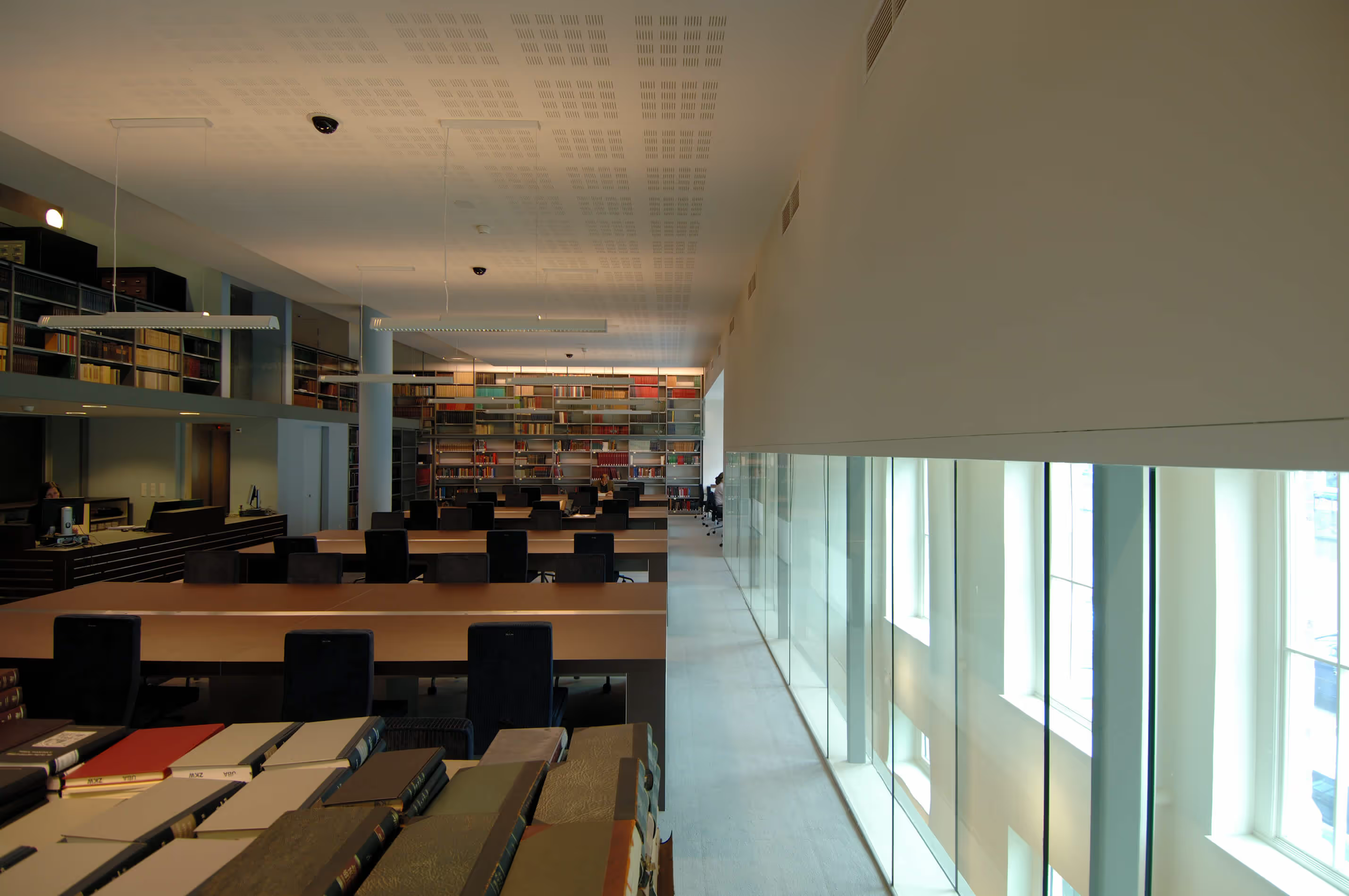

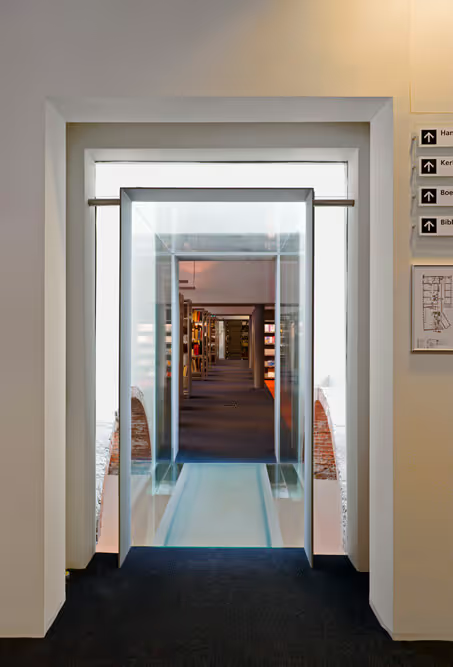
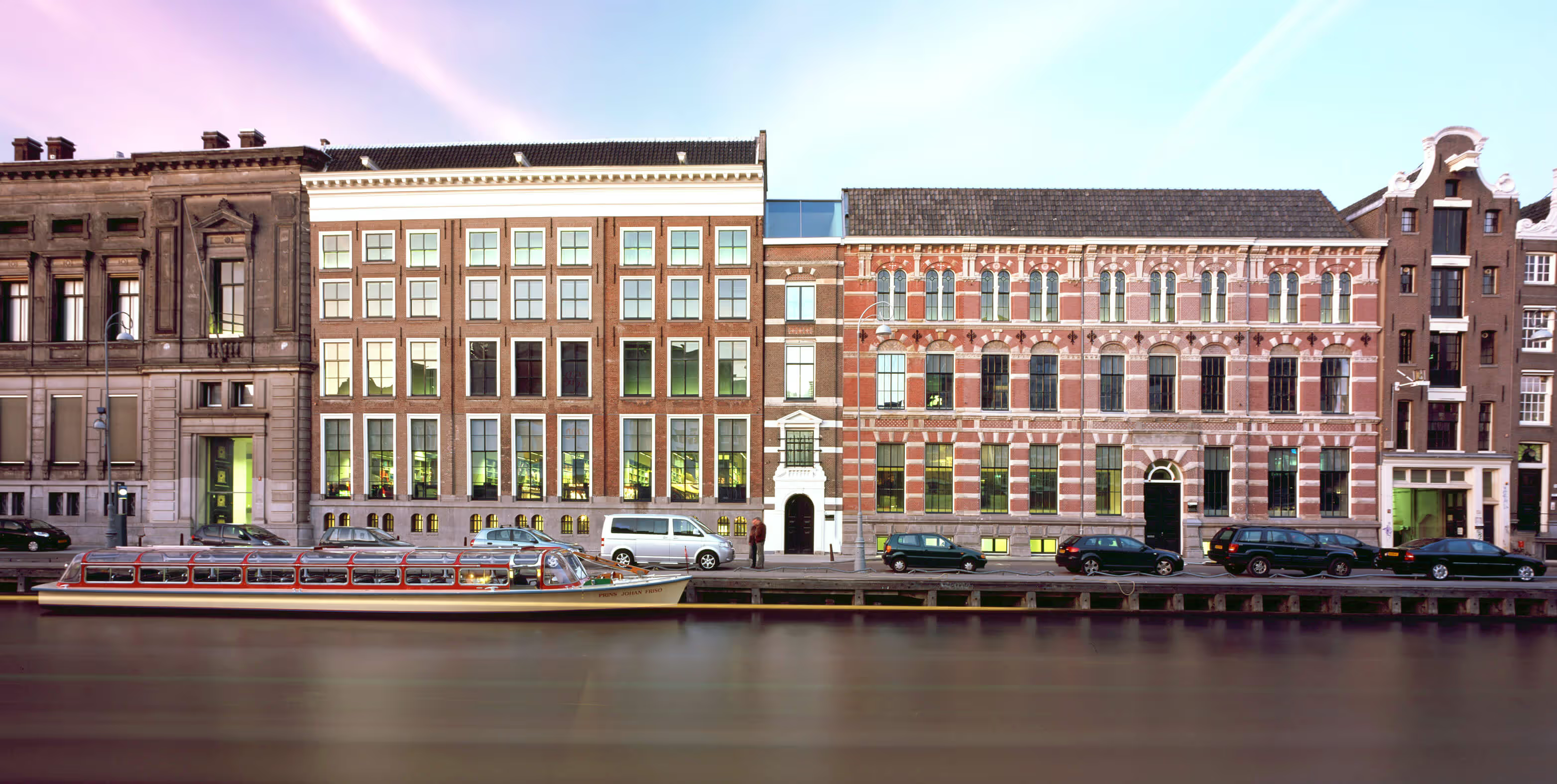
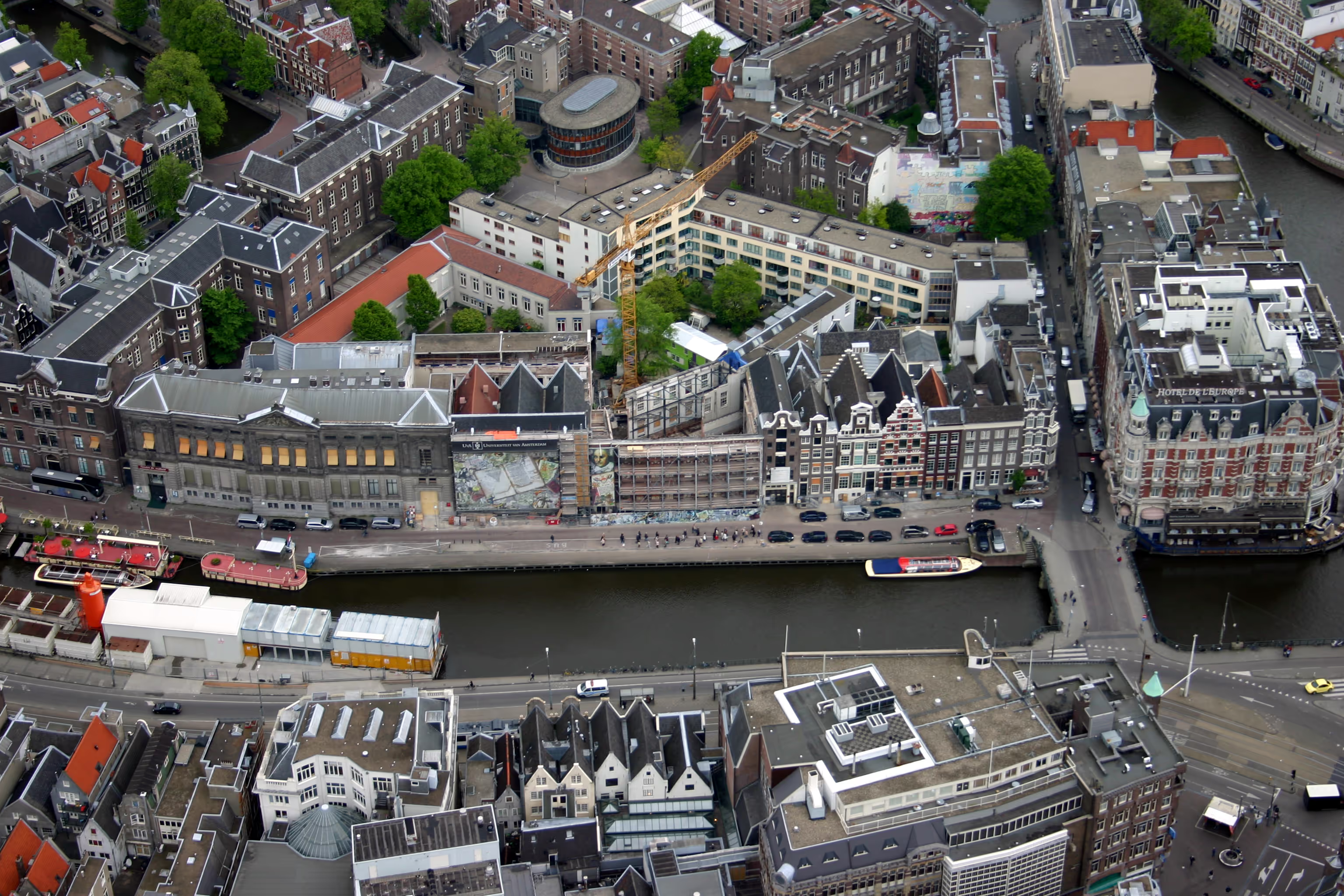
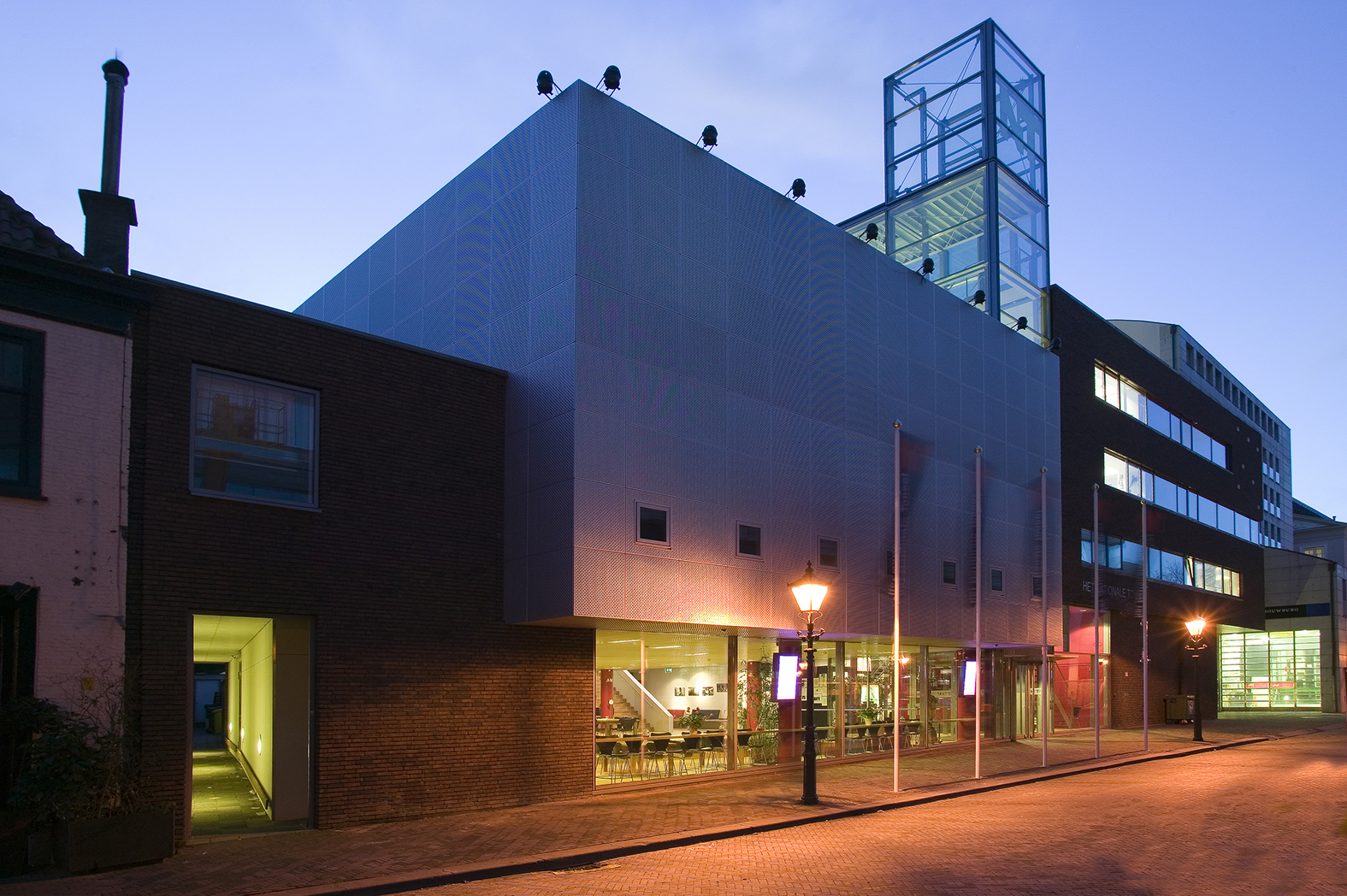
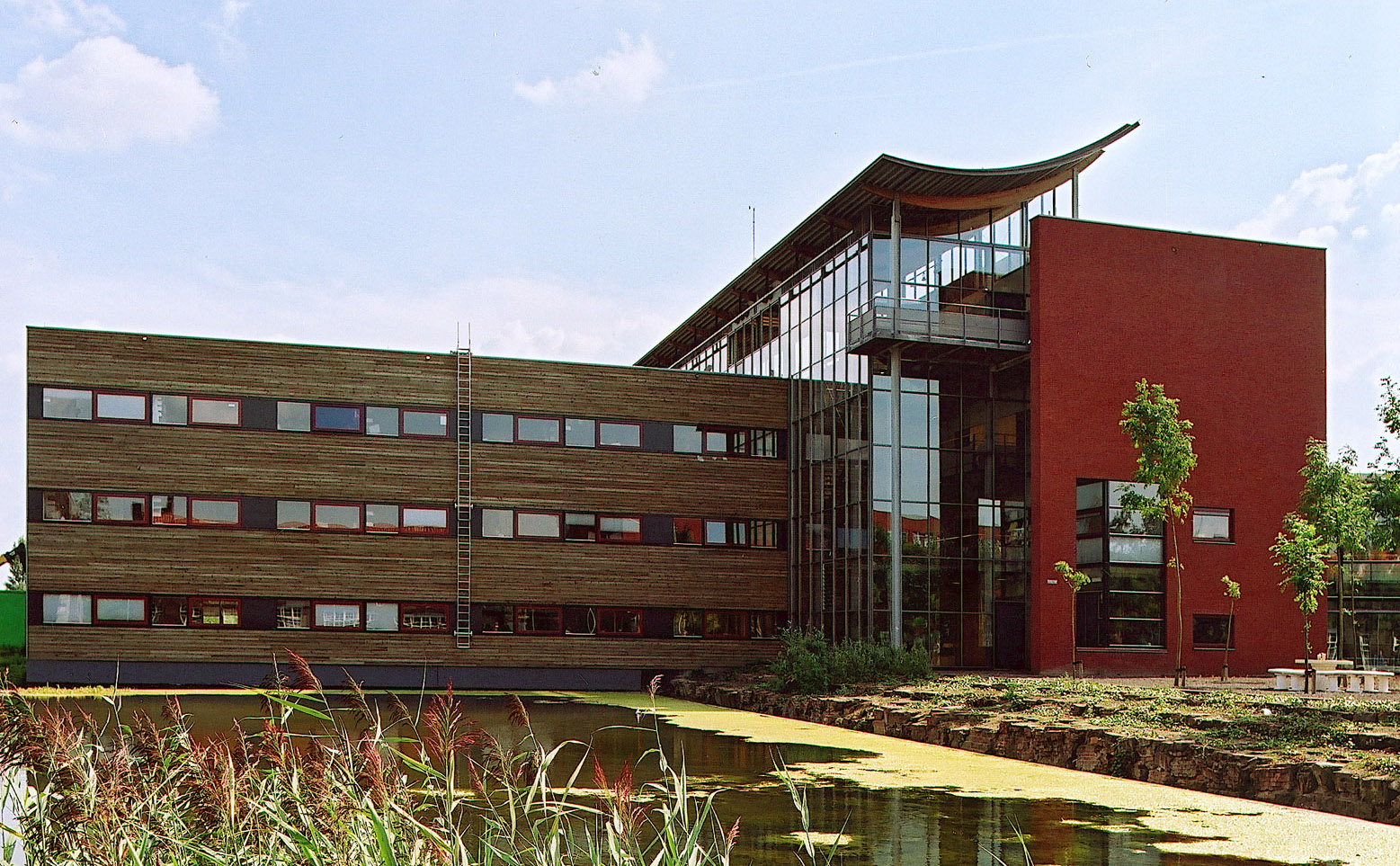
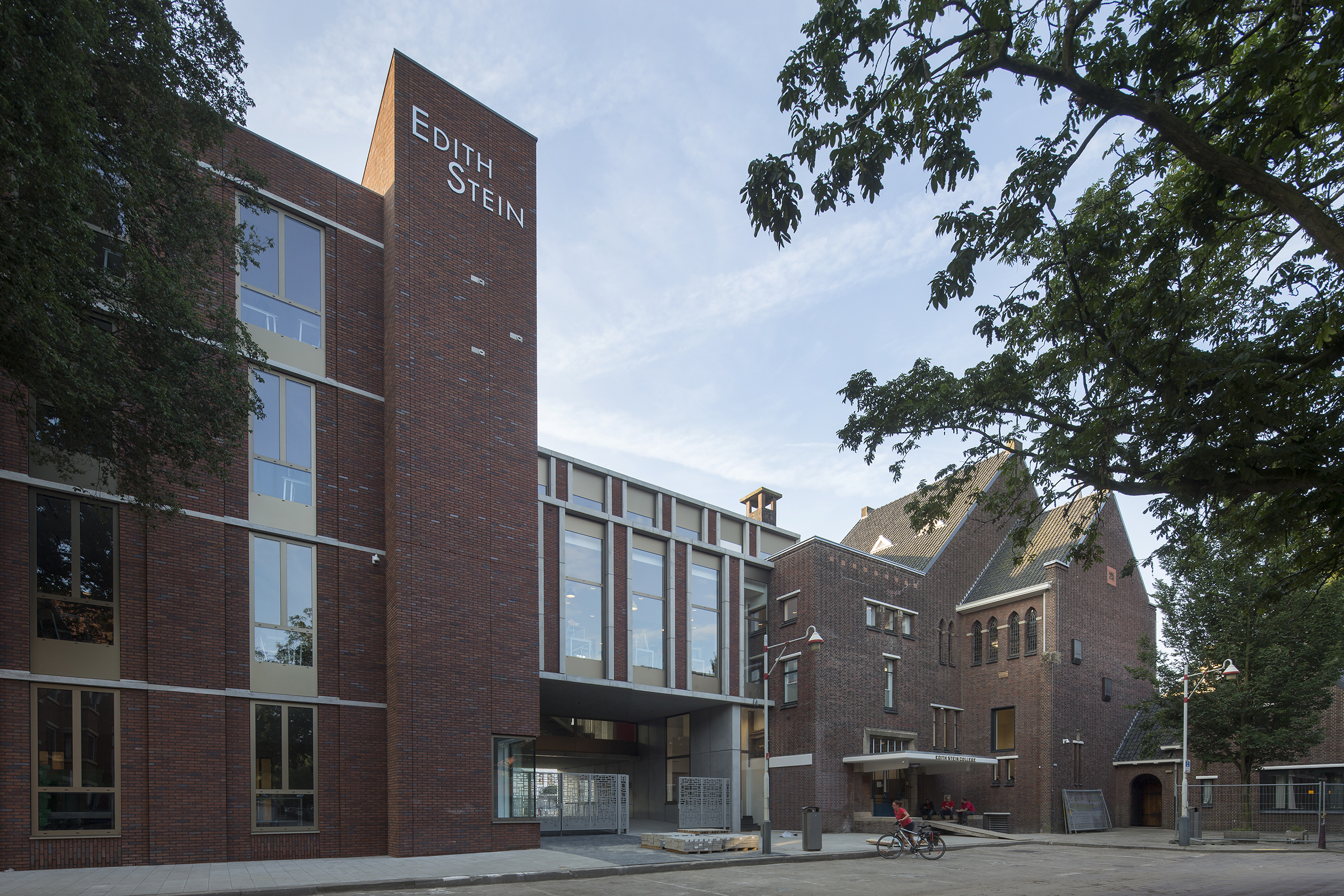




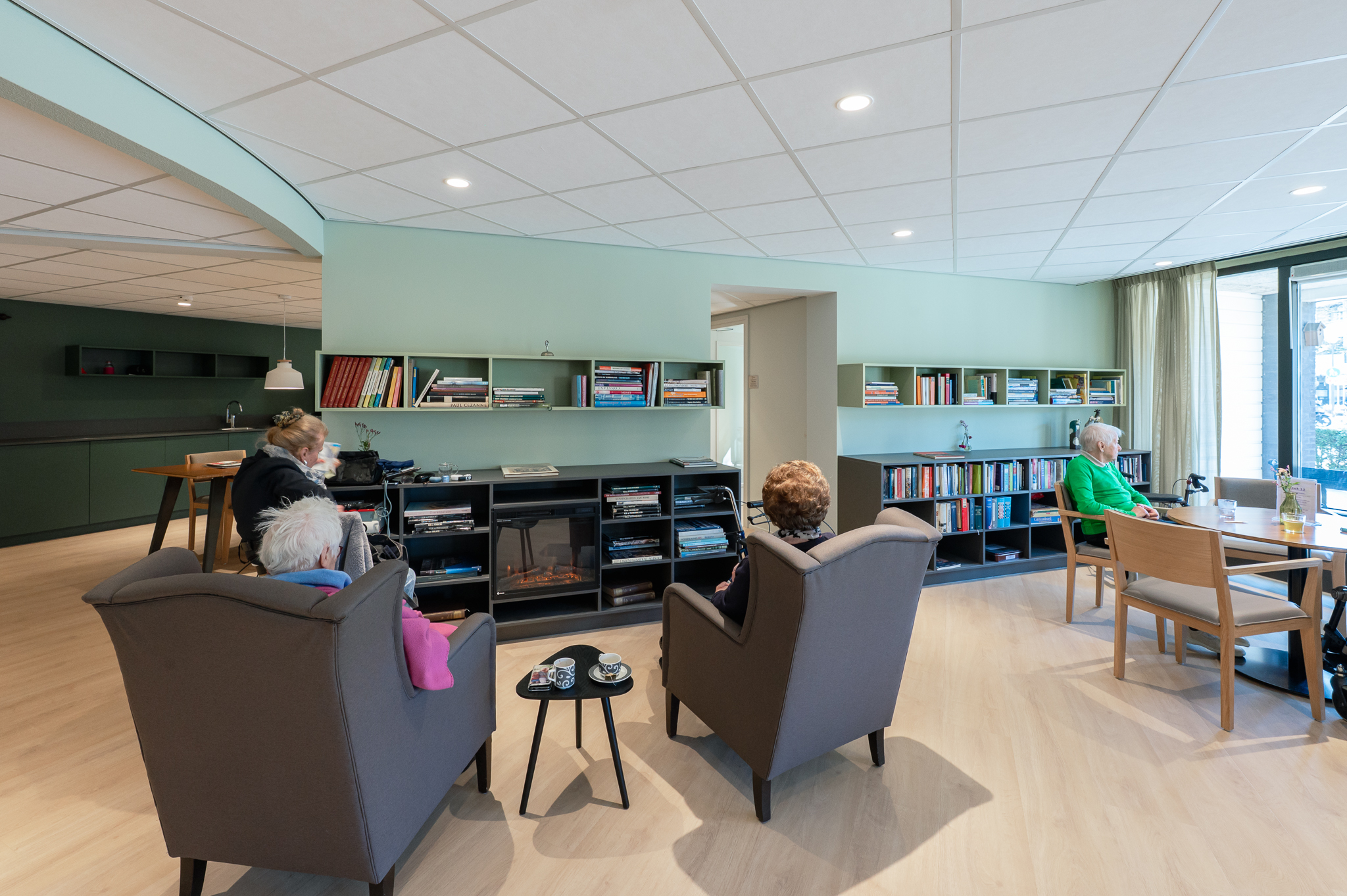
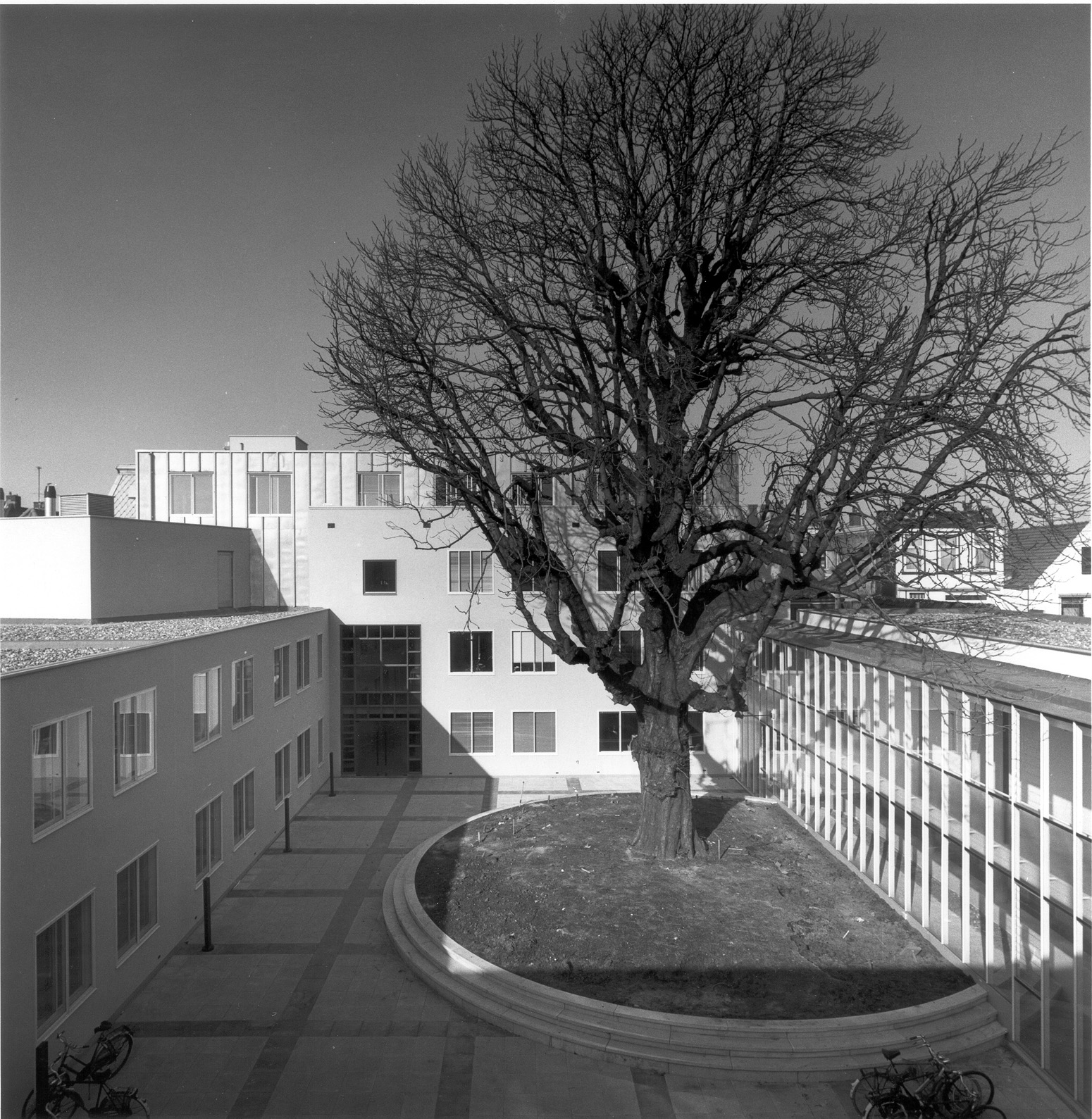

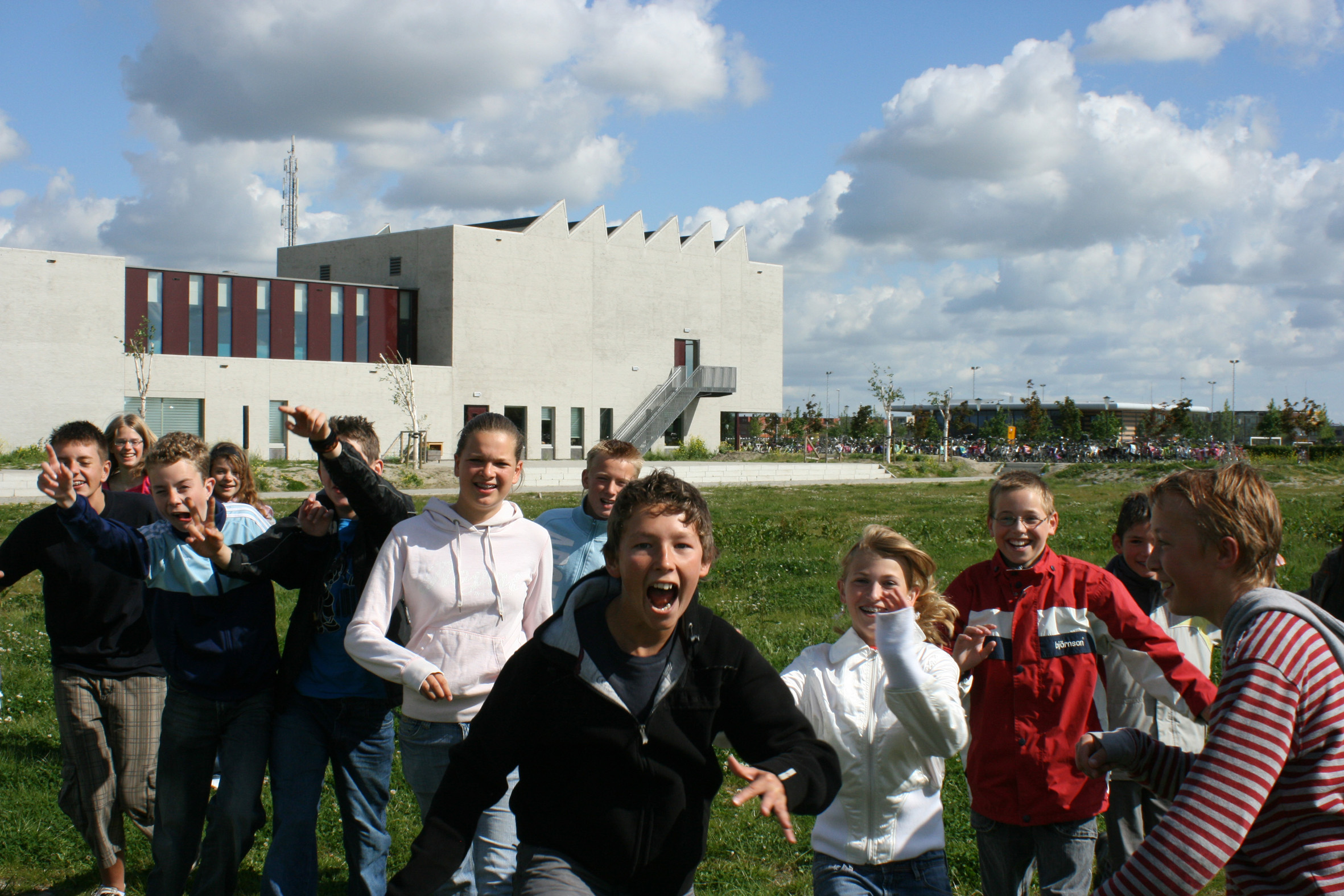

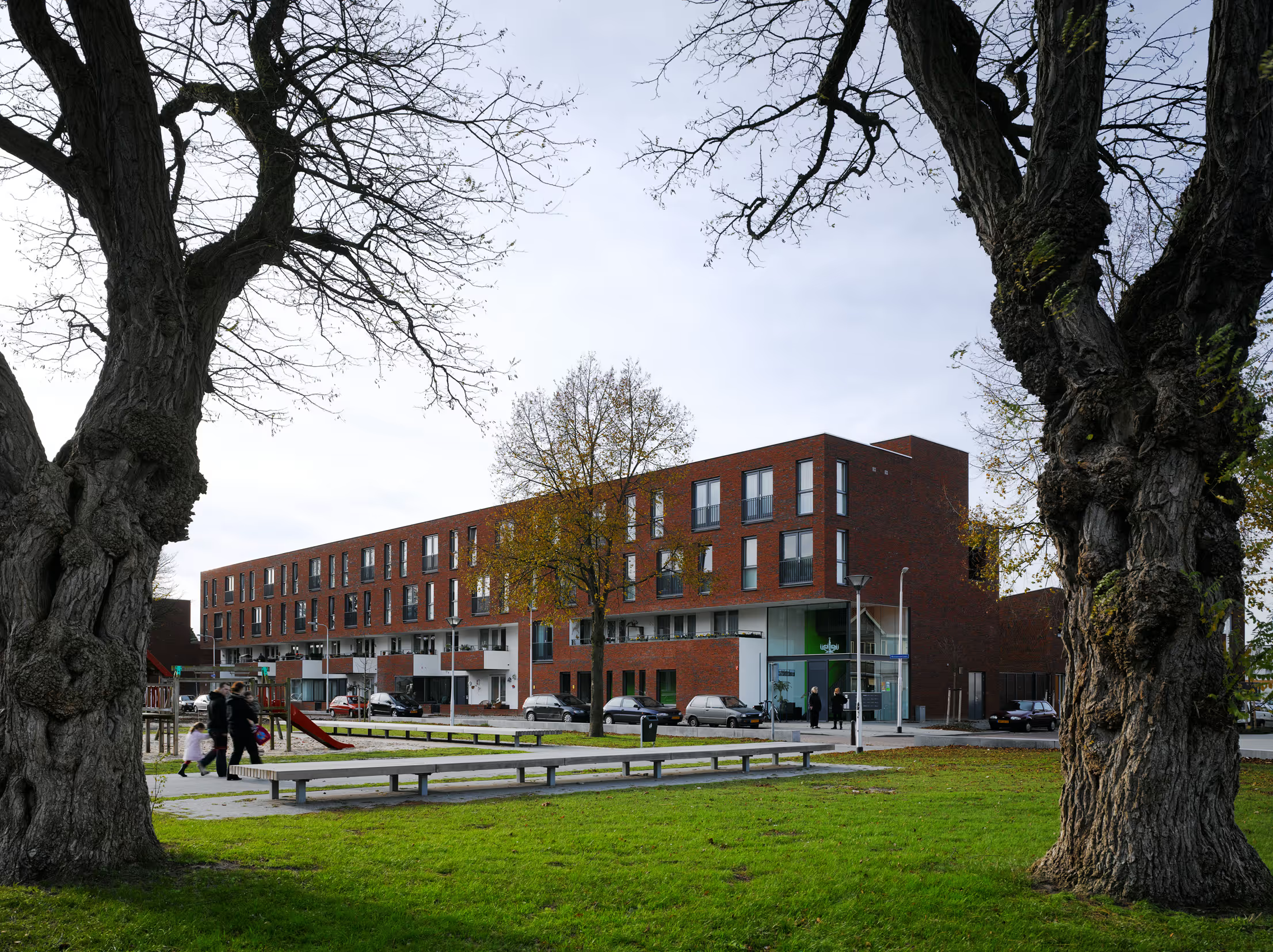
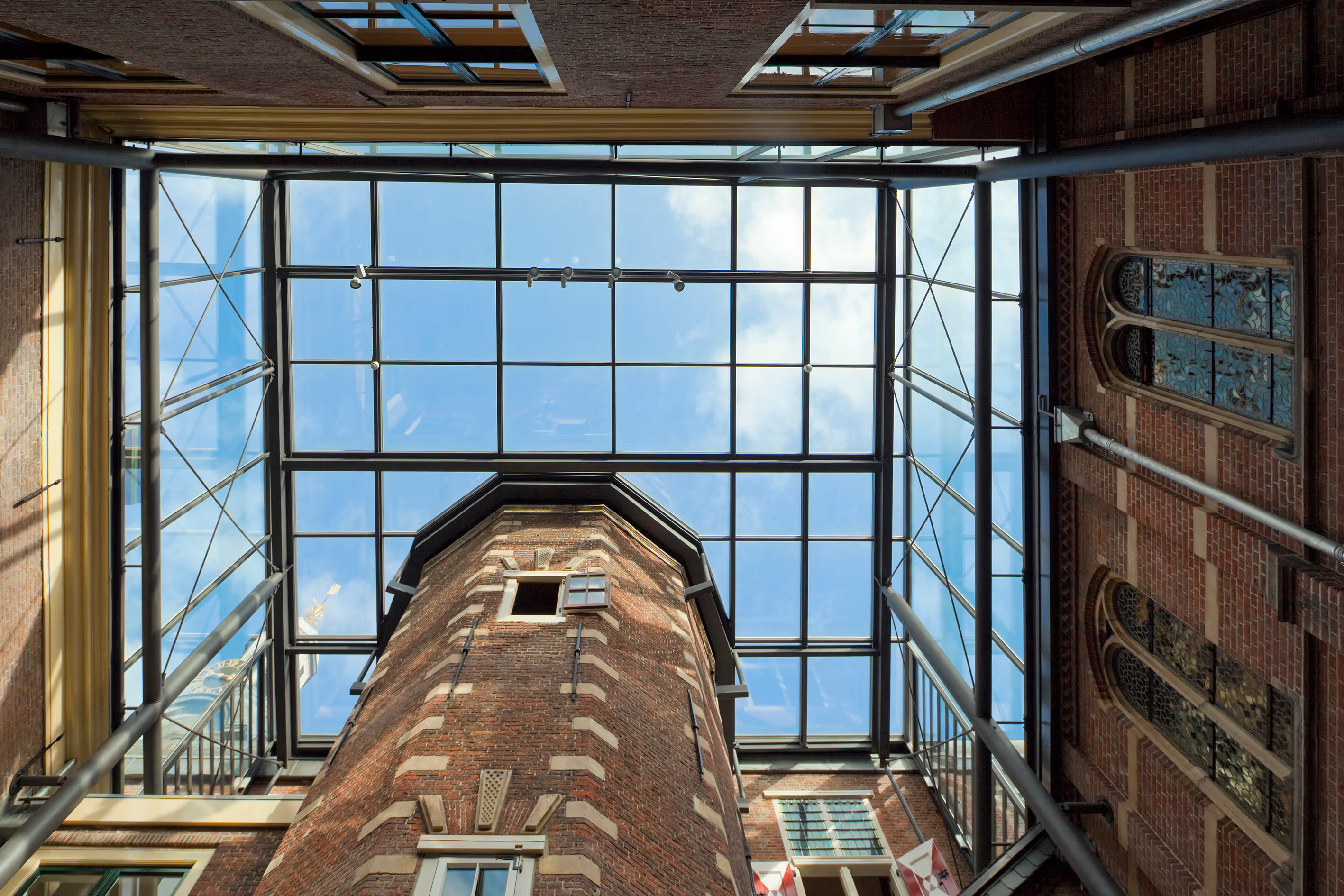

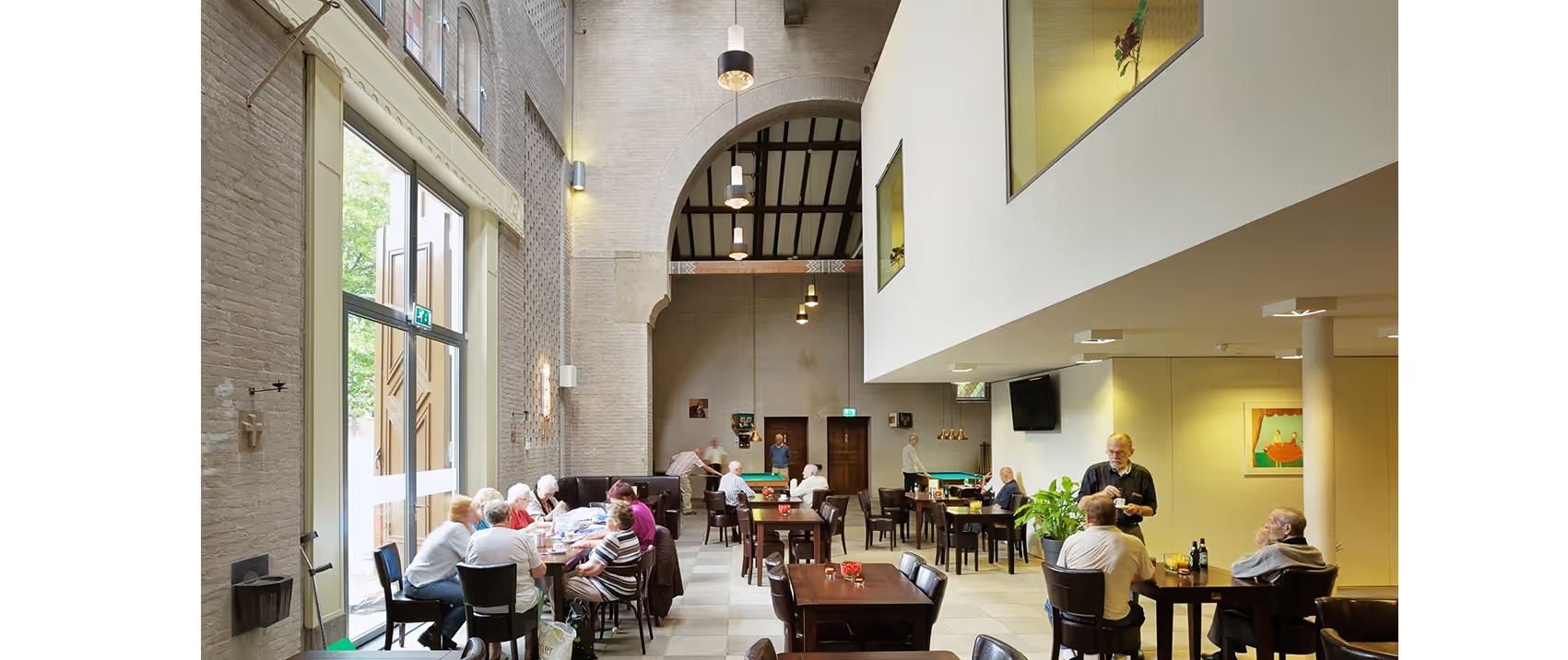

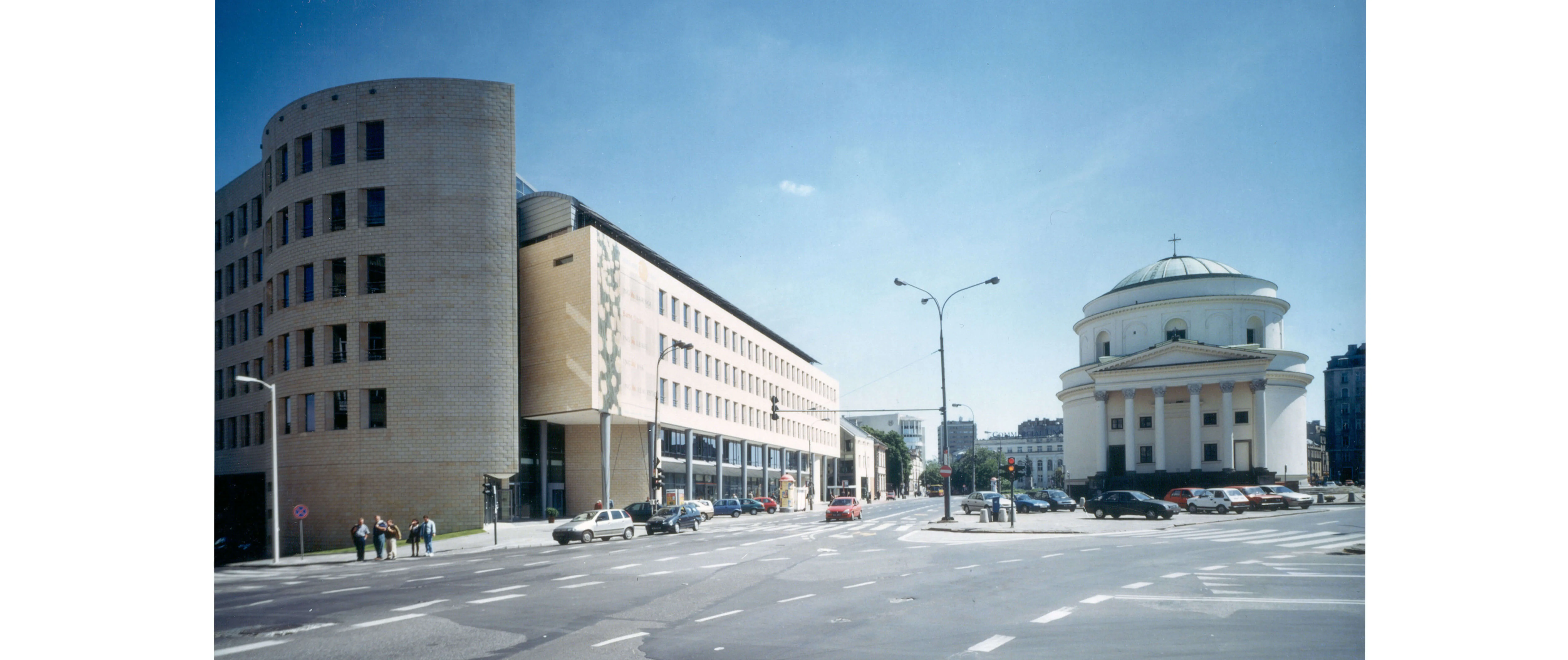

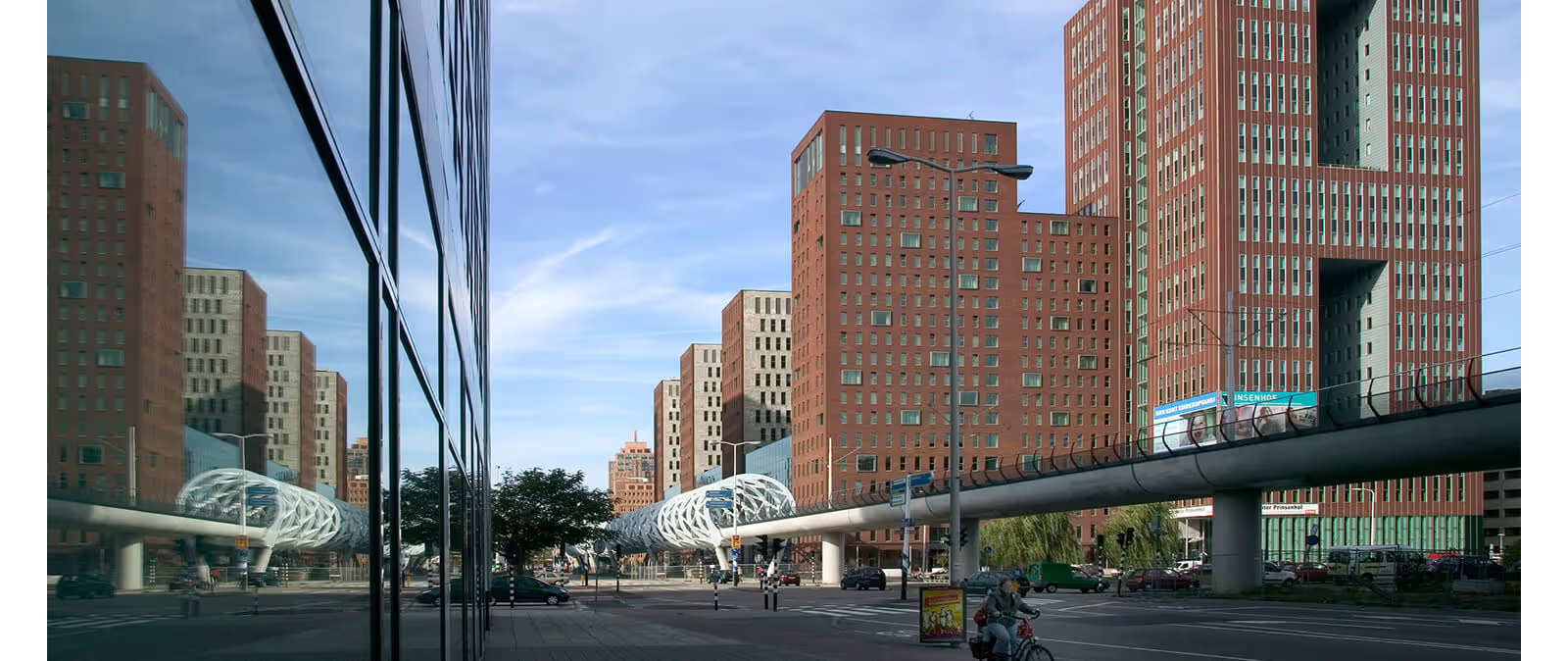
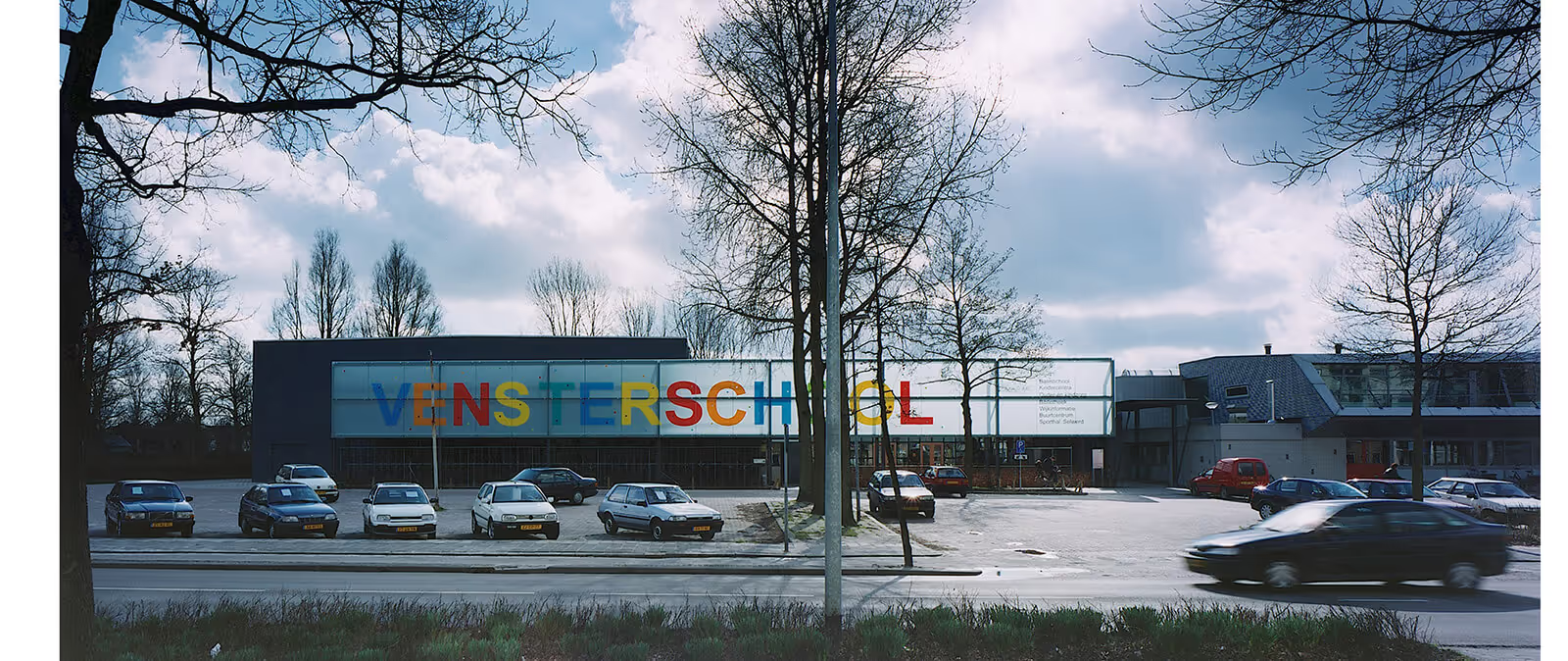

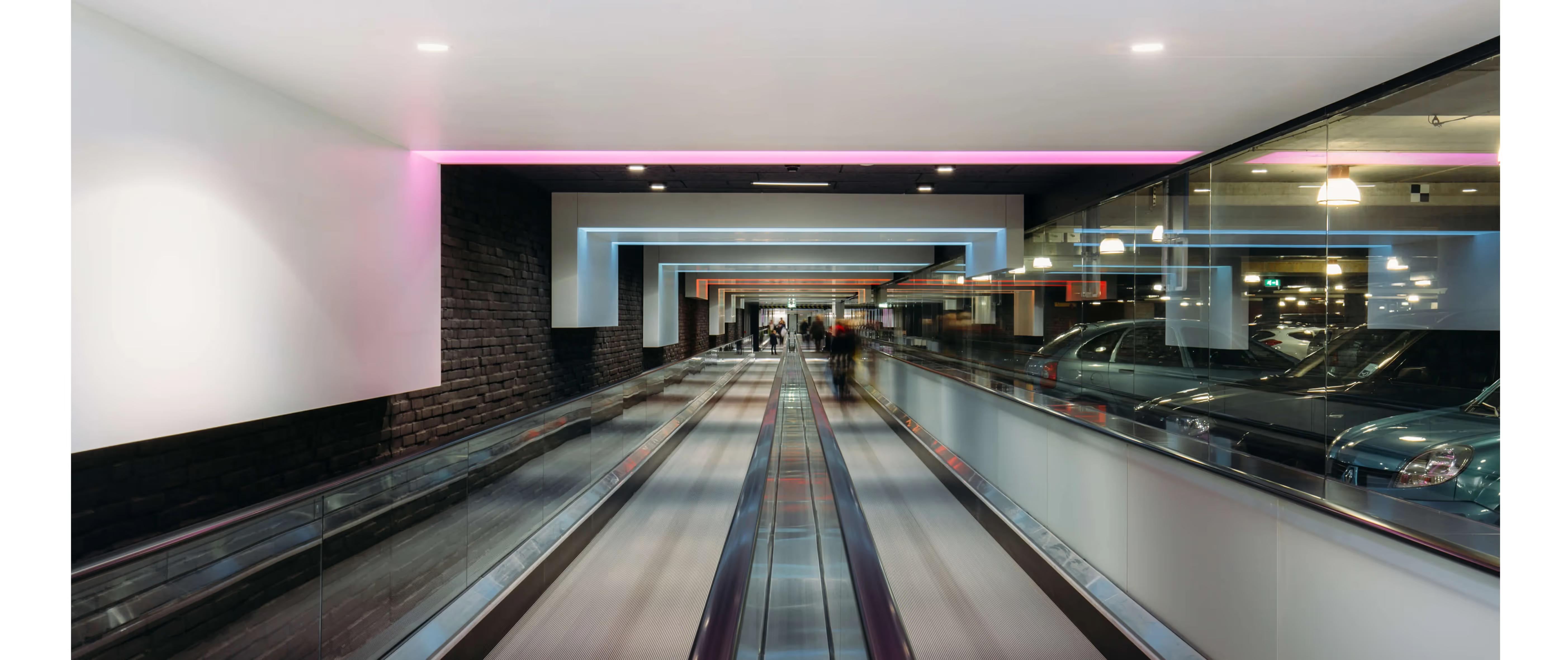

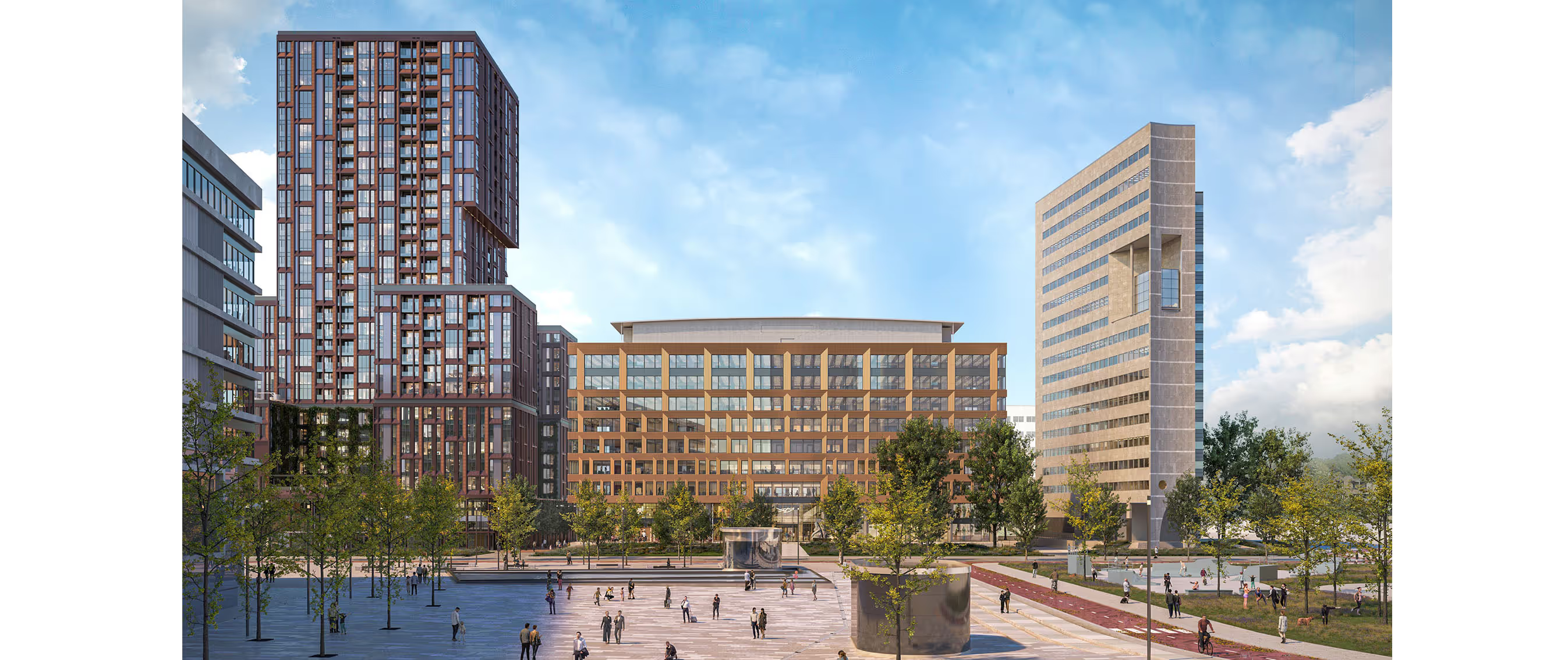

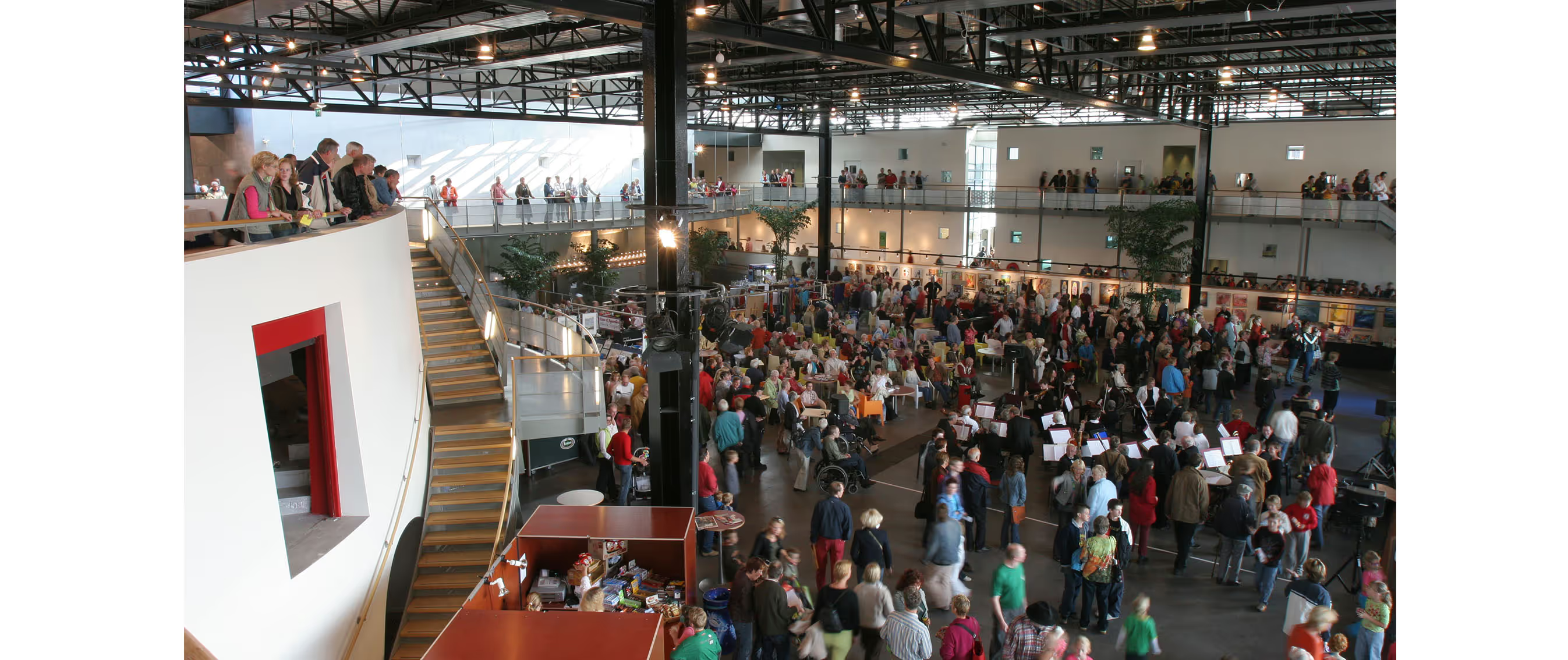
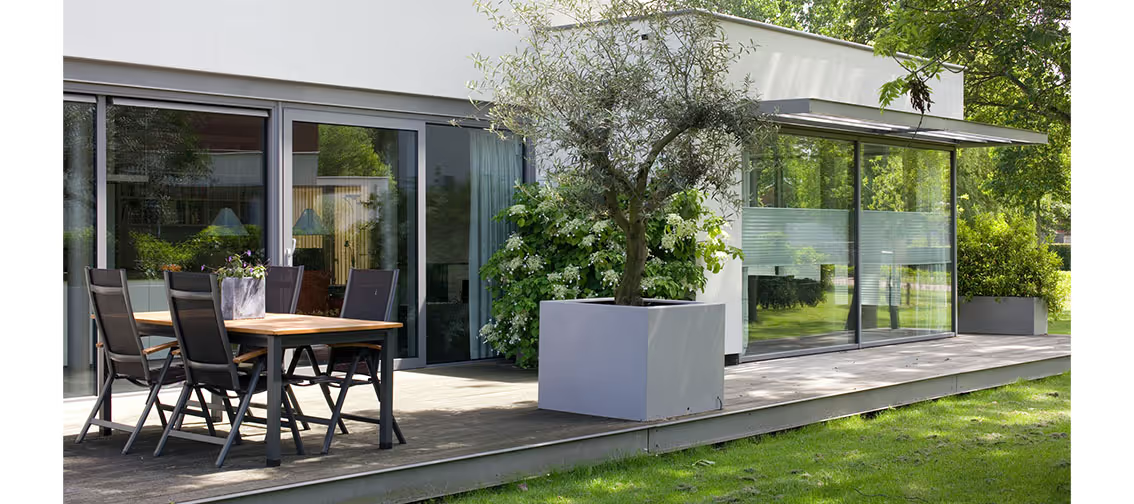
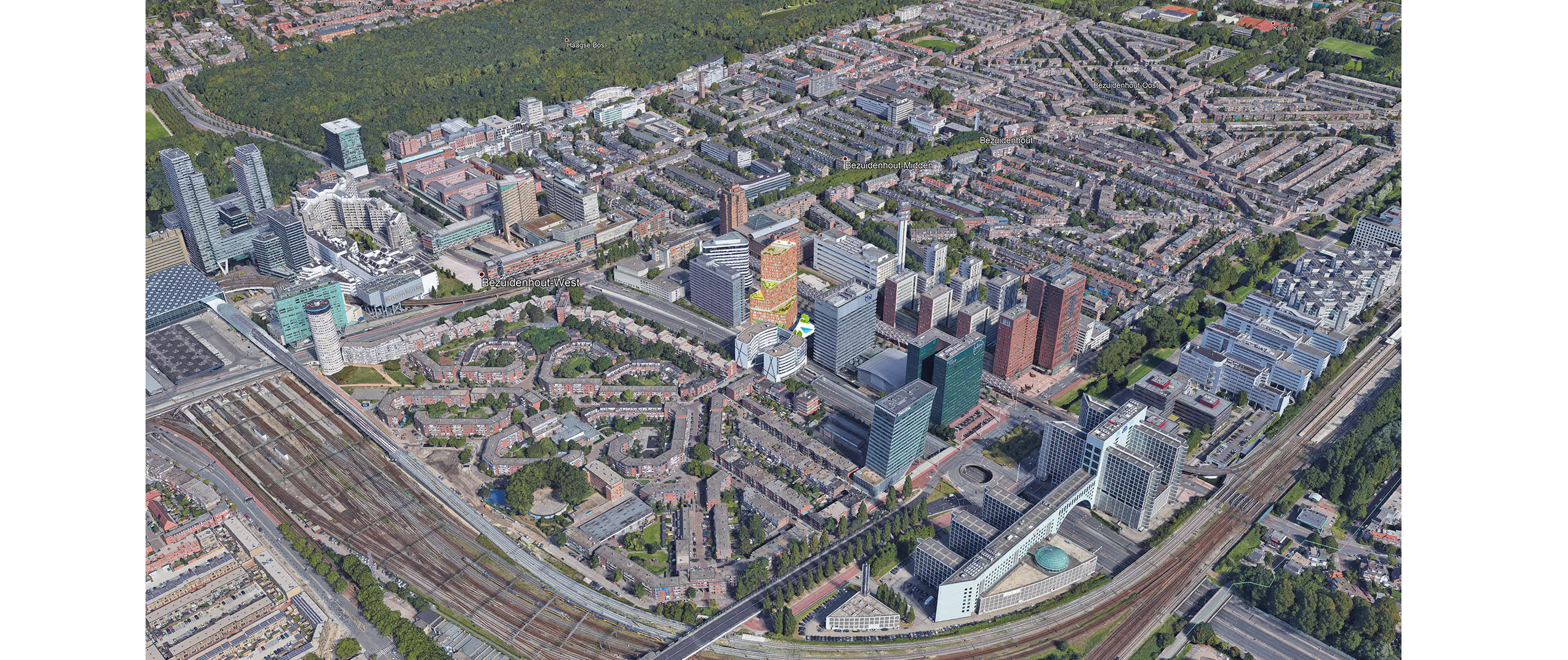


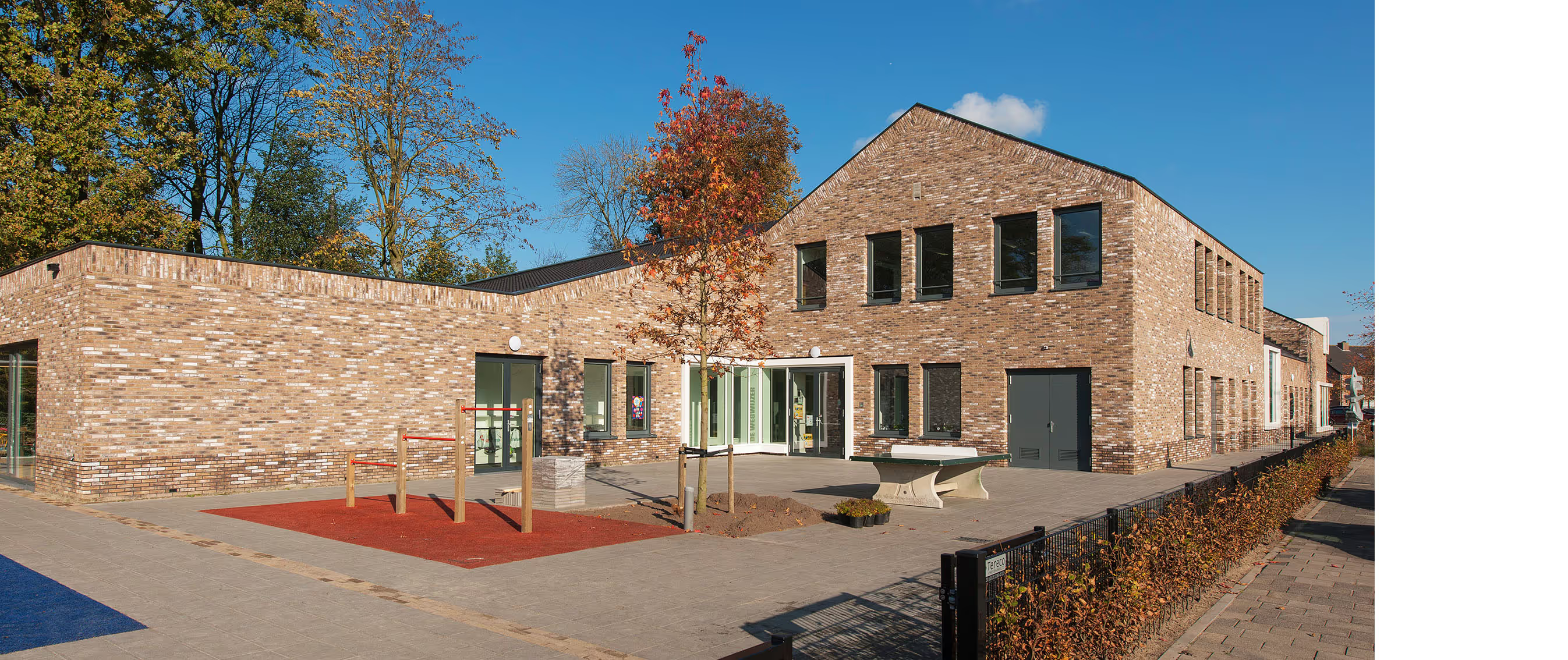

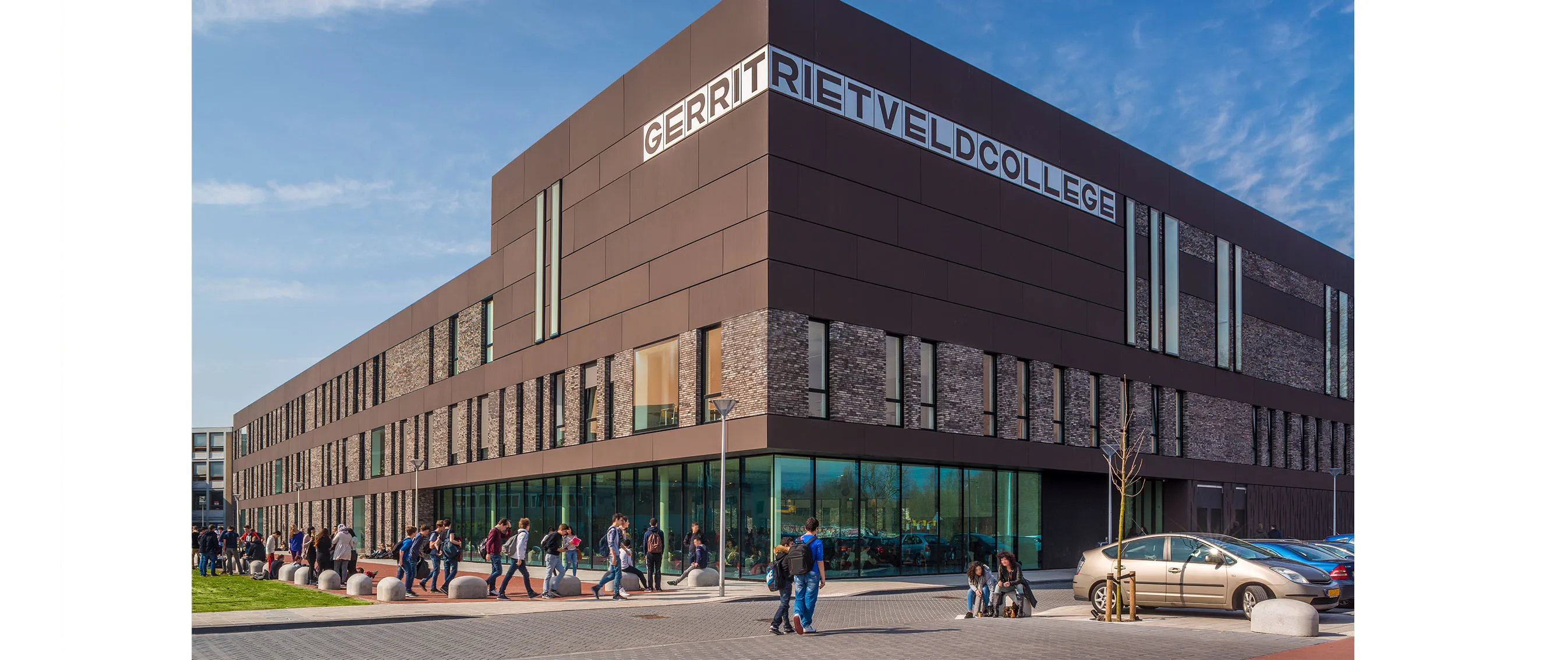

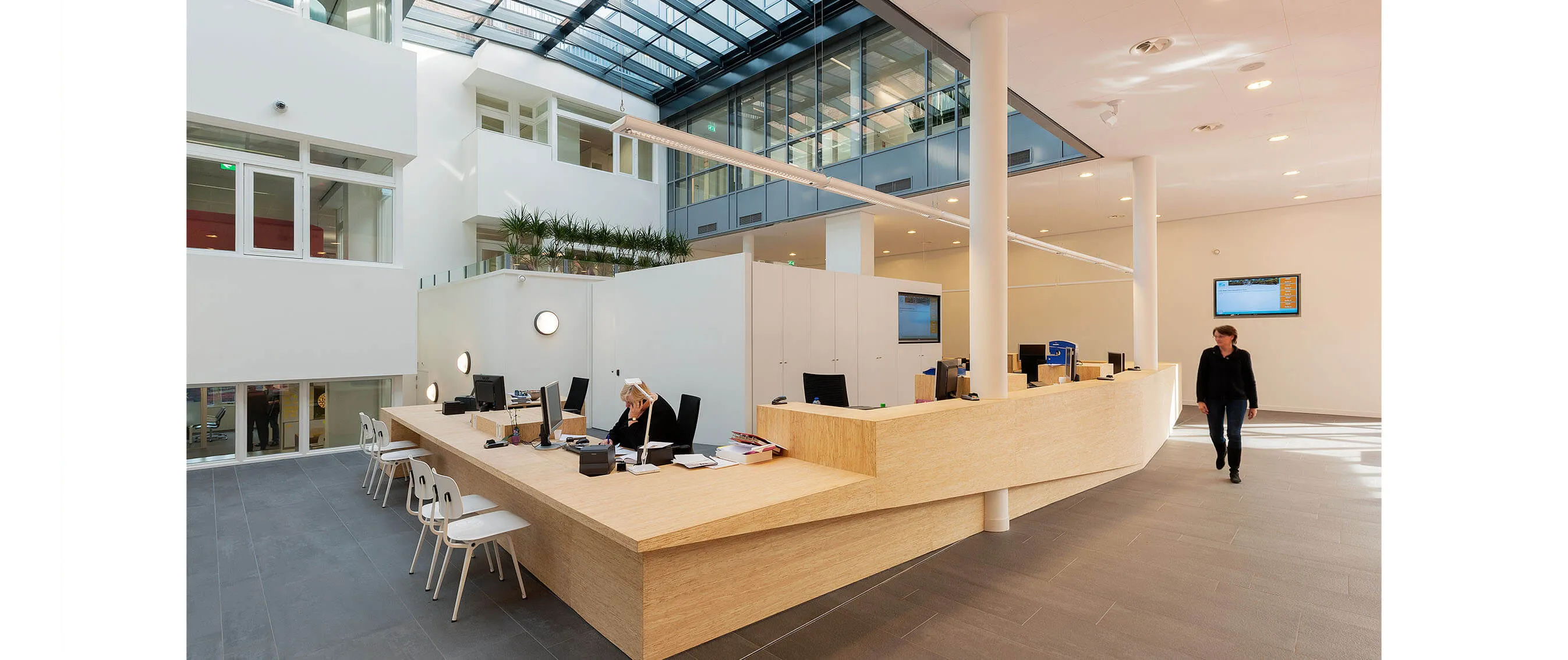
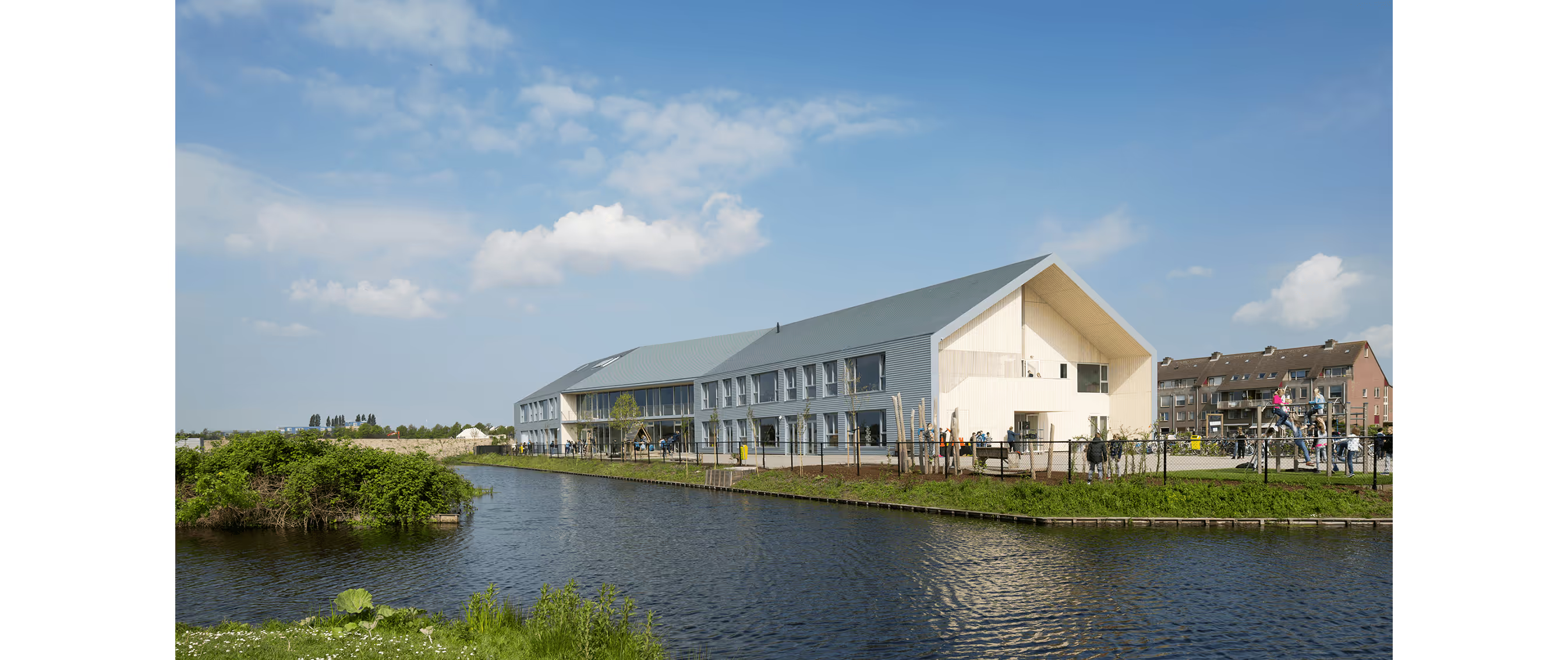

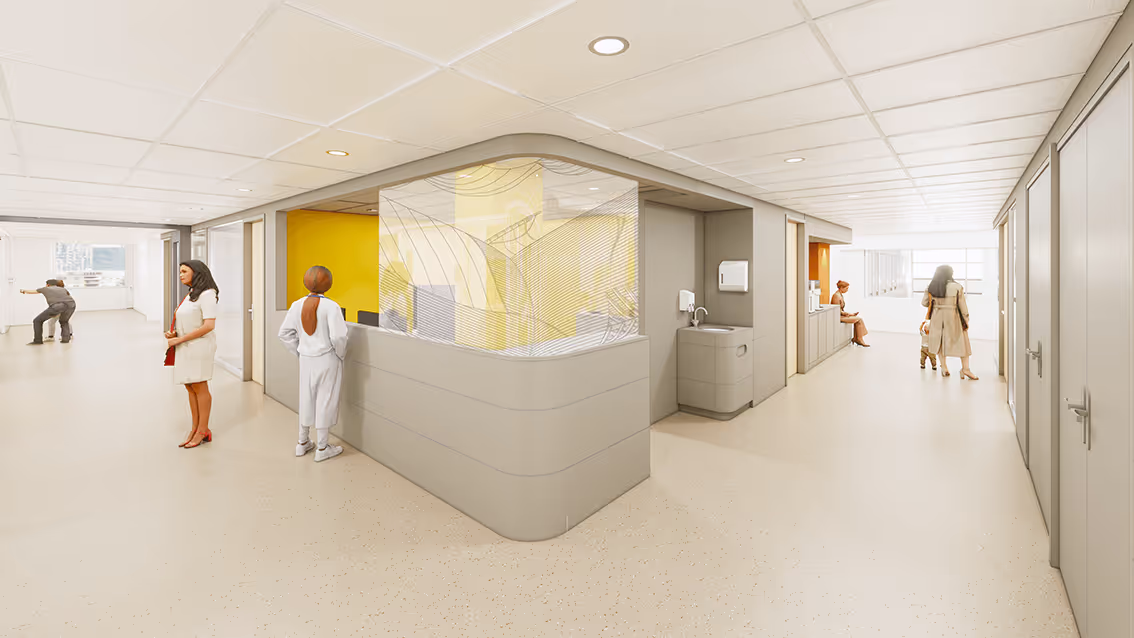
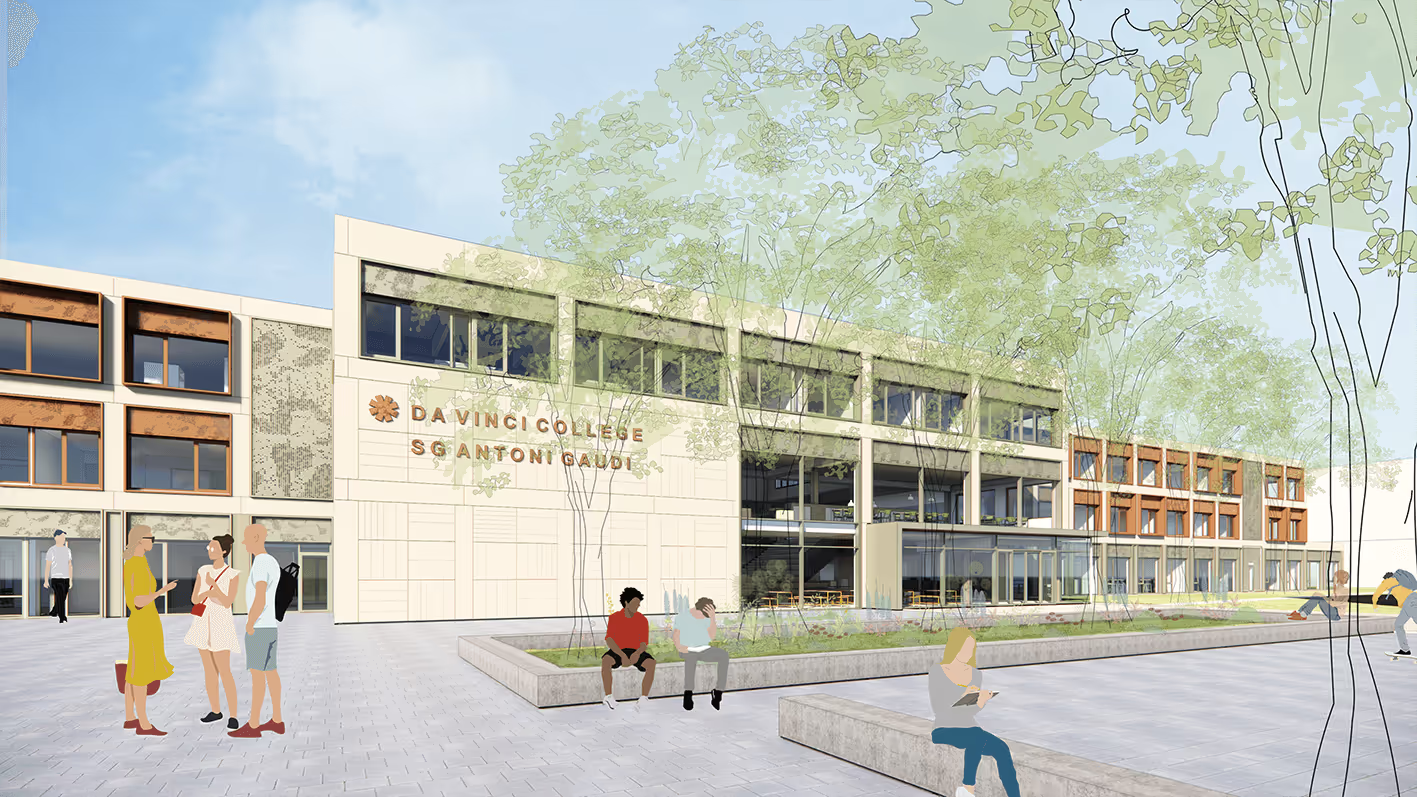
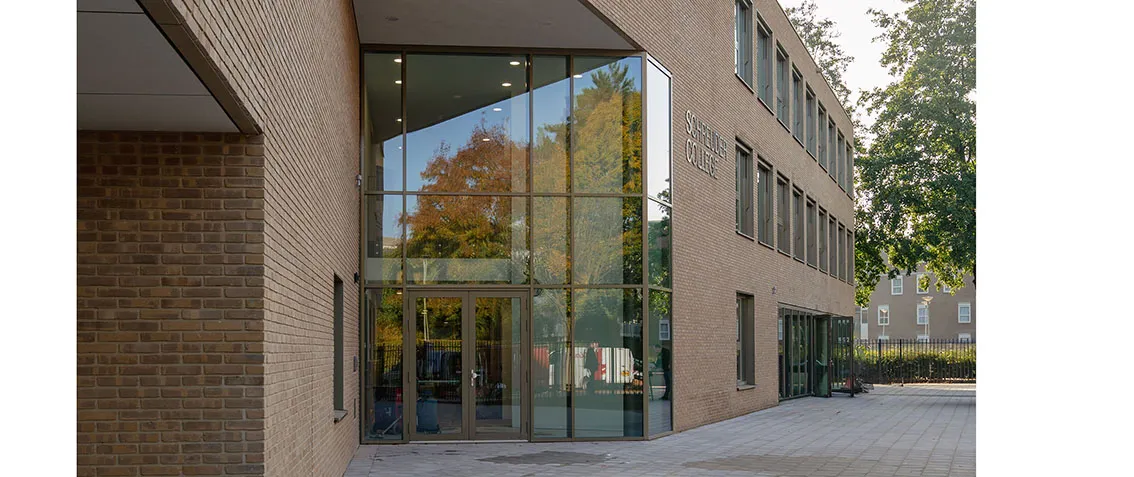
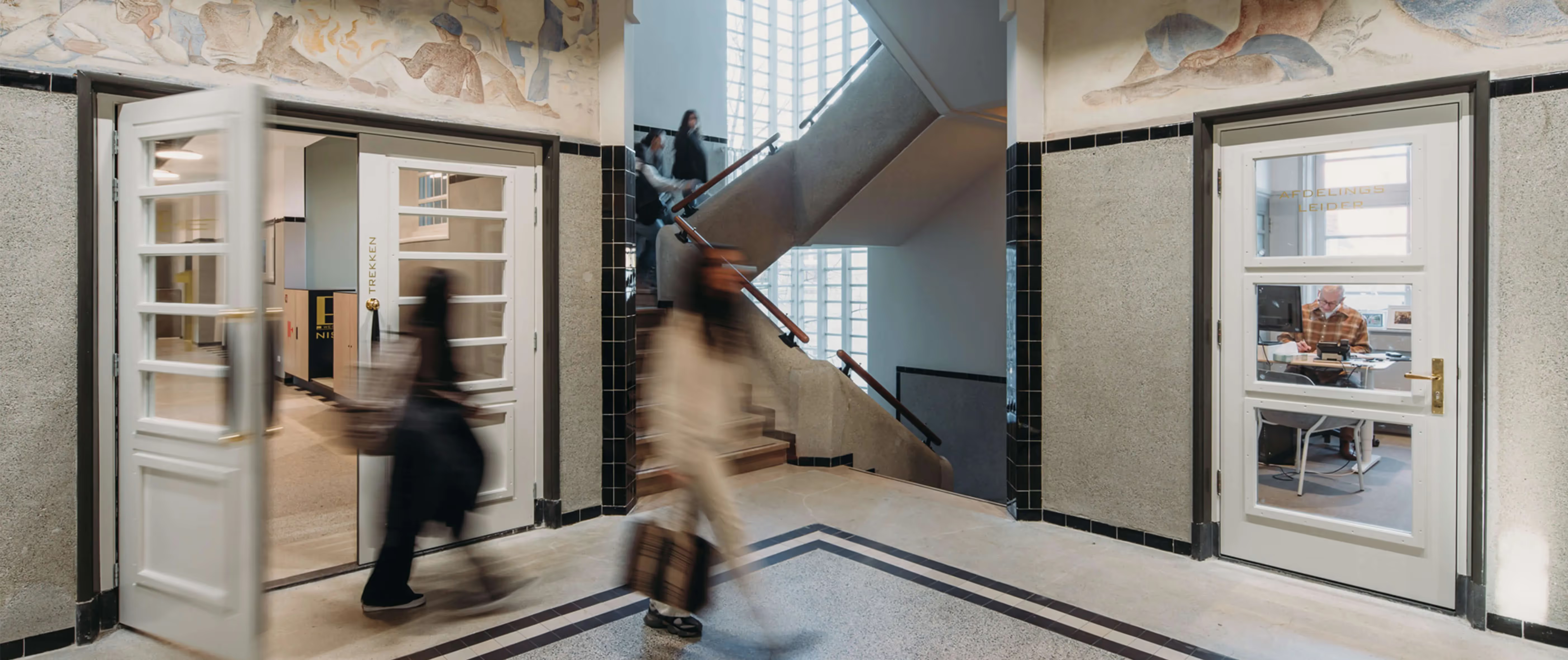
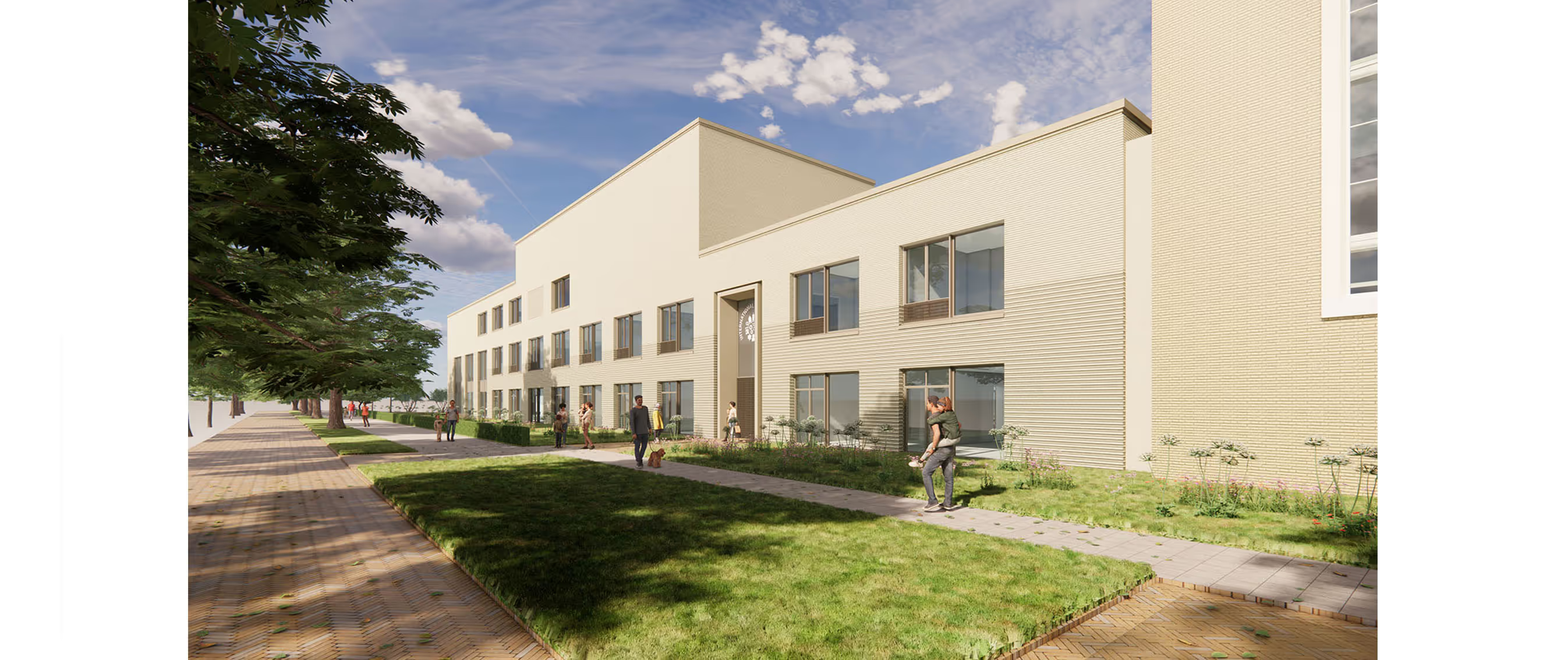

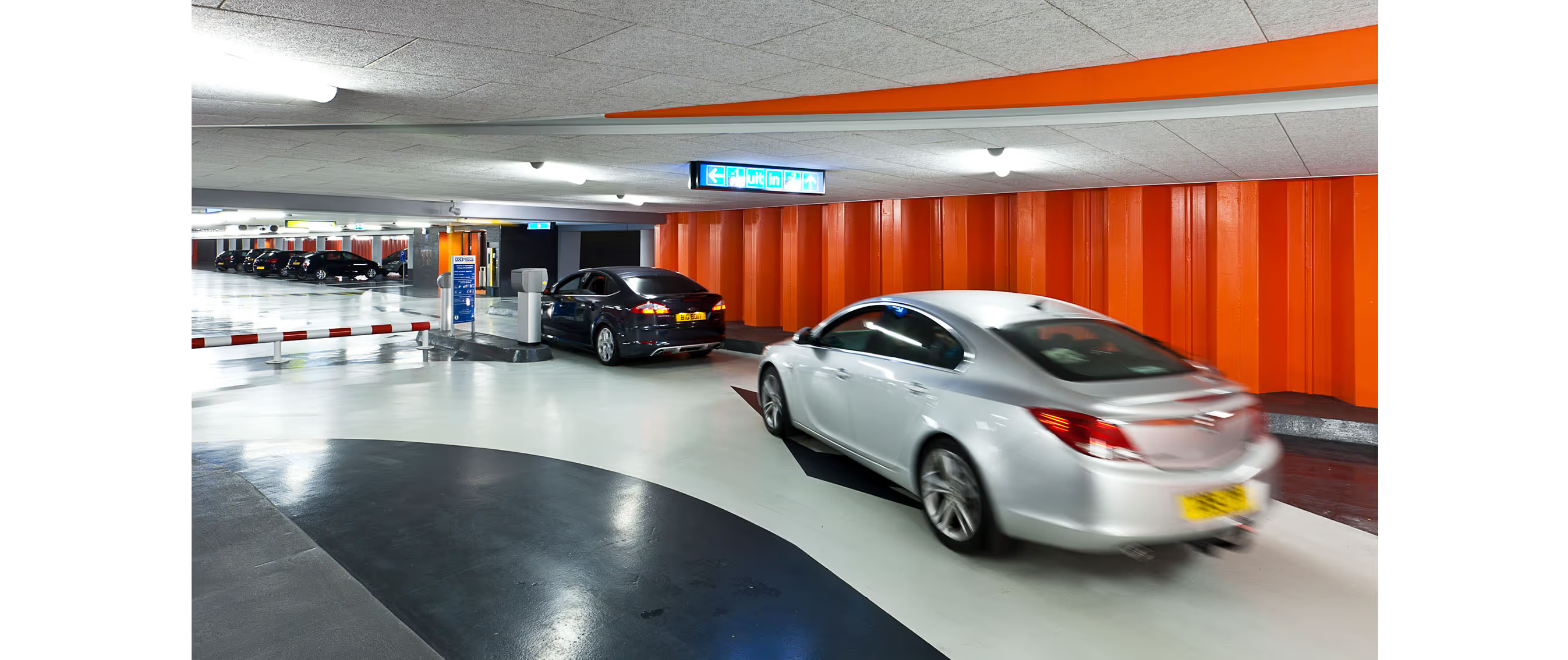
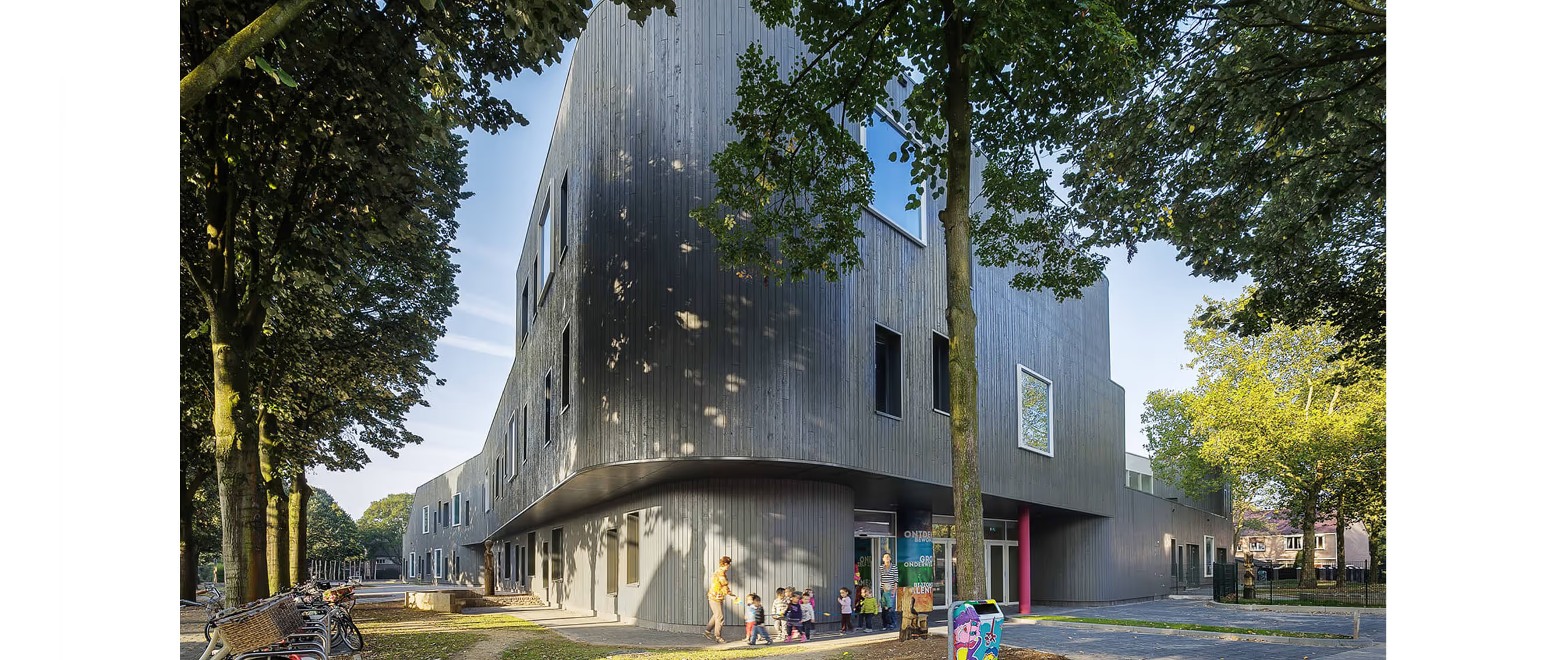
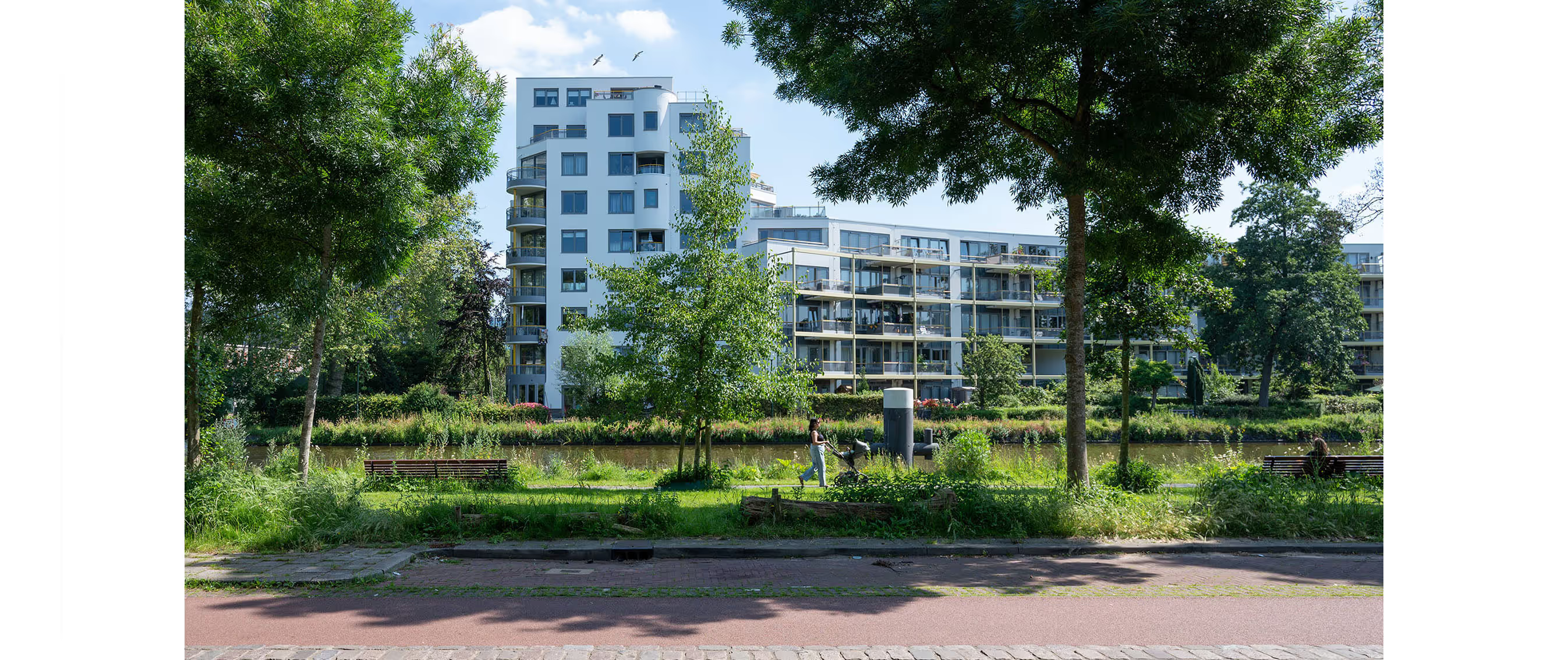
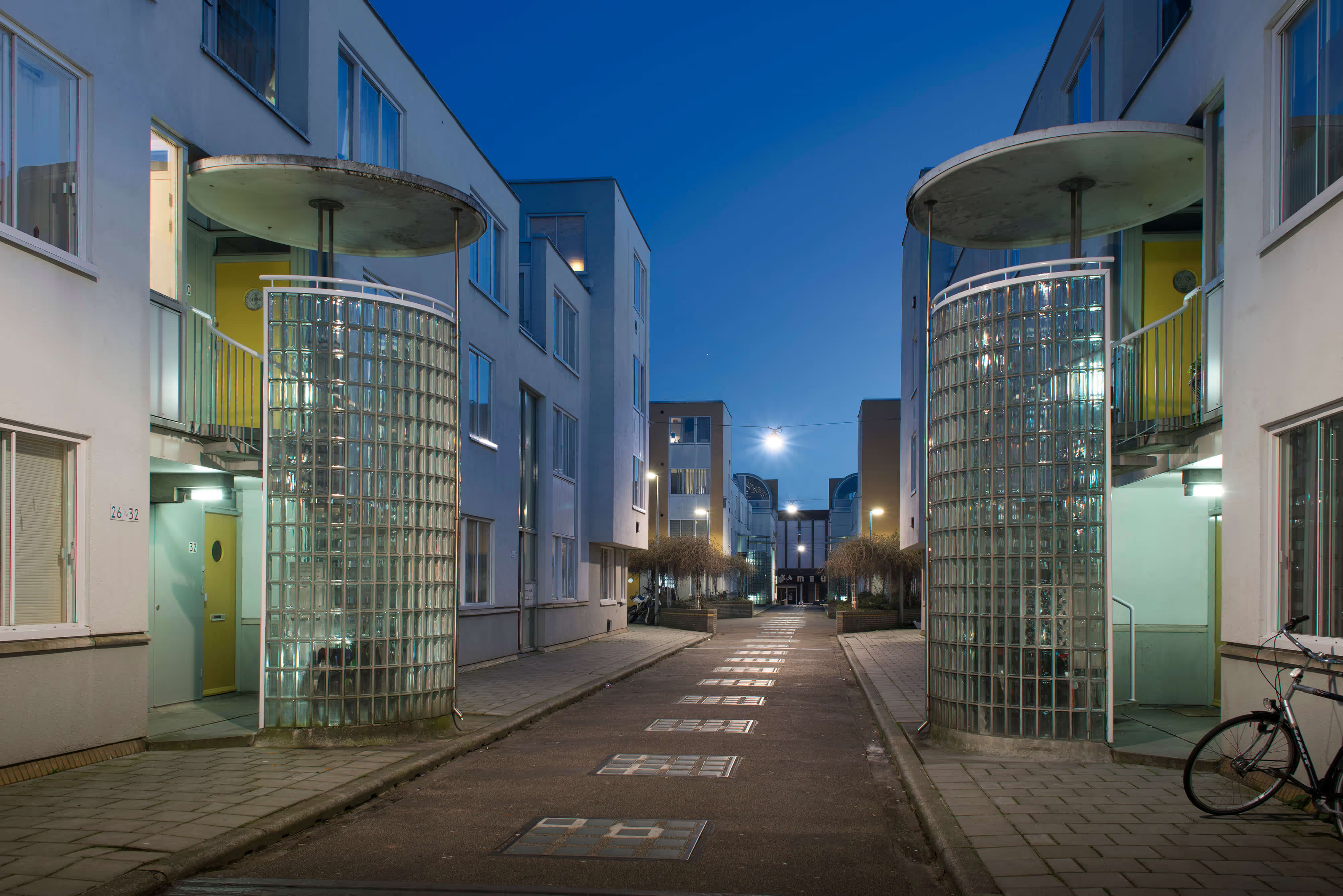
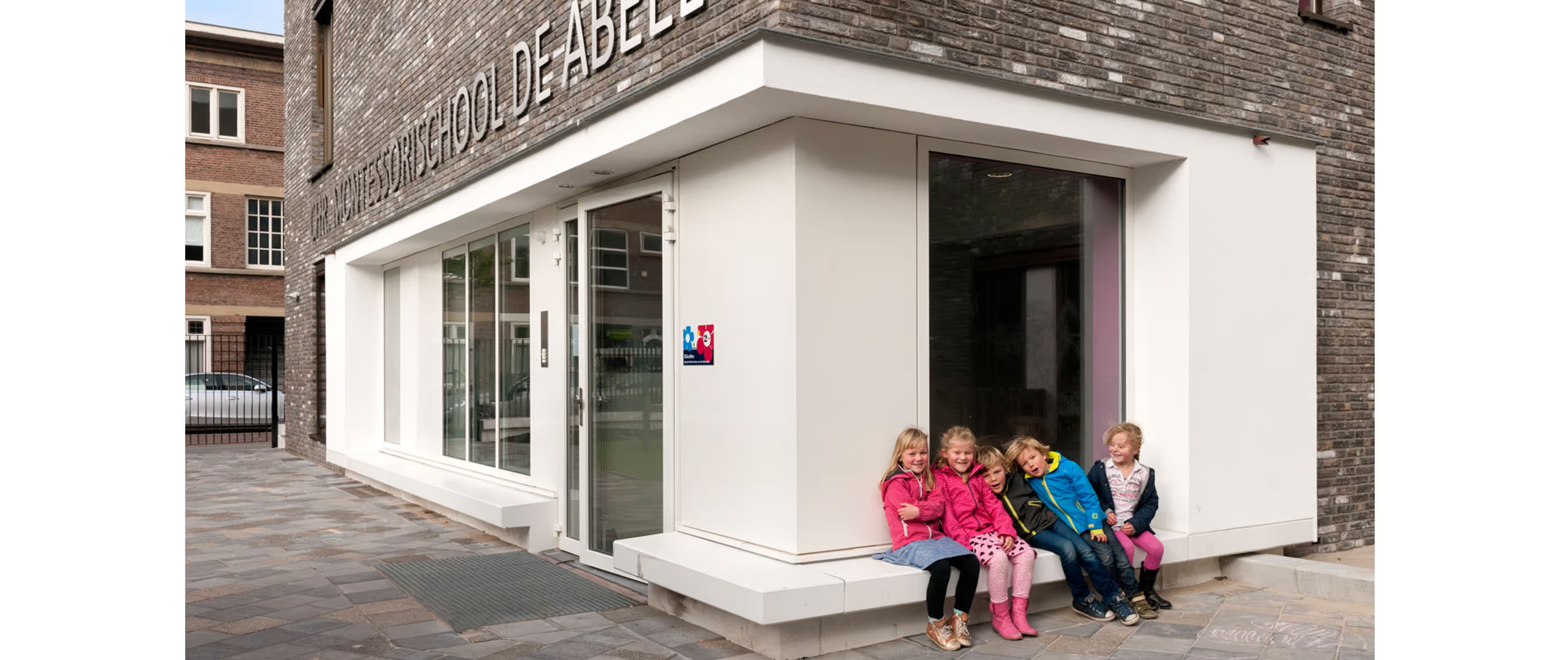
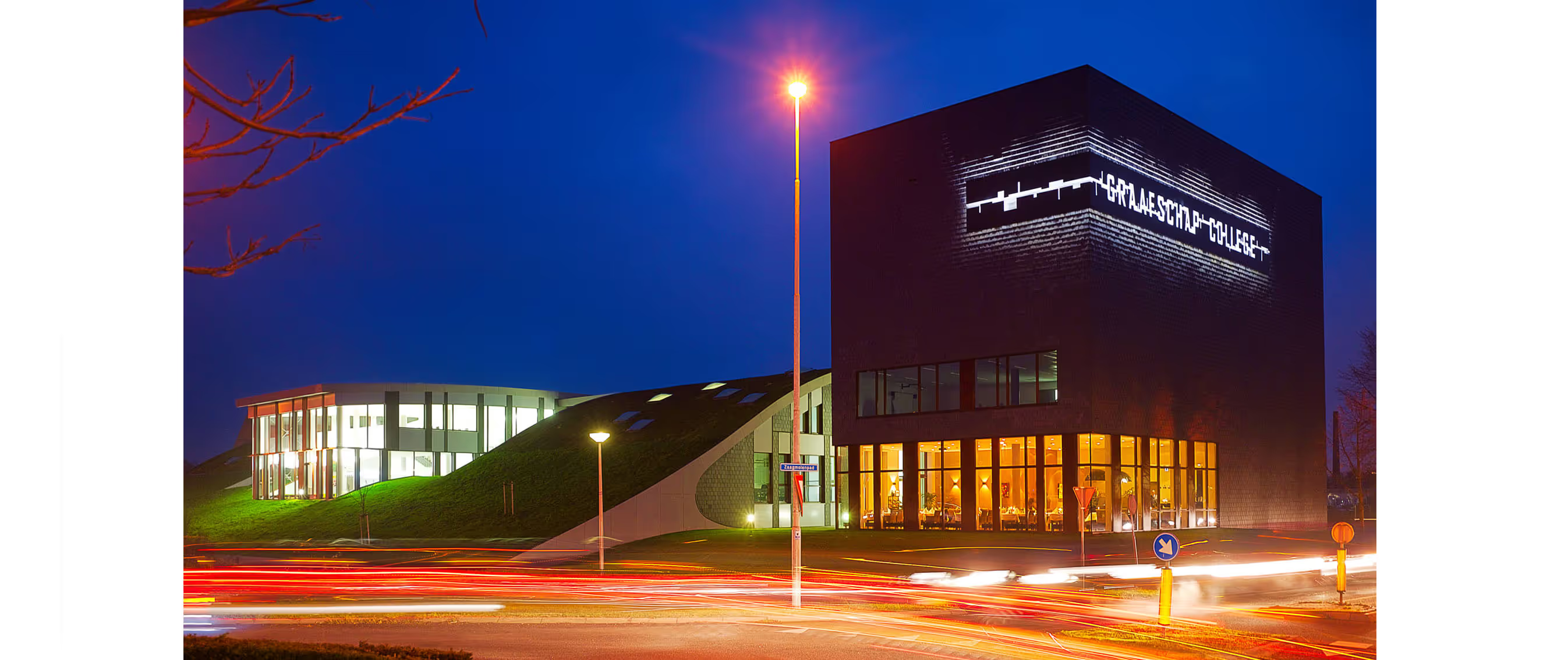
.jpg)

